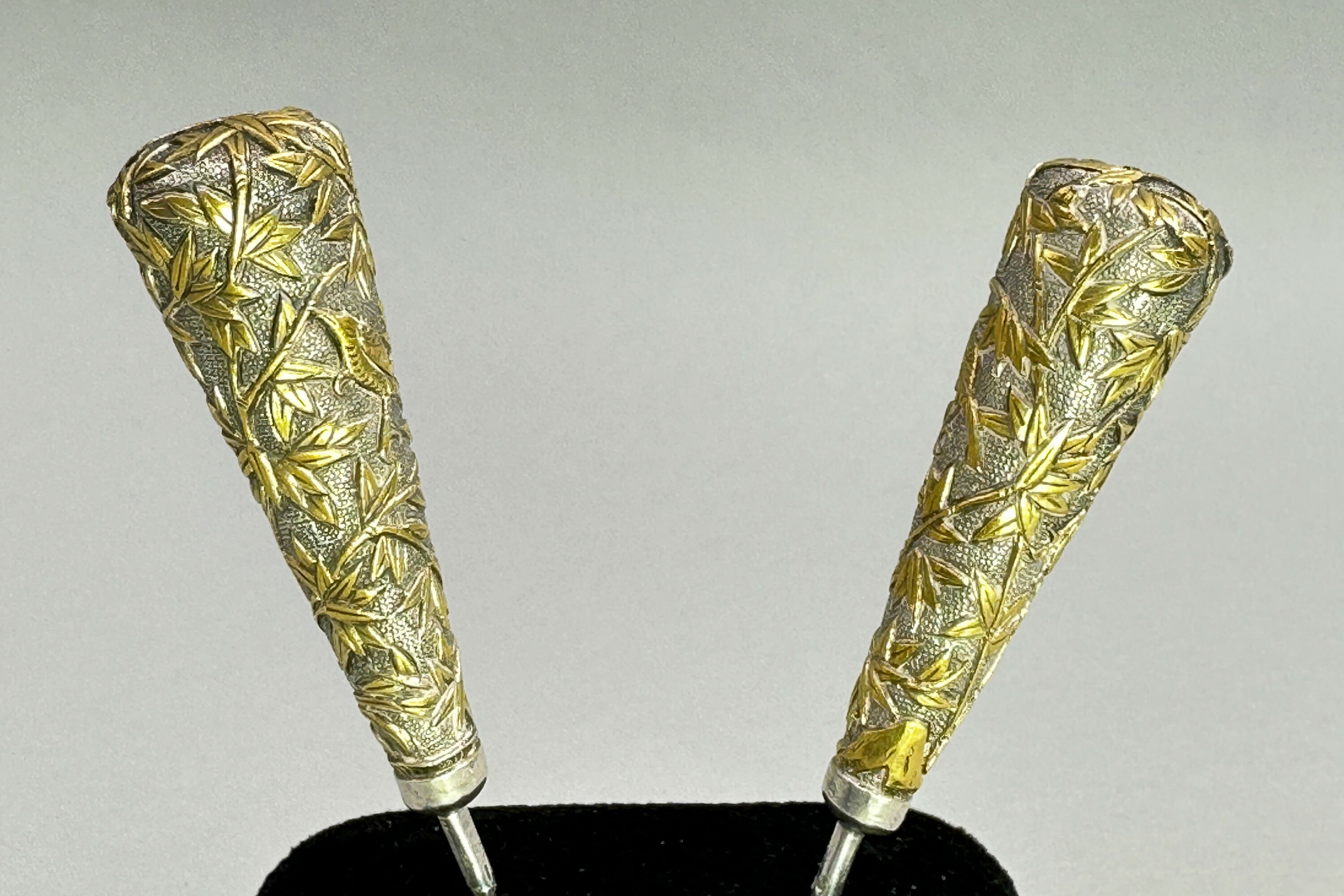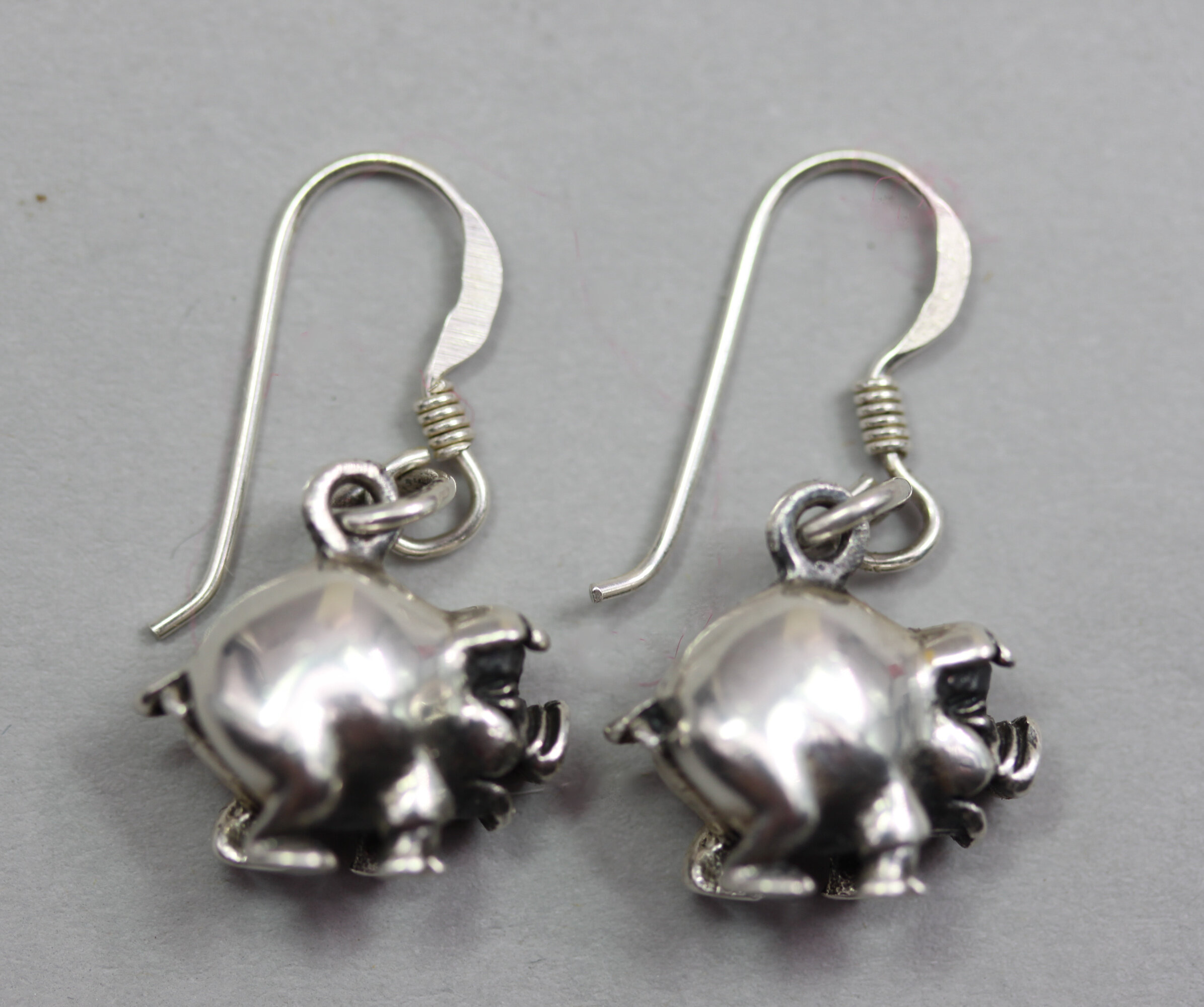
Charming pair of silver piglet earrings
Price: £25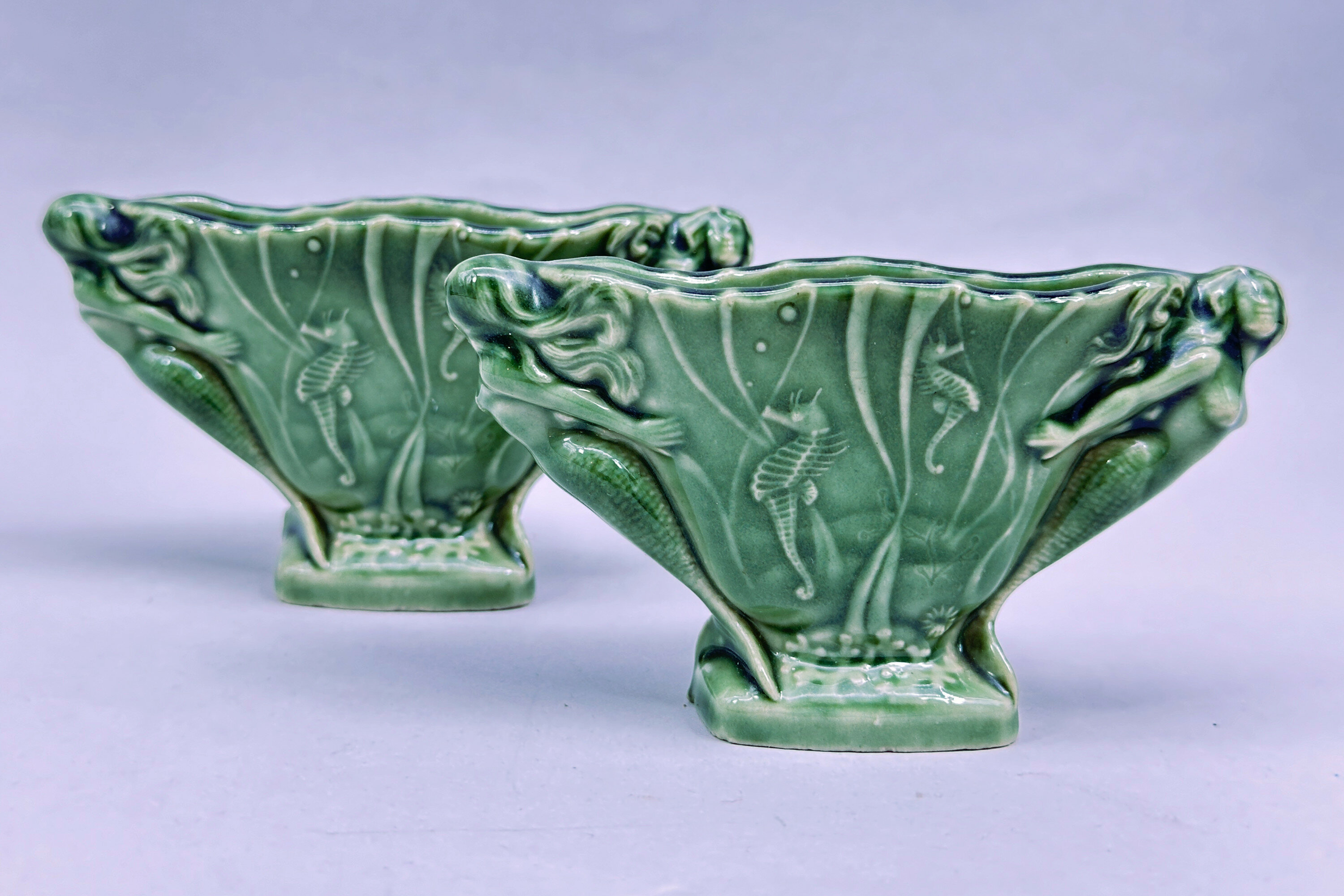
Pair of Wade green glazed Mermaid salts, 1950s
Price: £55Wade Ceramics Ltd was a manufacturer of porcelain and earthenware, headquartered in Stoke-on-Trent, England. Founded in 1867, it was run by various members of the Wade family until the death of George Anthony Wade in 1987 after which there was a succession of management buyouts. Despite substantial investment in 2009, the firm eventually went into administration in 2022. Wade produced a wide variety of ceramics, including the well known Wade Whimsies animal figurines.
This pair of salts is rather different to many of their productions and have a distinctly ‘Art Nouveau’ feel but, in fact, date to the 1950s when this particular format of the factory mark was used. It seems to be one of the rarer forms and pairs are even rarer still, so definitely one for Wade collectors!
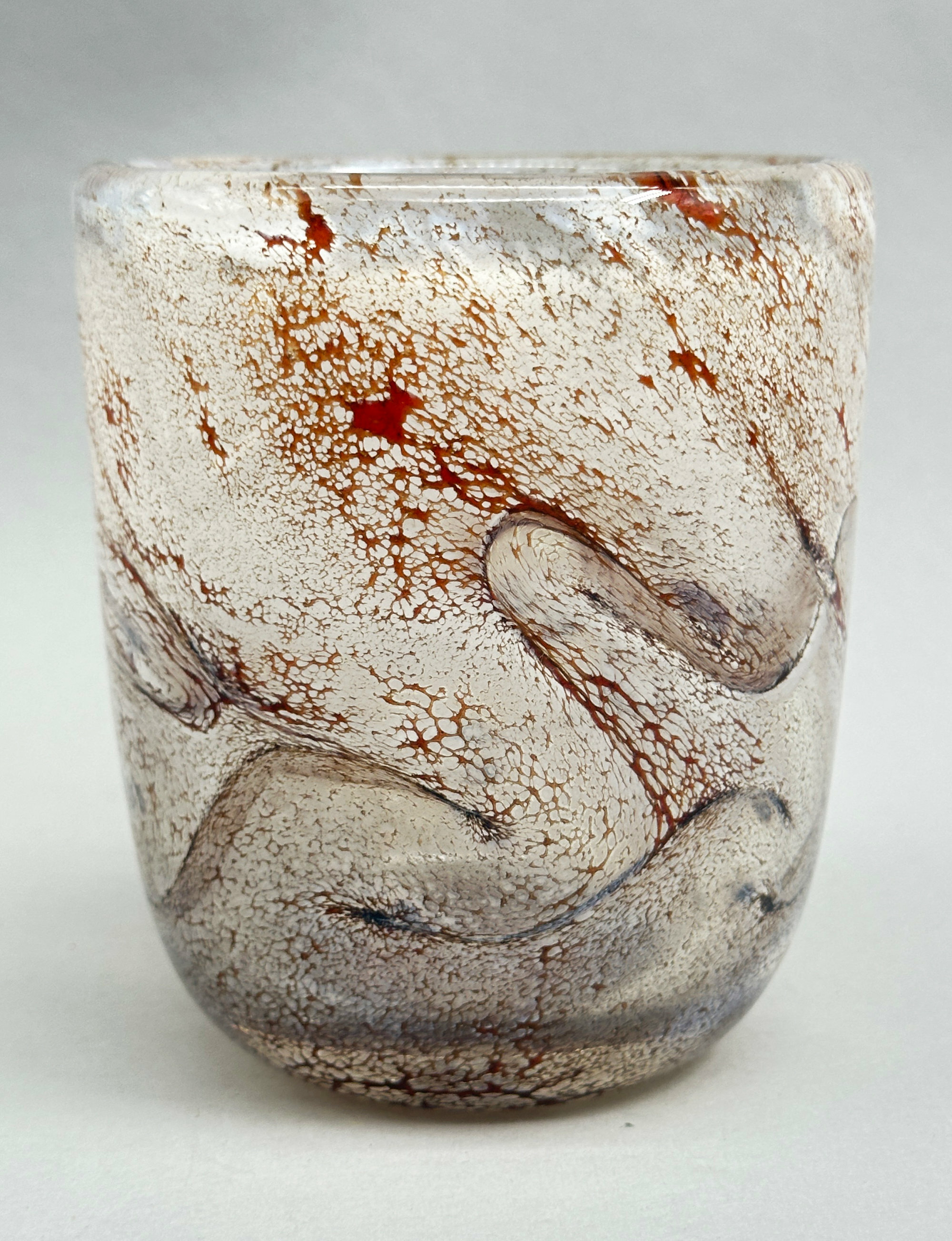
Uredale Glass Vase, late C20th/early C21st
Price: £55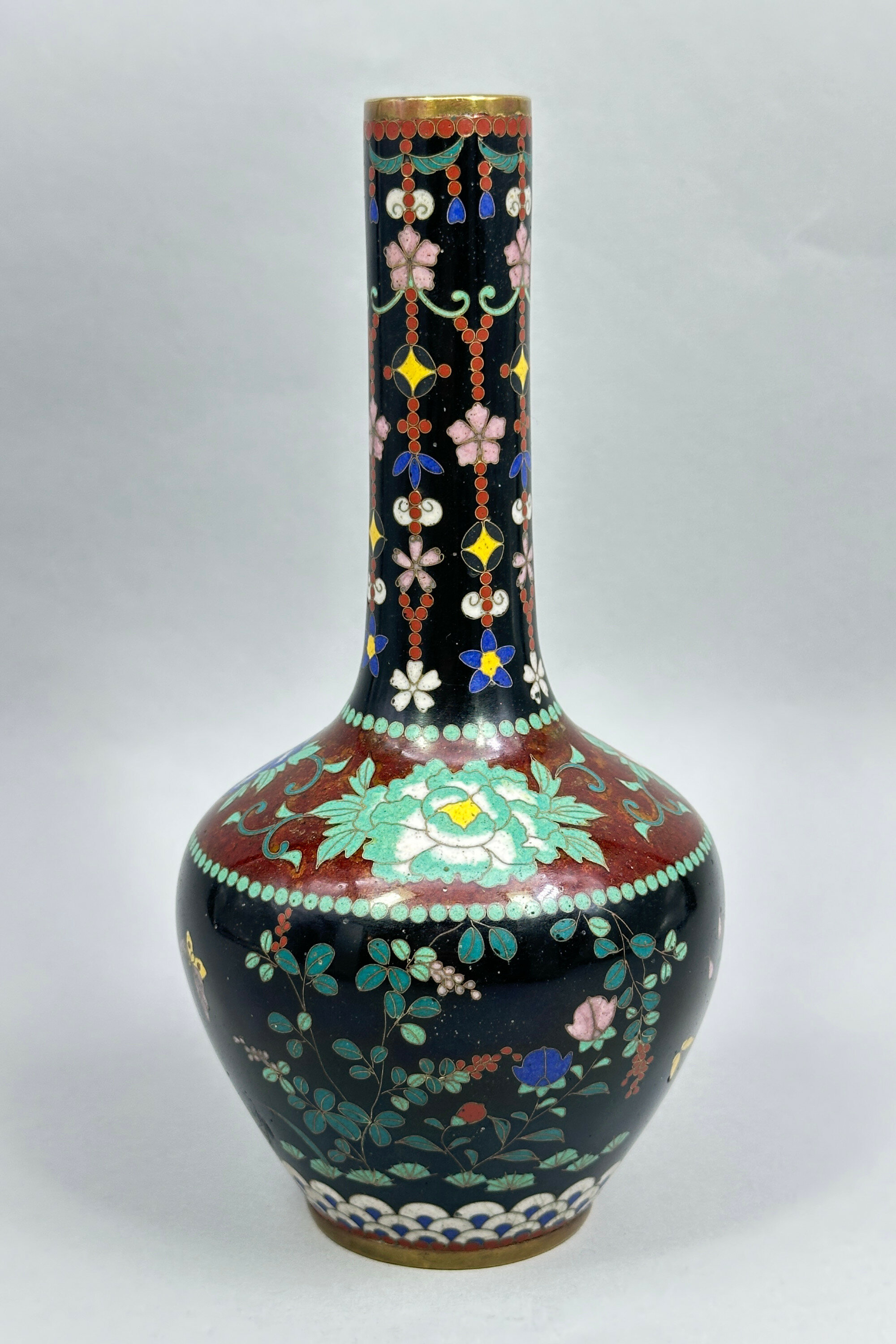
Fine quality Japanese Cloisonne bottle form Vase with black ground, late C19th
Price: £45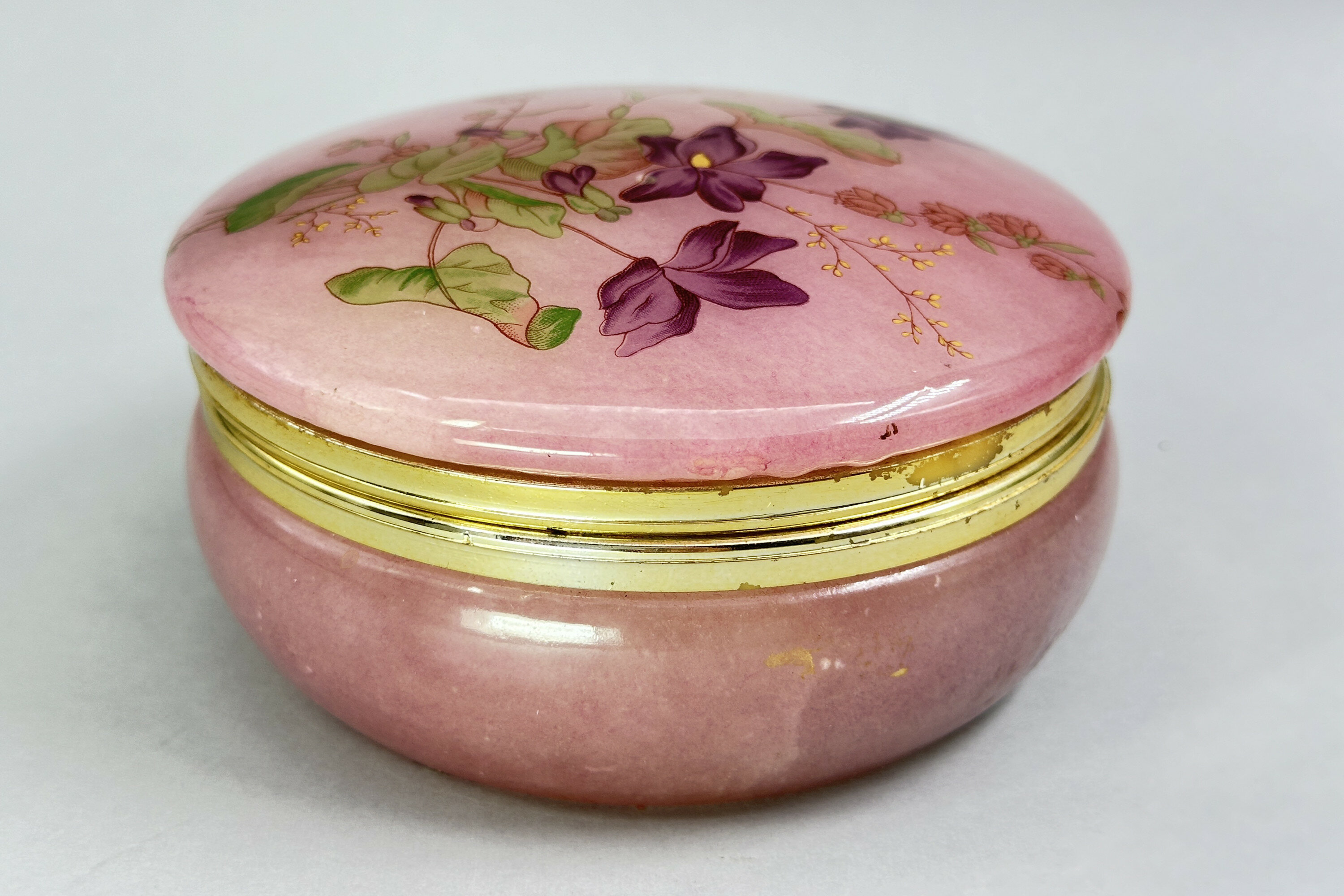
Pink Alabaster Box and Cover, Italy late c20th
Price: £25
Edwardian large text magnifying glass with horn handle, early C20th
Price: £25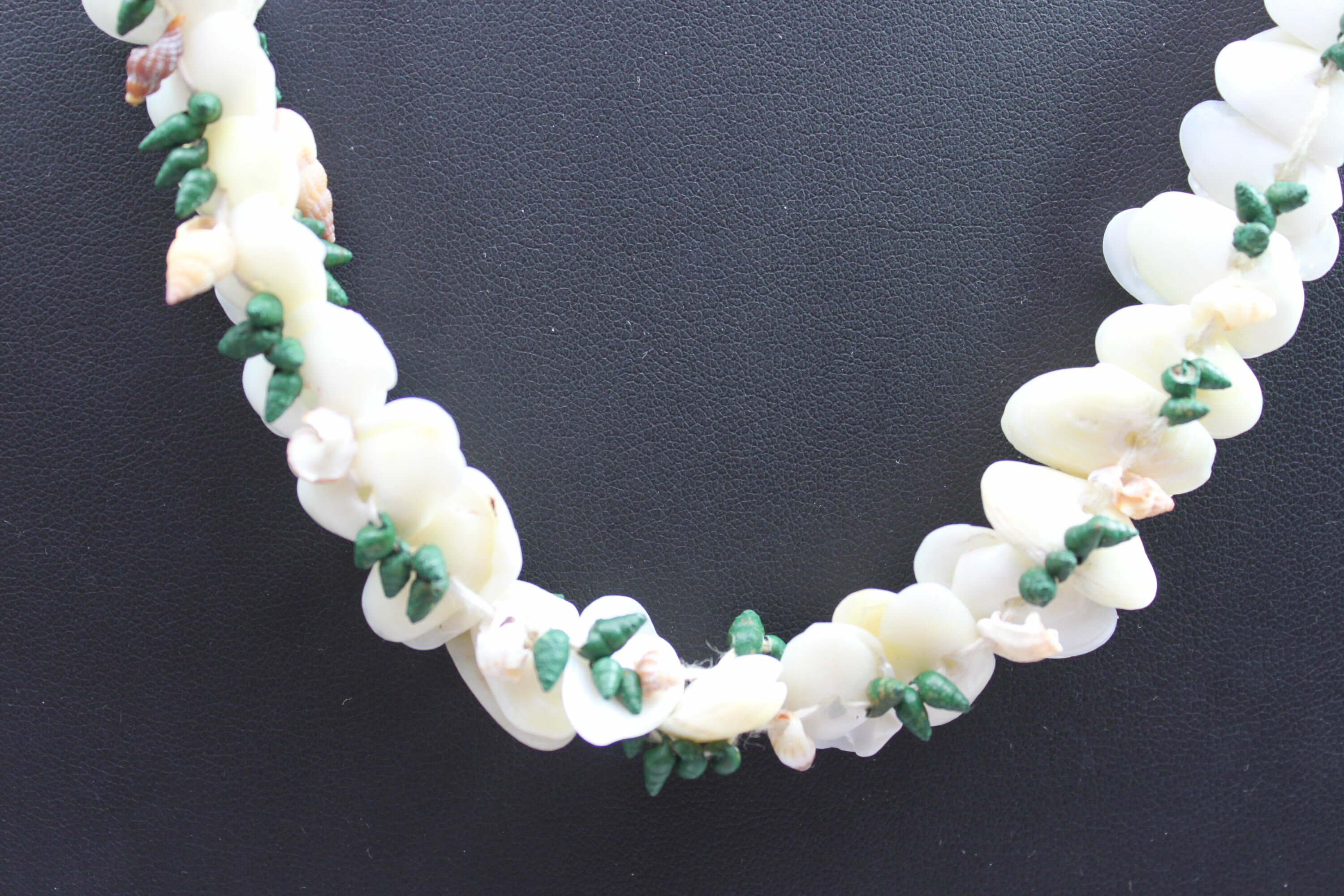
Fun vintage souvenir shell necklace 1960s
Price: £15PLEASE NOTE THAT THERE IS FREE UK SHIPPING ON THIS ITEM. For international buyers the shipping cost will be reduced by the UK shipping cost, so don't worry if you are outside the UK, you still receive this benefit!
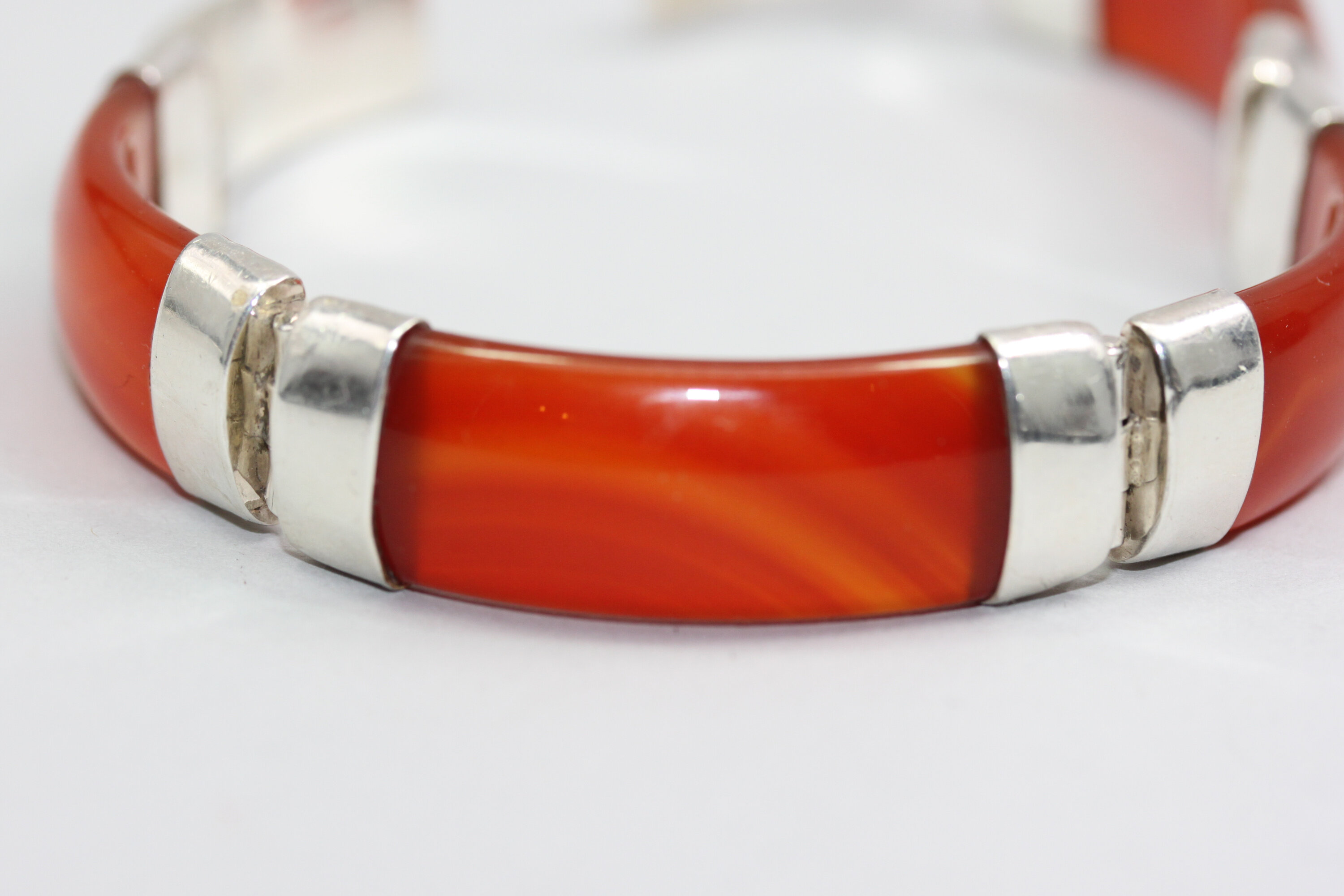
Beautiful Chinese carnelian silver bracelet
Price: £75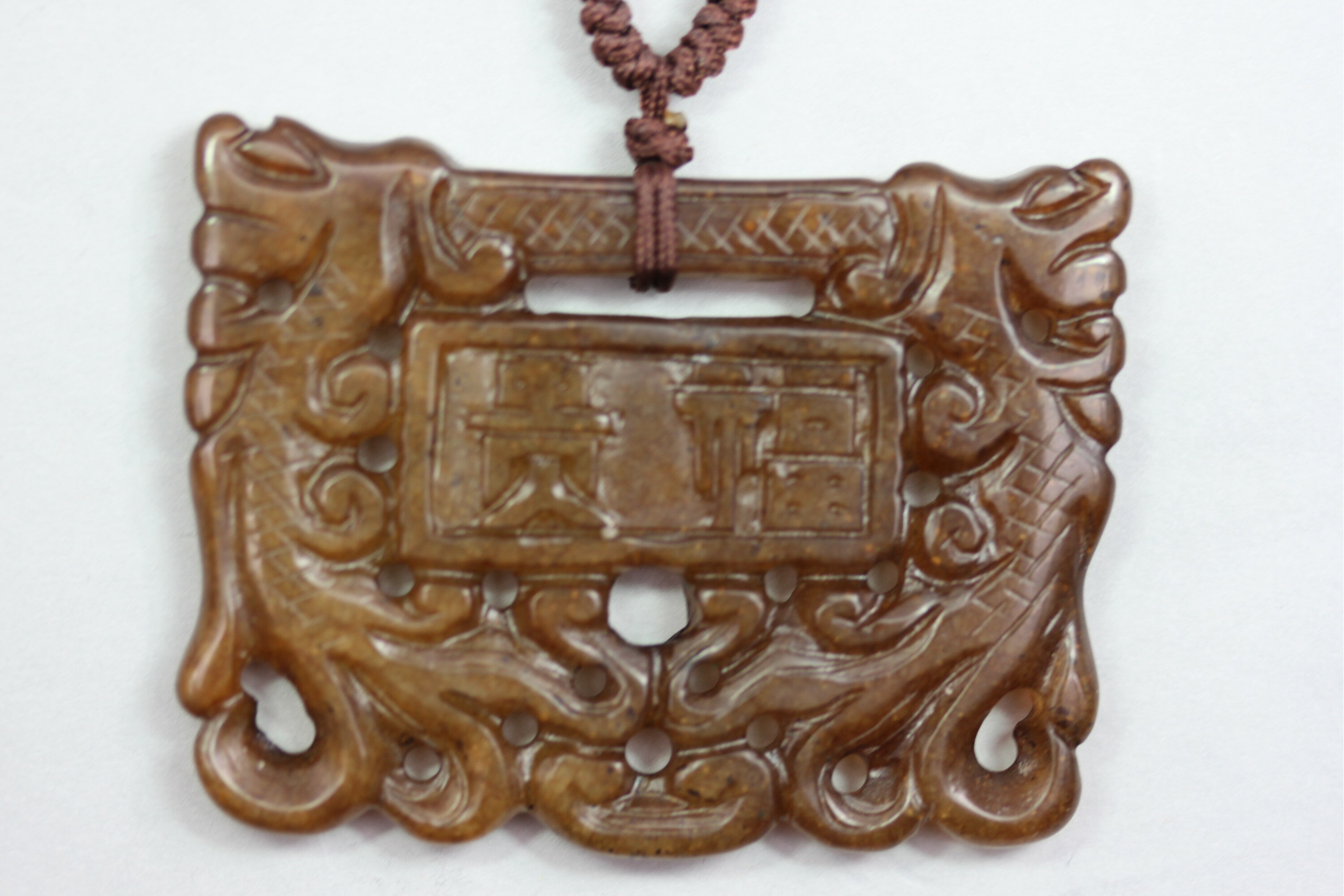
Carved Chinese brown jade necklace
Price: £55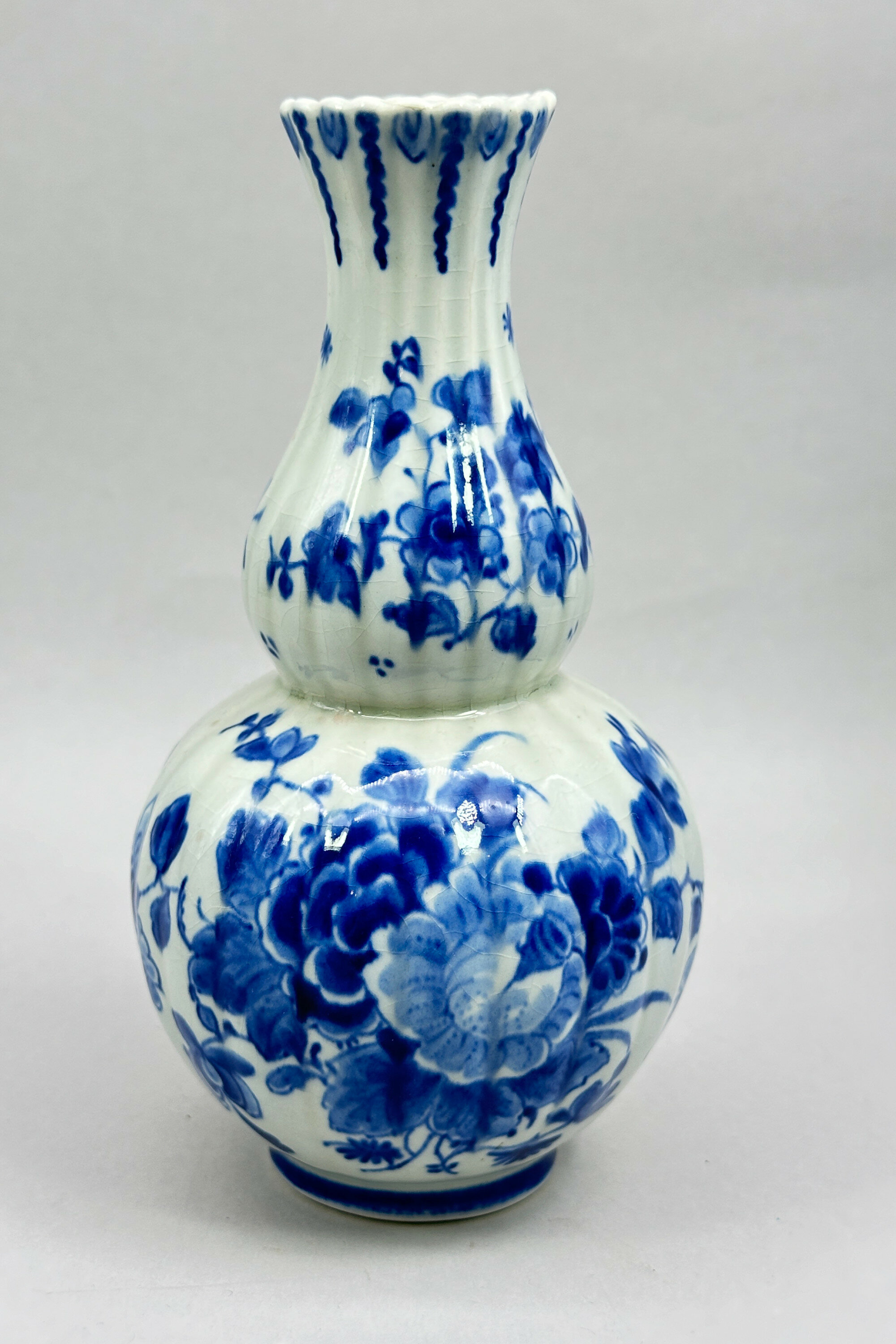
Dutch Delft Blue and White Gourd Vase in C18th Style, late C20th
Price: £25This vase is typical of one of these later creations and copies an eighteenth century original which itself was based on Chinese pieces. The marks underneath, although some of them are blurred, offer a clue to the dating. Below an ‘A’ at the top can be seen a vase which stands for ‘De Porcelyne Fles (The Porcelain Bottle) a factory which was established in 1653 and continues production today. There follow the initials ‘JT’ as a monogram standing for Joost Thooft who bought the factory in 1876 and below this ‘Delft’. At the bottom are usually found the painter’s initials to the left and letters to the right which are the date mark. On this vase these are unclear but the painter’s initials read ‘MA’ which appears to stand for M.H.van Aalst who worked for the firm from 1941to 1983. This would fit with a likely dating here to the second half of the twentieth century, but the artist has successfully recreated the work of his predecessors and produced a piece of great charm.
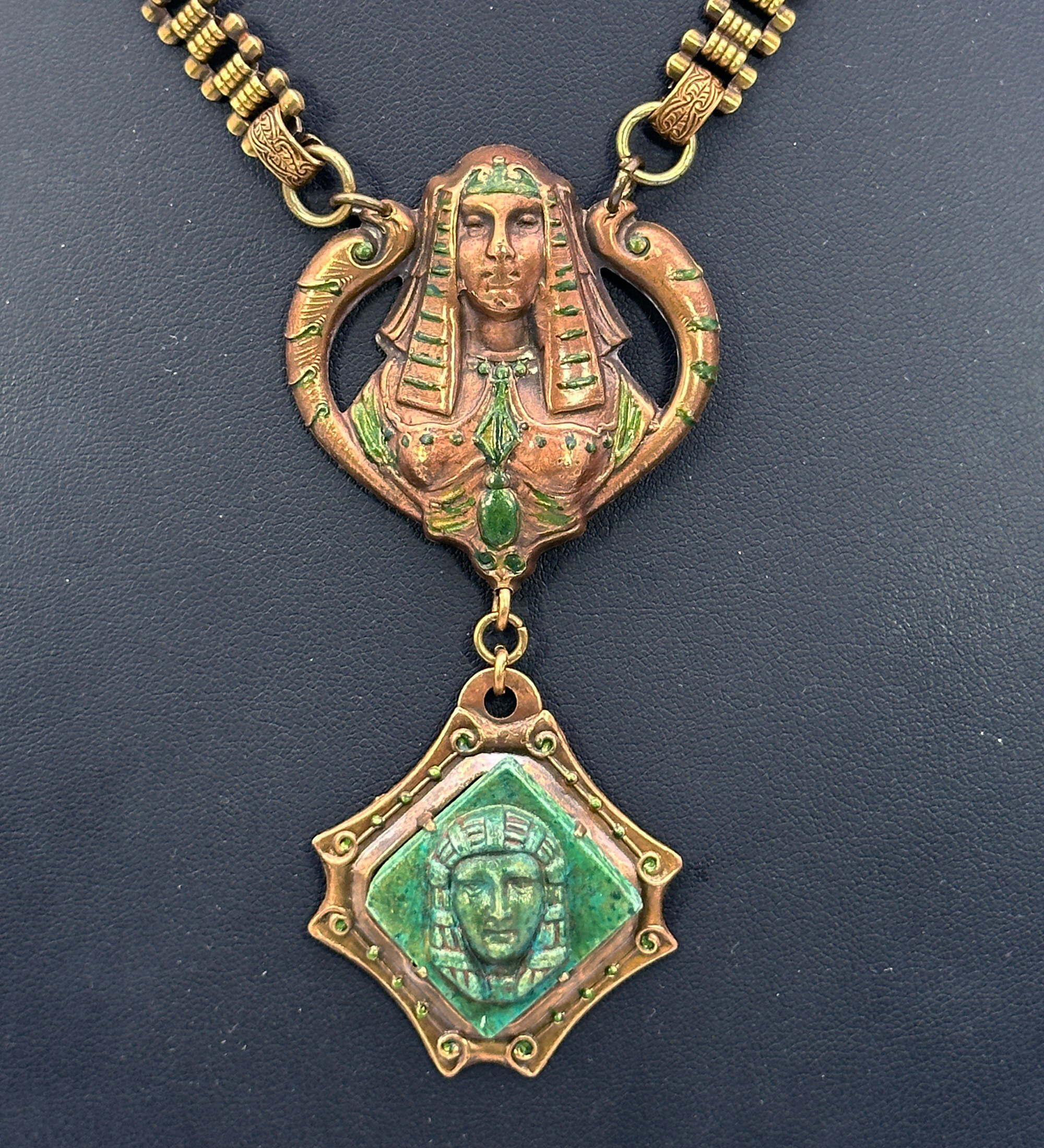
Early Neiger Brothers book chain necklace c1910
Price: £325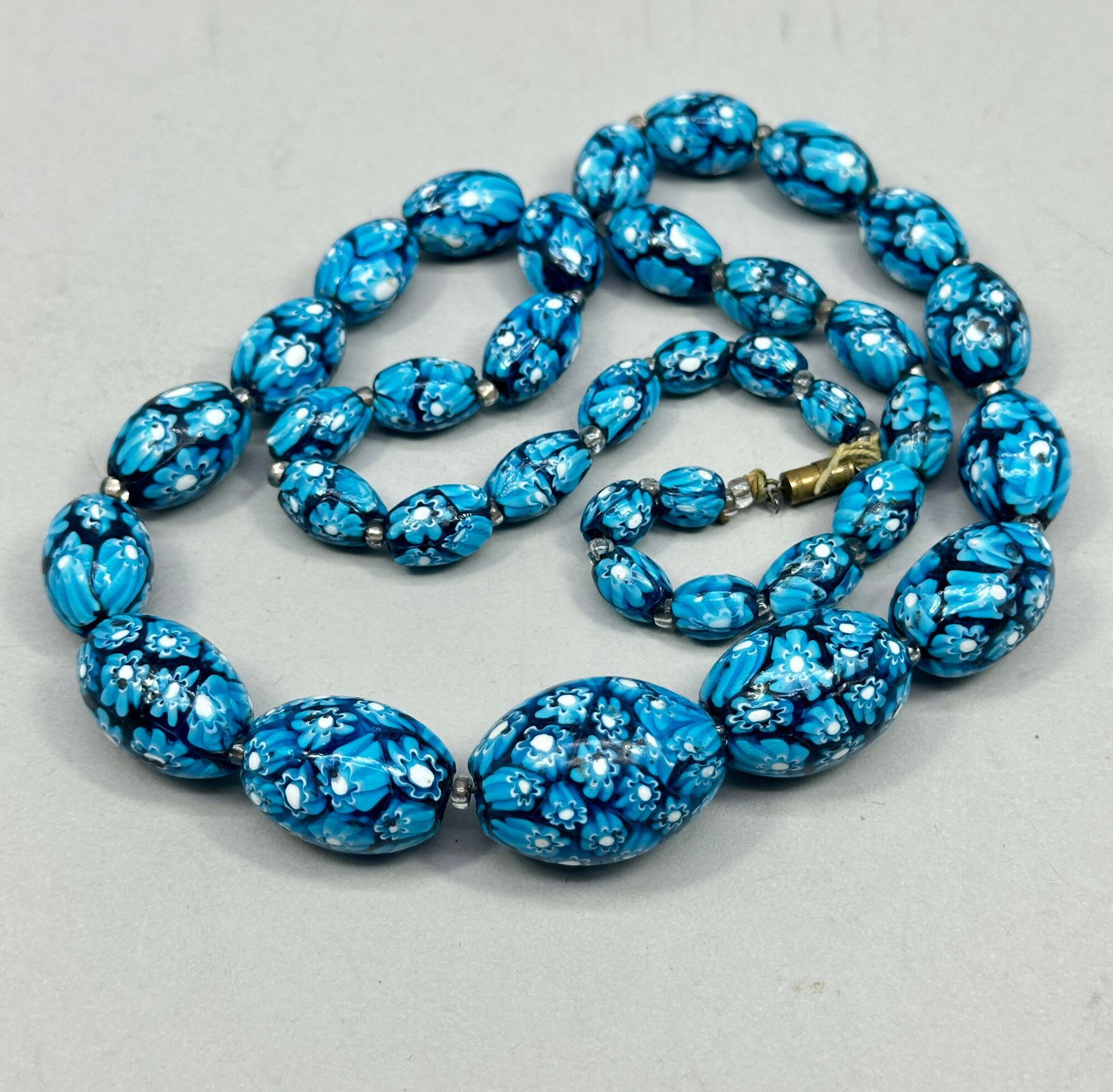
Blue Millefiore beads c1950
Price: £65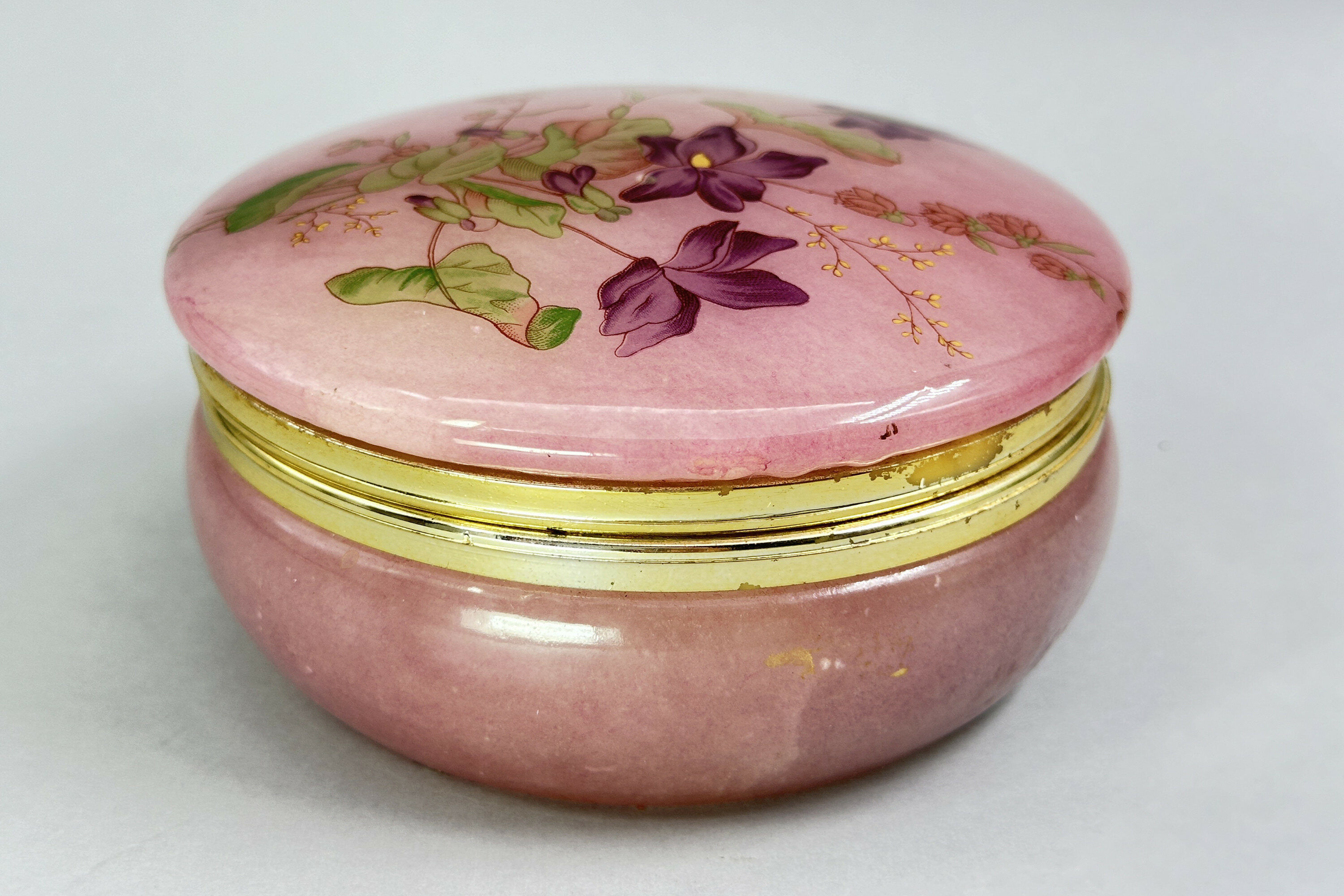
Pink Alabaster Box and Cover, Italy late c20th
Price: £25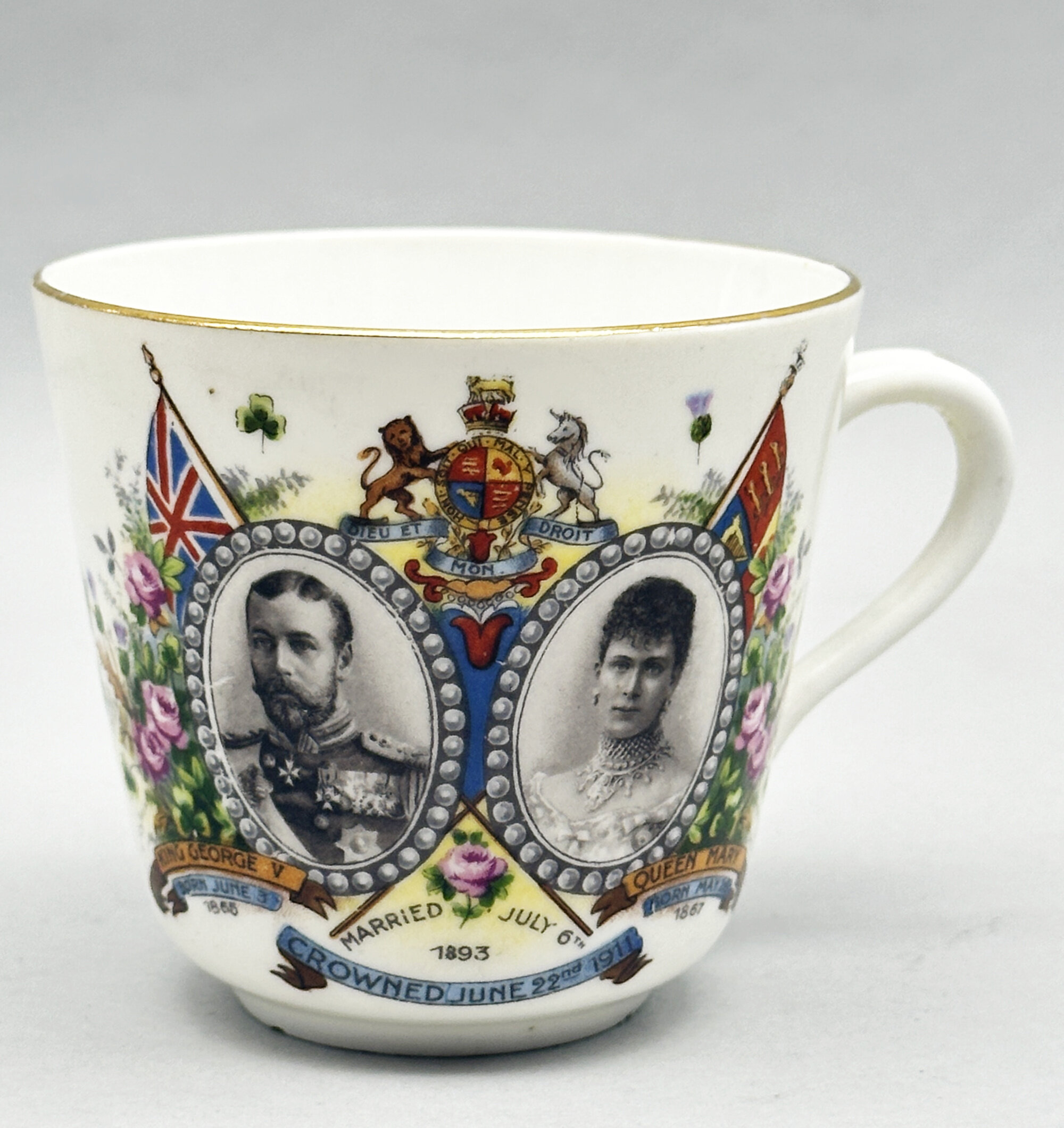
Cup : Marriage and Coronation of King George V and Queen Mary, 1911
Price: £10Production of this piece was presumably contemporary with the coronation in 1911 and many similar pieces were made by other factories at the time, more often in a straight sided mug shape. The form here suggests that there might have been an original saucer but none seem to have survived.
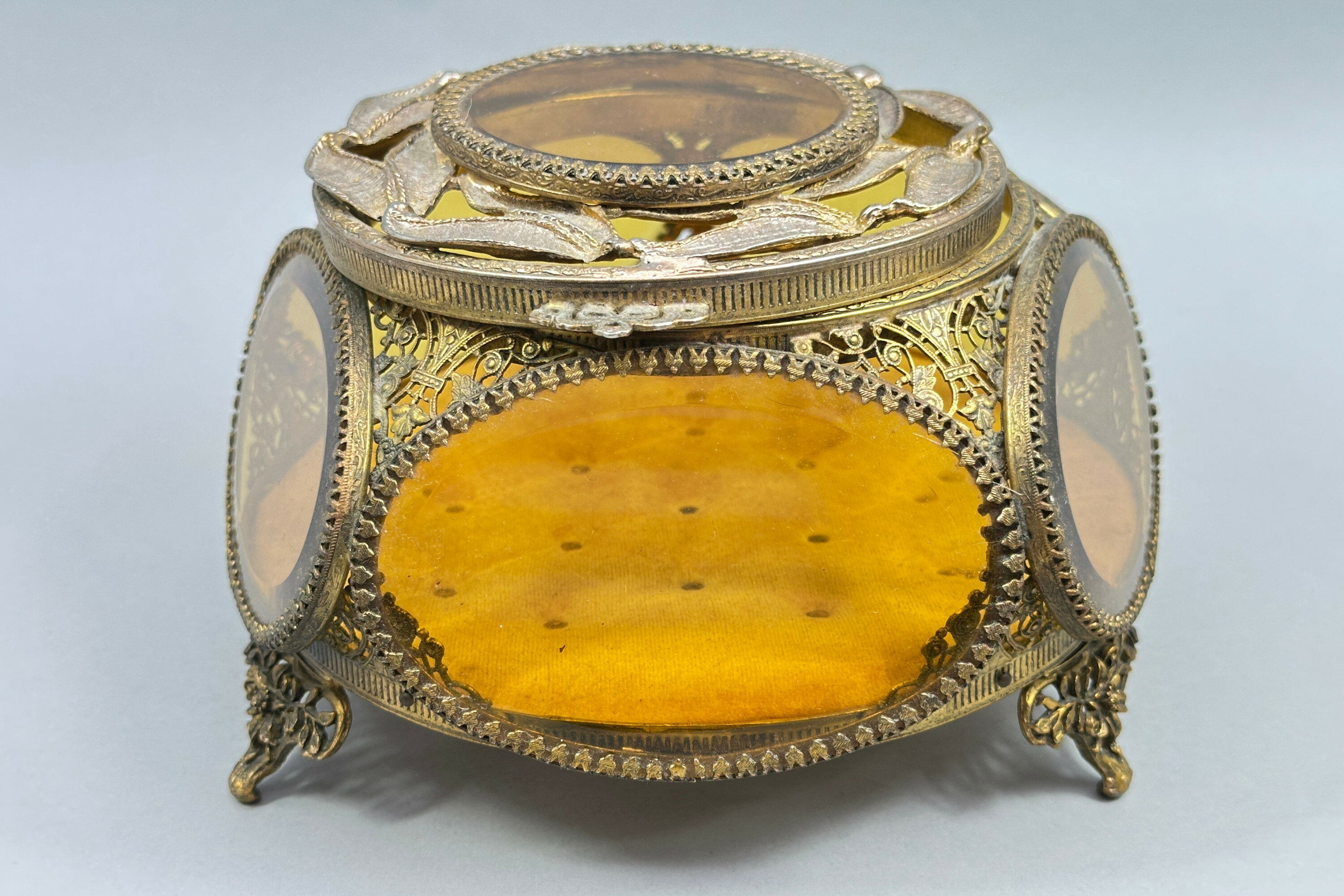
French Regency style Bevelled Amber Glass & Filigree Ormolu Casket, mid twentieth century
Price: £55Various pieces in this style where amber glass panels are combined with elaborate gilt metal work can be found. Most were intended as dressing table ornaments, as here. Sometimes termed 'Hollywood', after the American made products in this style of which Lot 1 in this sale is a prime specimen, these items were designed to add a touch of luxury to the bedroom. They are usually regarded as French and thought to have been made between the 1920s and 1940s. This is a particularly nice example with no damage to either the glass or the metalwork.
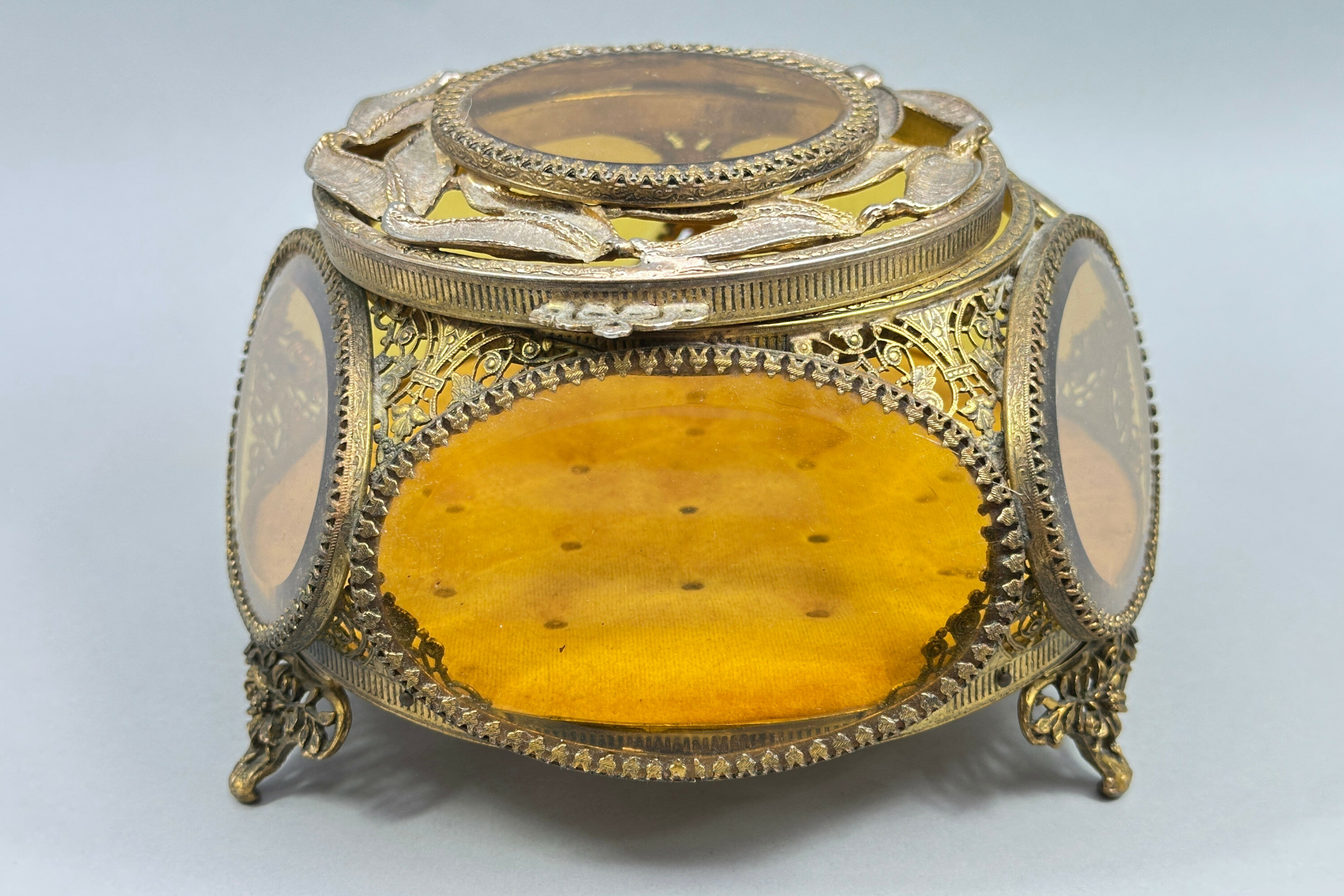
French Regency style Bevelled Amber Glass & Filigree Ormolu Casket, mid twentieth century
Price: £55Various pieces in this style where amber glass panels are combined with elaborate gilt metal work can be found. Most were intended as dressing table ornaments, as here. Sometimes termed 'Hollywood', after the American made products in this style of which Lot 1 in this sale is a prime specimen, these items were designed to add a touch of luxury to the bedroom. They are usually regarded as French and thought to have been made between the 1920s and 1940s. This is a particularly nice example with no damage to either the glass or the metalwork.
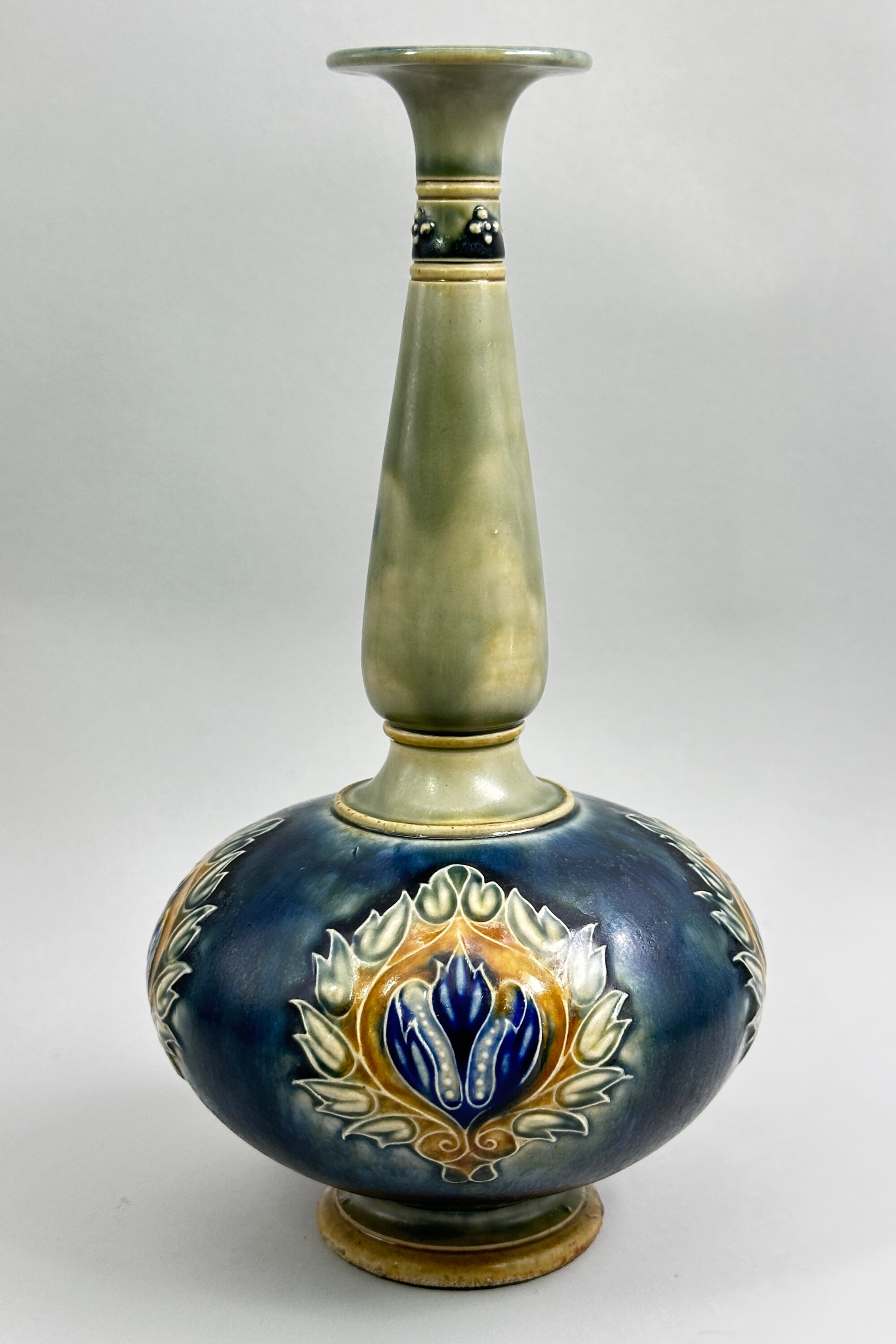
Royal Doulton bottle form Vase decorated with flowering lotus, early 20th Century
Price: £75The Doulton pottery originally had its first factory in Lambeth, London. Set up in 1815 by John Doulton, who is rumoured to have spent his life savings of £100 in starting the business, the firm concentrated on making pipes and utilitarian works. But in the 1880s the Company moved to Staffordshire and began making fine bone china tableware and decorative items. The pottery was located in Burslem, Stoke-on-Trent and has manufactured high quality ceramics and porcelains ever since, receiving a Royal Warrant in 1901.
This piece is typical of the glazed pottery pieces made in the late nineteenth and early twentieth centuries. A muted palette of colours was used and a variety of forms created with many artists taking a hand in the decoration. Most of the pieces are signed, as here. The pattern number indicates a date after 1894, but the Royal Warrant mark means a dating in the early 1900s. Perhaps a timing in the Edwardian era (1901-1910) is the most likely.
This vase is an excellent example of the creative designs which Doulton produced. As often, there is a slight Oriental influence but the style and design are unmistakeable.
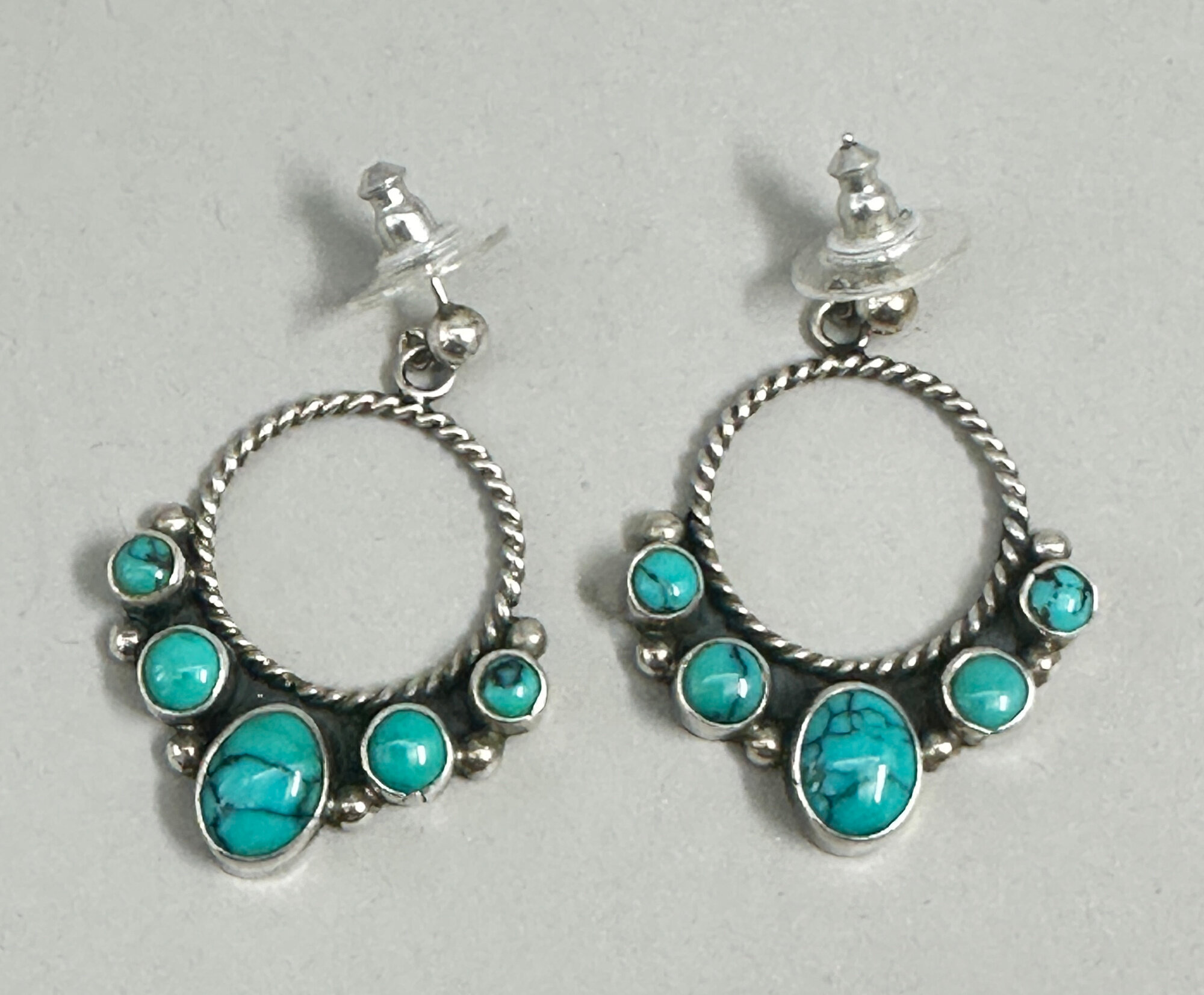
Pair of Navajo Kingman turquiose earrings, signed, 1970s
Price: £65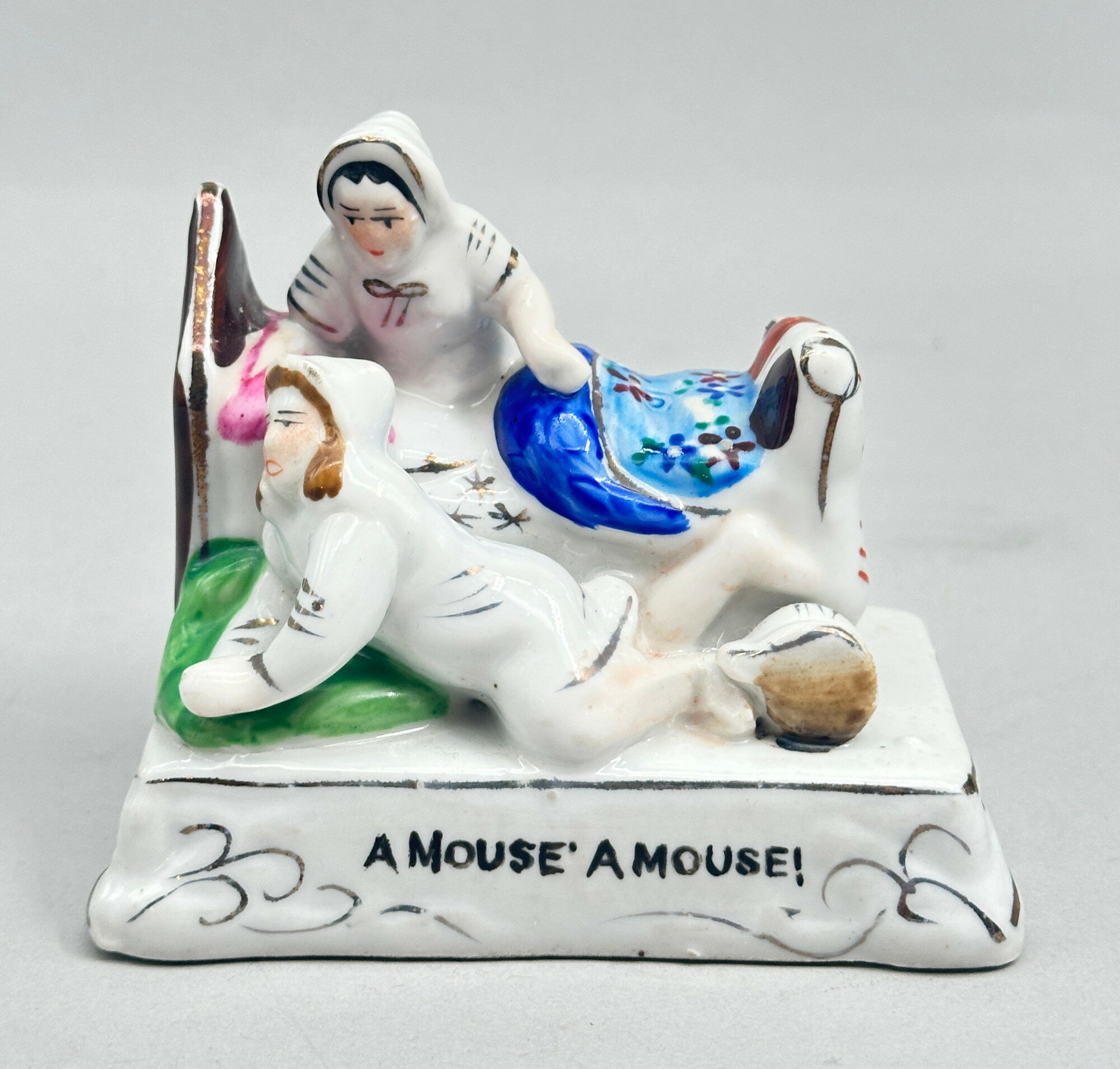
Fairing Figurine – A Mouse A Mouse, German, late C19th
Price: £25
Ceramic and Bronze figure of a Blue Tit, Albany Worcester, late C20th
Price: £35
Japanese Fukagawa Jug and Stand decorated lotus, signed, circa 1900
Price: £45The Fukagawa kilns produced the best quality Imari items made in Japan in the late nineteenth century for export to the West. Their history starts with Ezaiemon Fukagawa who in 1856 became head of his family's porcelain business and in 1875 founded Koransha (The Company of the Scented Orchid) in Arita, Japan, to produce tableware for export. In 1894 the modern Fukagawa company was founded by Chuji Fukagawa, with the Fukagawa trade mark of Mount Fuji and a stream, as its trade mark. Dating of these pieces is therefore towards the end of the Meiji period (1868 - 1912) probably around 1900. While the decoration is similar to that found on other Fukagawa pieces there are few, if any parallels, and tea ware pieces by the firm are not very often seen.
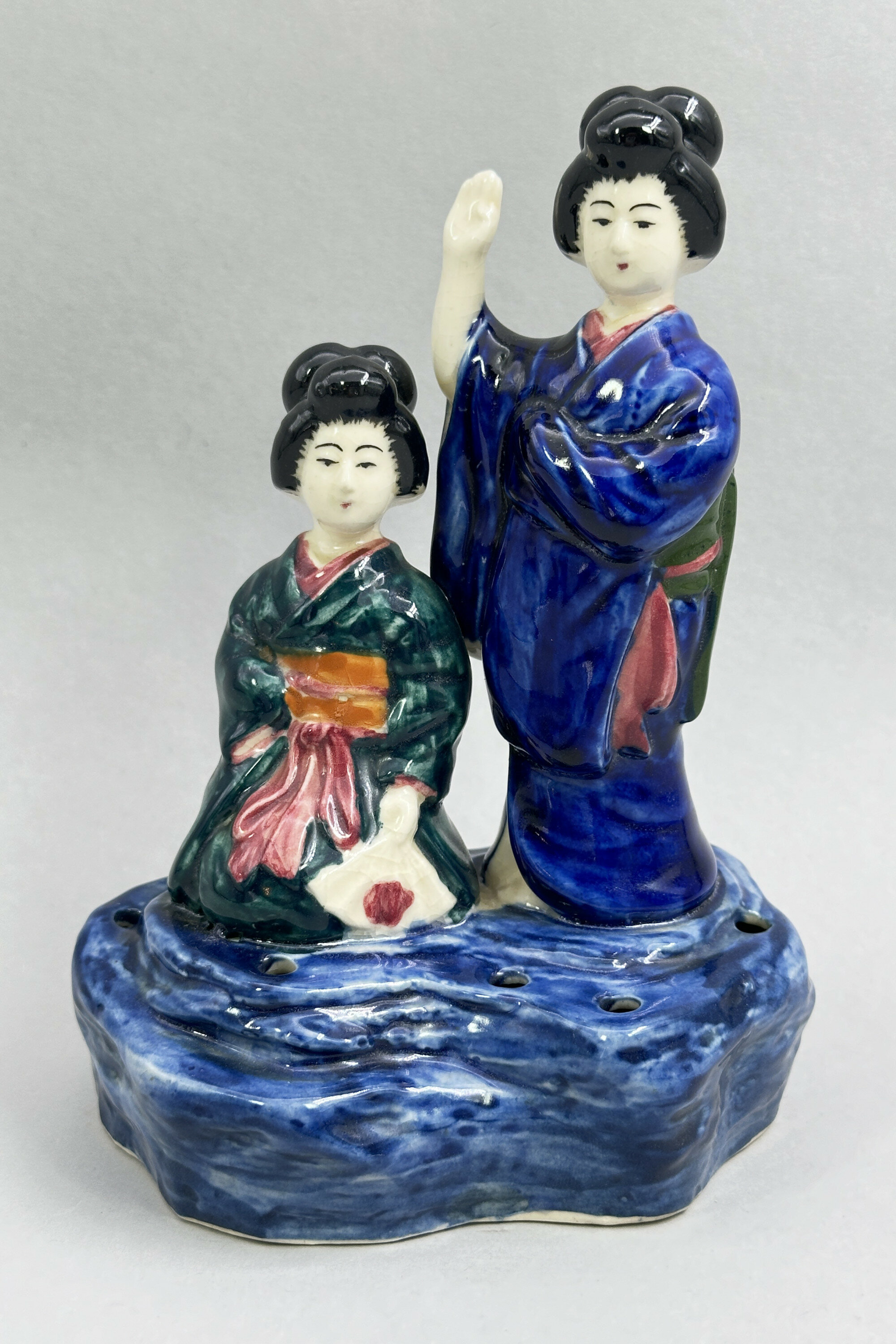
Japanese Ceramic Figural Group of two Geisha, late C19th
Price: £25
Exceptional strand of Scottish Moss agate beads
Price: £45
Scottish Agate bar brooch
Price: £35
1940s Dutch coin braclet
Price: £35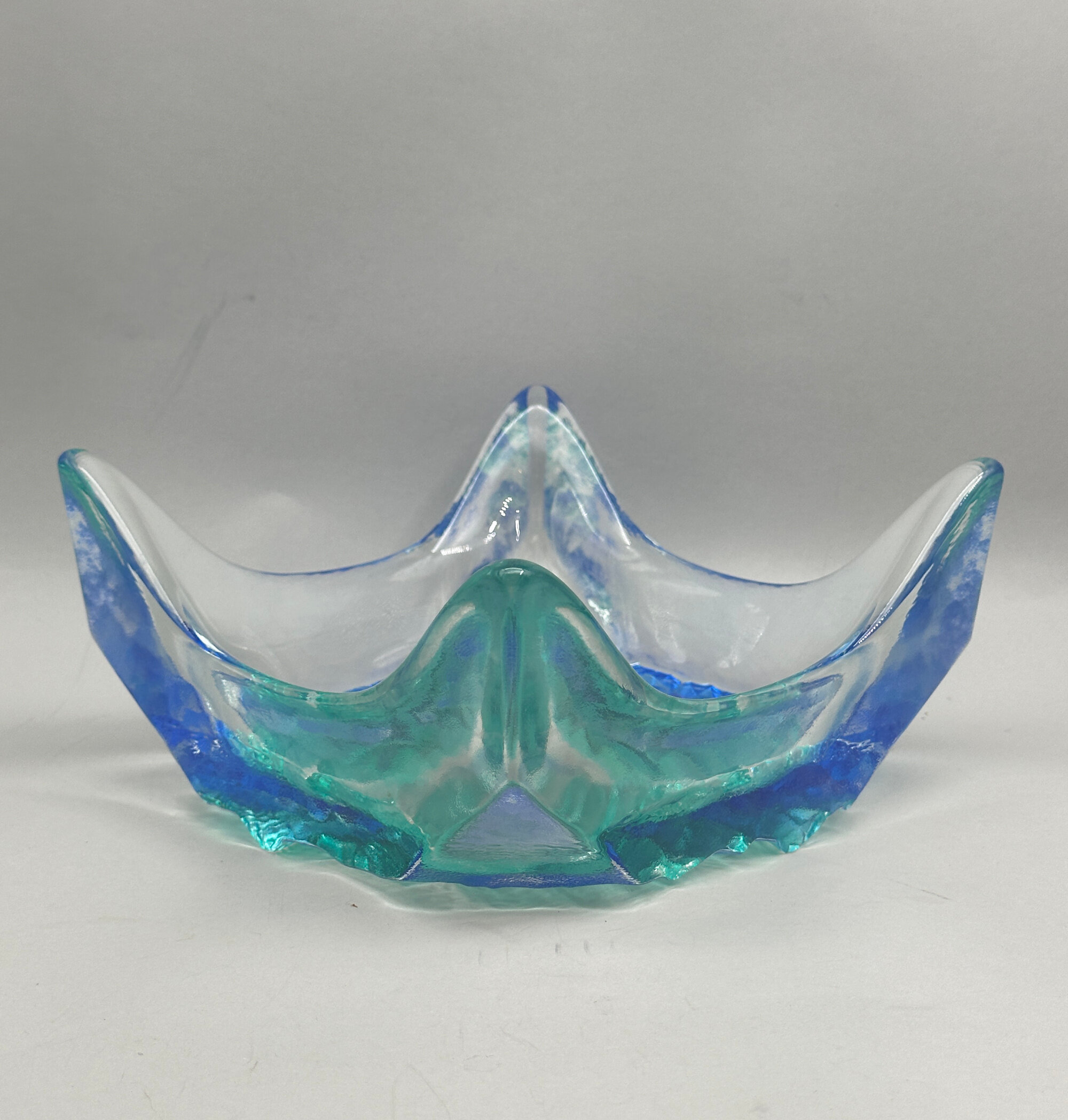
Blue and Green Ice Glass Square Bowl, designed by Tapio Wirkalla for Iitala Finland, late C20th
Price: £55The Finnish designer Tapio Wirkkala (1915–1985) was a major figure of post-war design, working in a wide variety of media including ceramics, wood and glass as well as postage stamps, bank notes and even light bulbs. His first piece for Iitala was produced in 1946 and the commercial ‘Tapio’ collection from 1954. Some of his ‘ice glass’ effects took the Iitala craftsmen many hours to perfect the glass blowing techniques required to produce them but enjoyed immense popularity. These chunky bowls, almost brutalist in style, were produced in the 1970s and 1980s and are an excellent example of his work for the popular market.
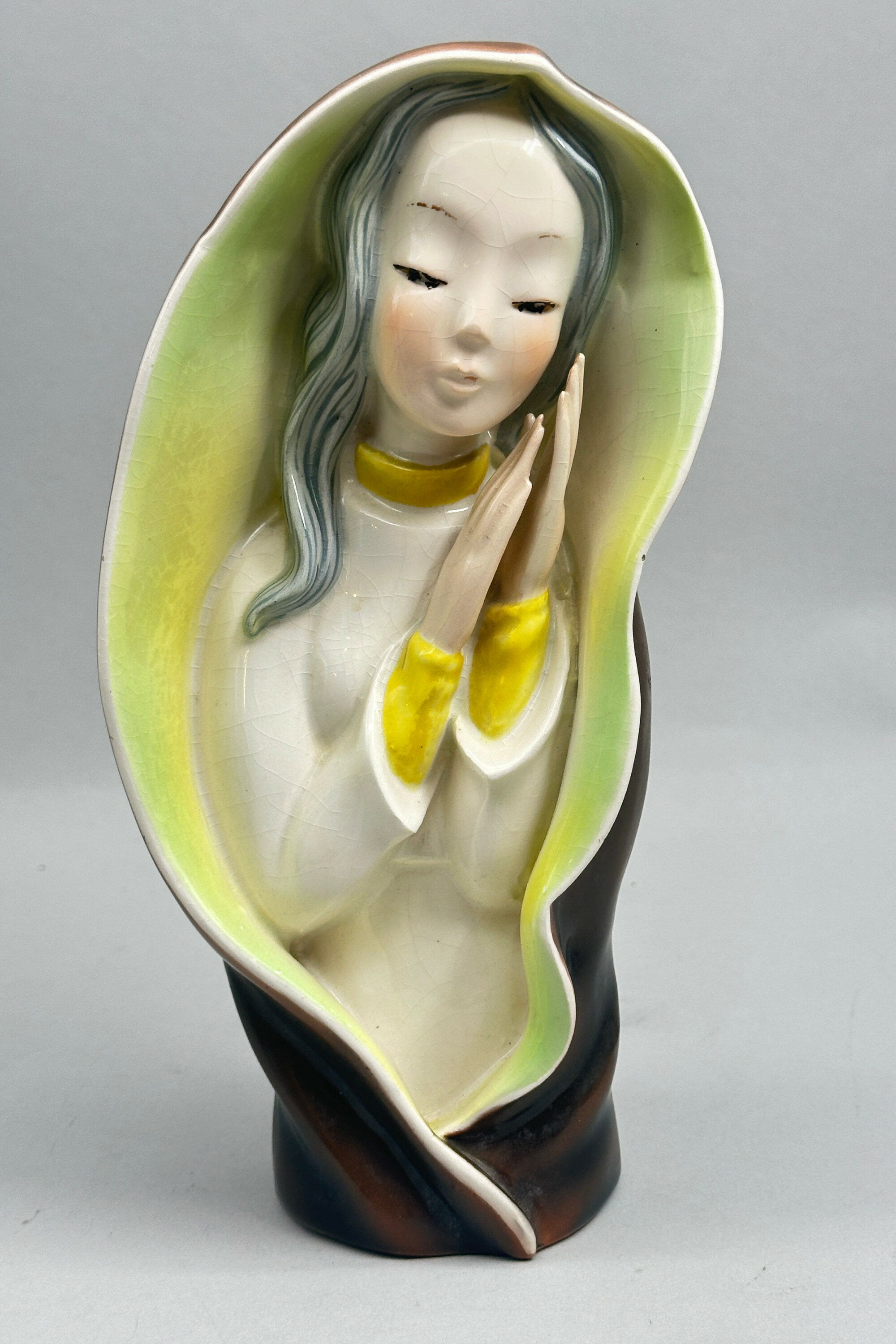
Figure of a Young Girl Praying, Continental, probably mid C20th
Price: £55
Japanese Kutani Shell Shape Dish, circa 1880
Price: £55Kutani (the word means 'nine valleys') porcelain was made at various factories in the former Kaga province of Japan. The earliest pieces were in a completely different style employing a palette of colours emphasising green, the so called 'Ko Kutani'. Production of this ceased around 1730, and manufacturing was not revived until the early nineteenth century when the more familiar colourings of iron red and gold were introduced. Many pieces were exported to the West in a variety of forms including vases and wall plates. This shell dish is more unusual; the shape is more normally found in Chinese ceramics. Perhaps one of an original pair, this dish, like its Chinese counterparts, was probably intended as a serving dish and could even be used as such today although it can well stand as a decorative item.
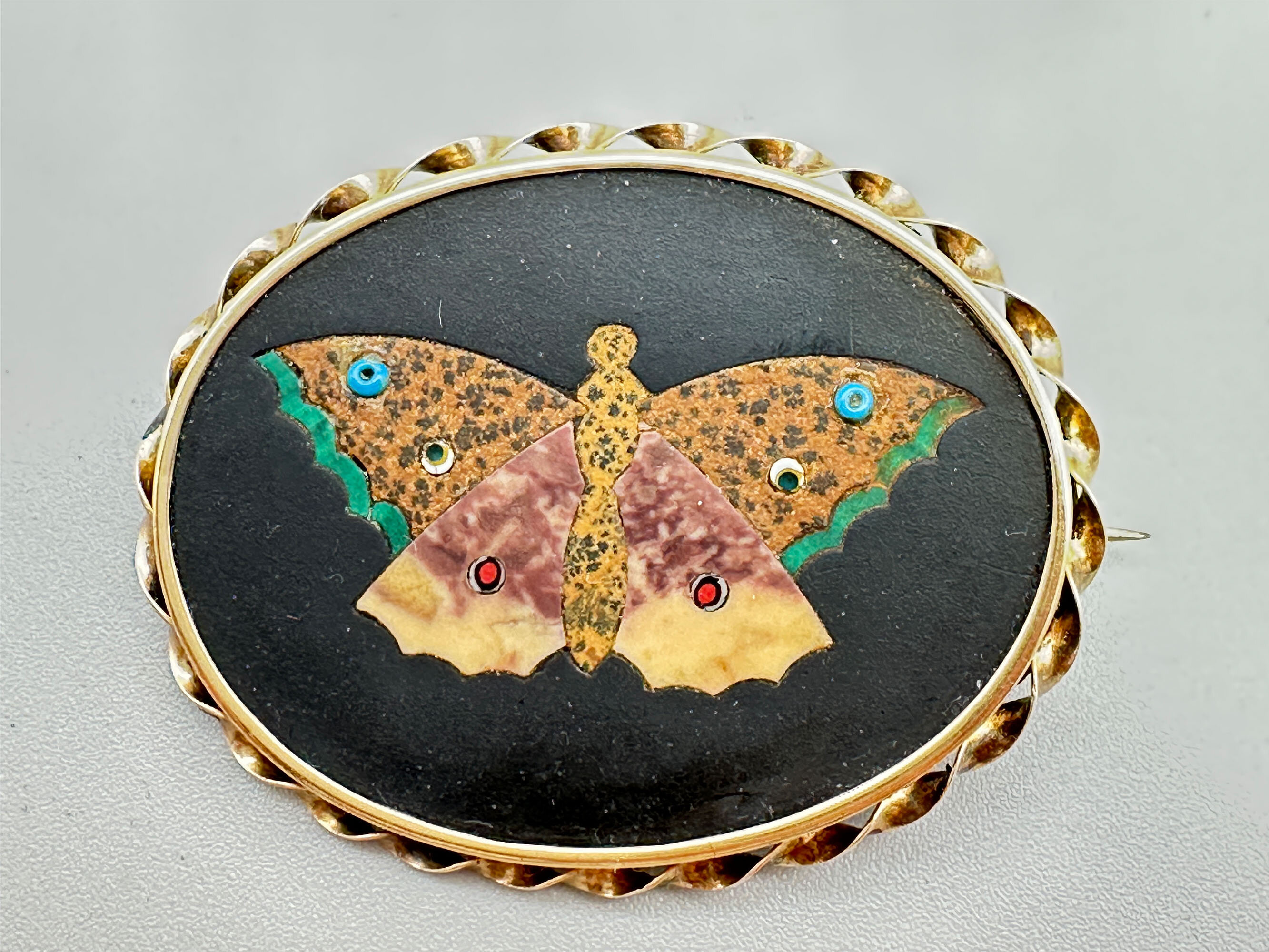
Pietra Dura jasper moth brooch c1920
Price: £175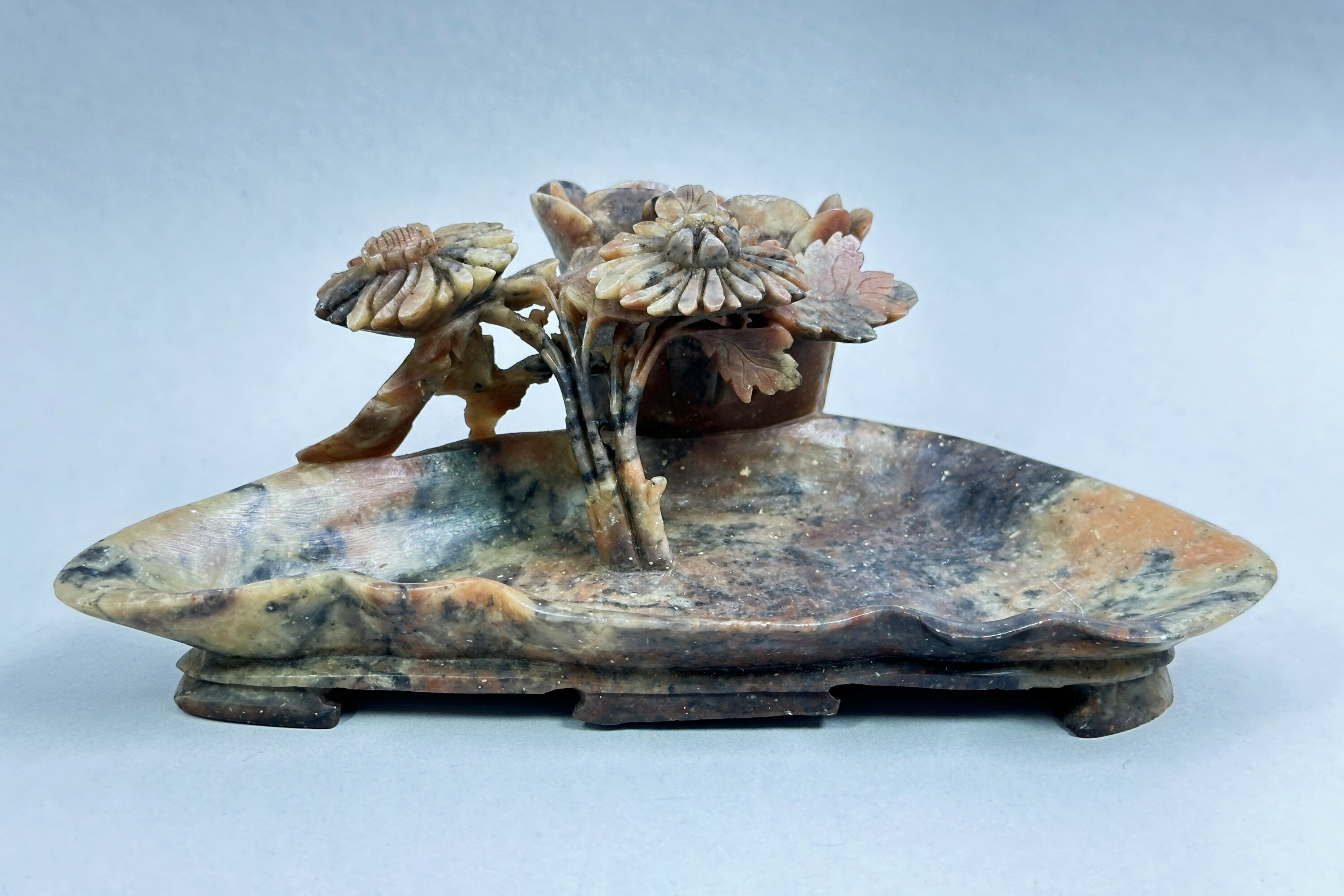
Chinese Soapstone Brushwasher with flowering lotus, early C20th
Price: £95
Striking 1950s applique summer handbag
Price: £65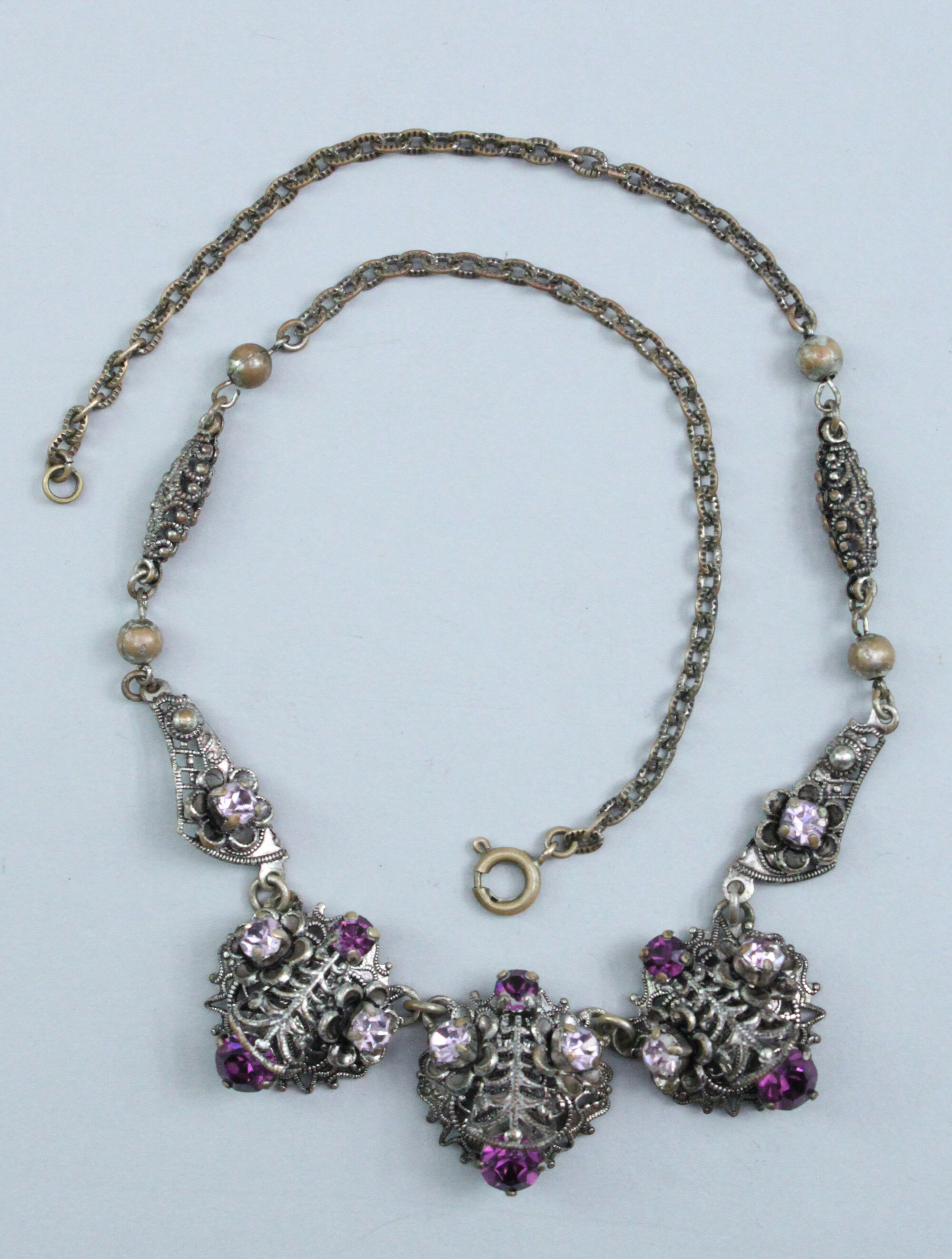
Intricate Czech glass necklace 1930s
Price: £45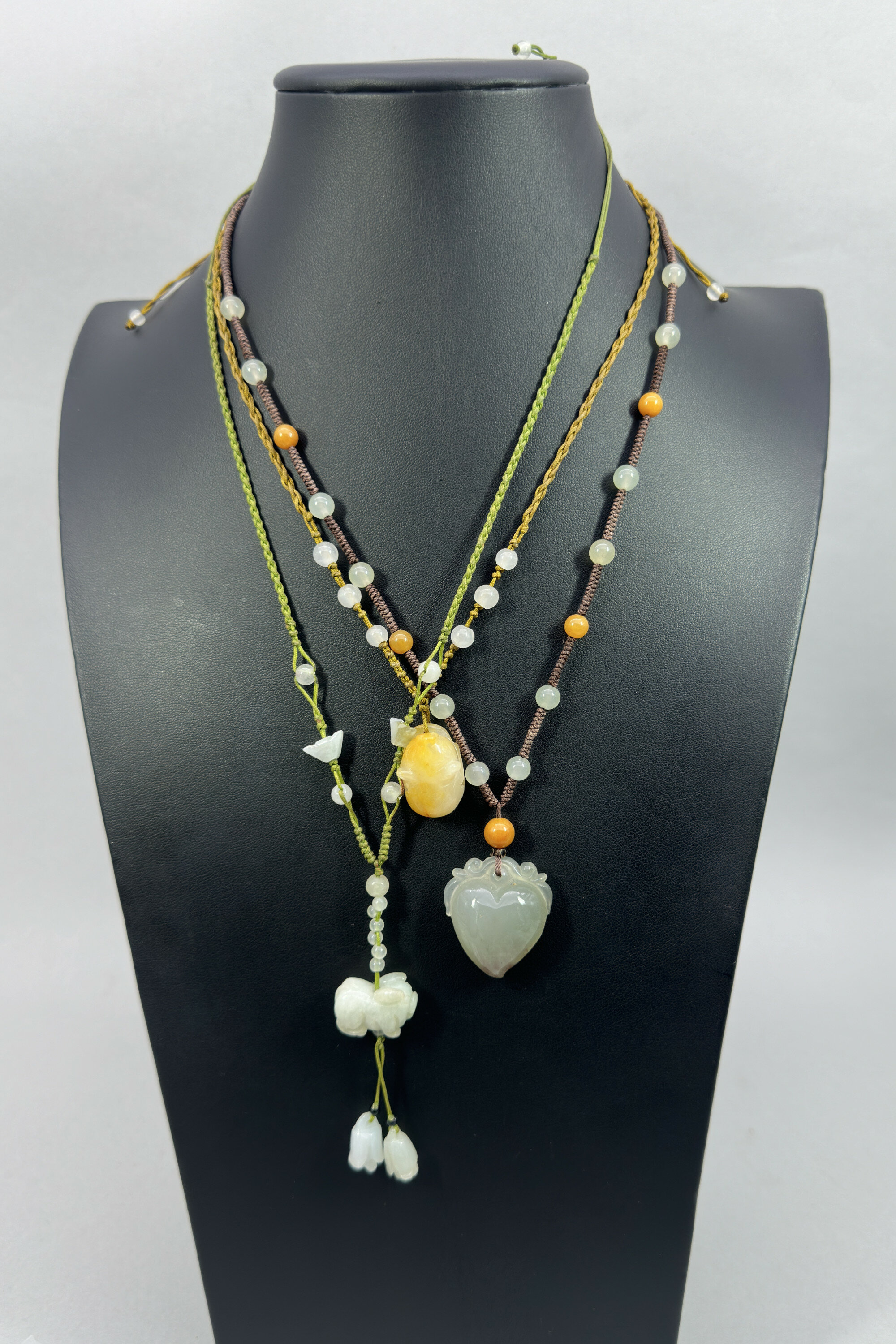
Group lot of three jade necklaces
Price: £30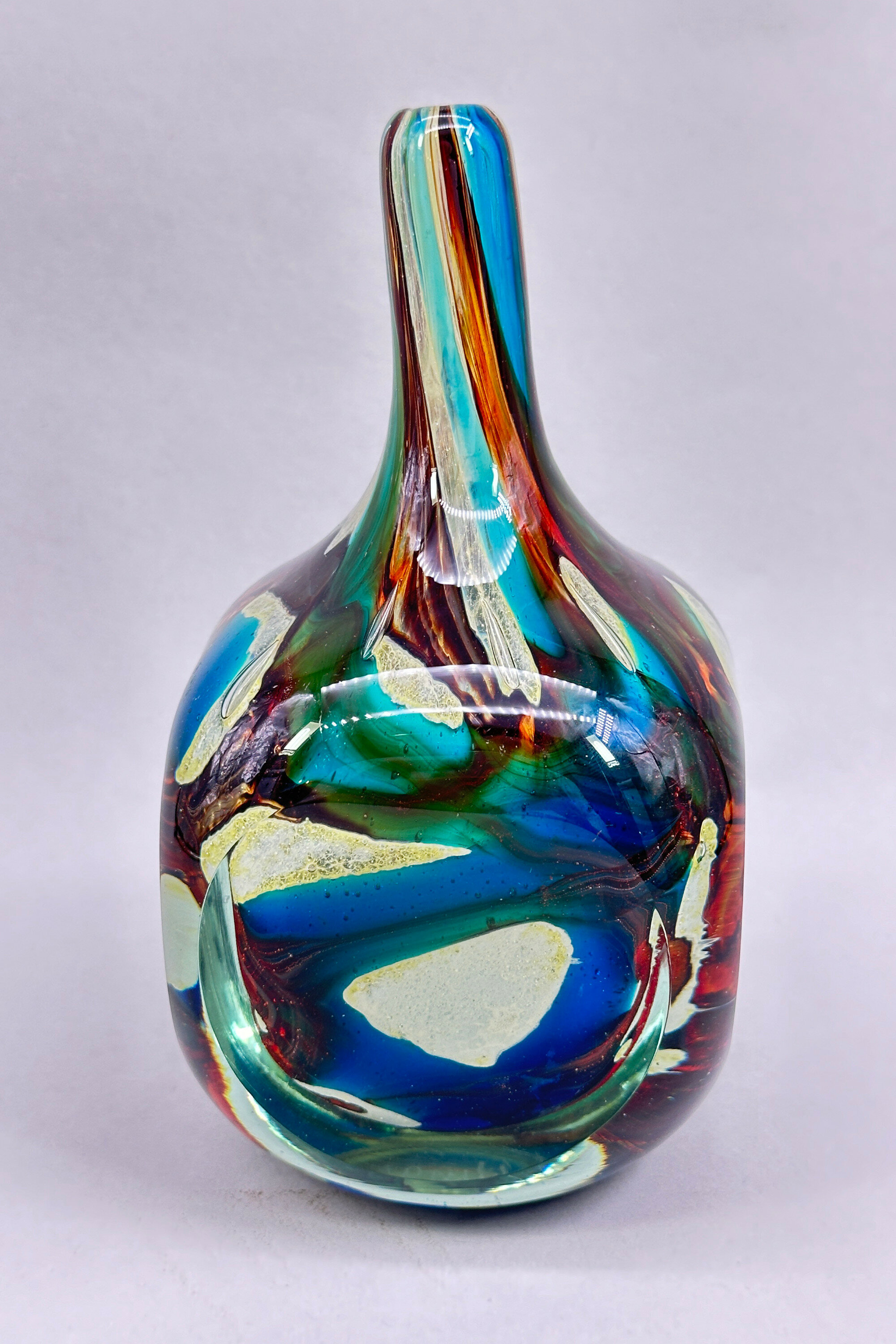
Mdina Art Glass vase, signed and numbered 1979, late C20th
Price: £95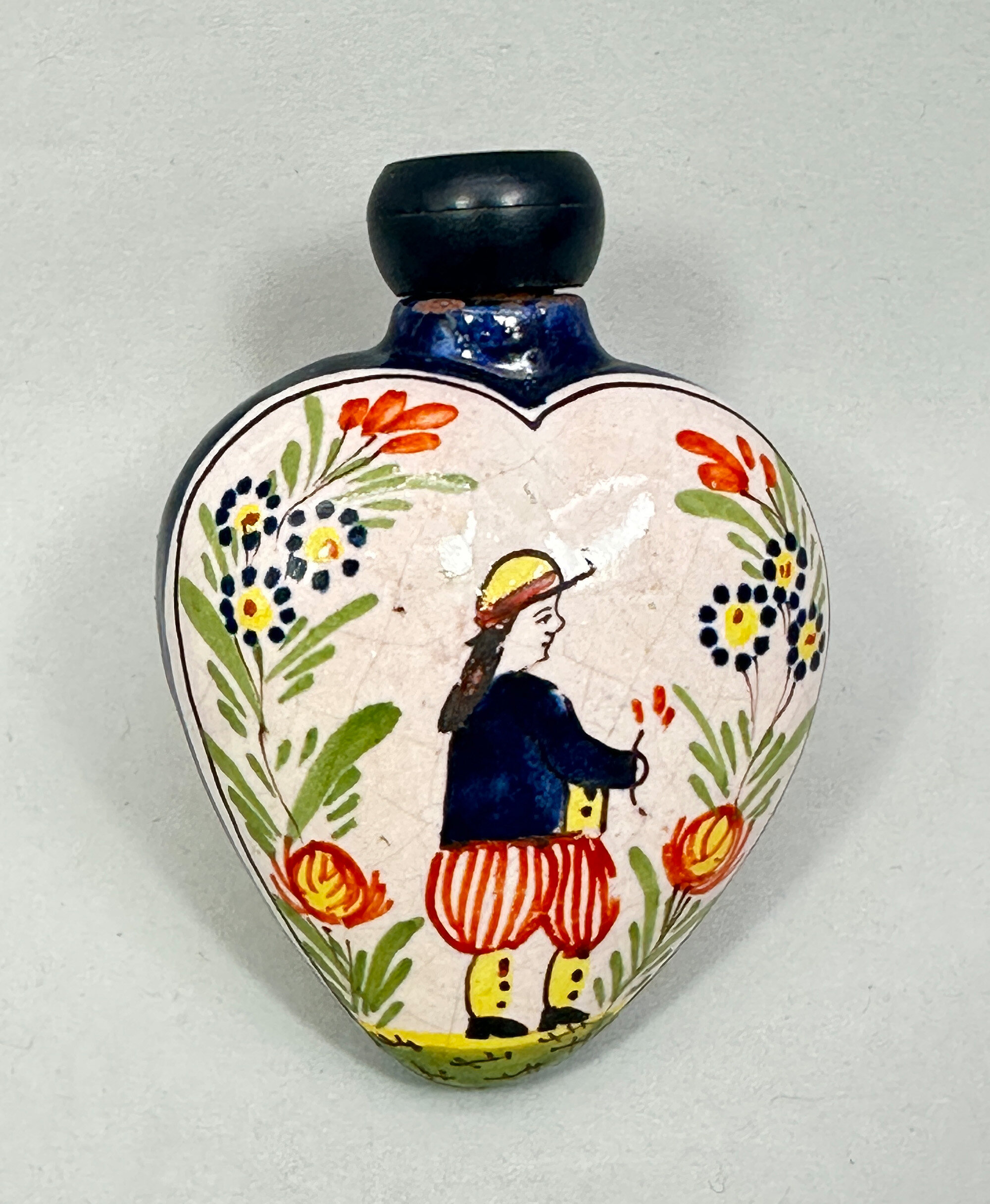
Faience Perfume Bottle and Stopper, Quimper France, C20th
Price: £75This bottle has the Breton gentleman on its front face and a fleur de lis to the reverse. The stylised lily, known as fleur de lis, became a symbol of the French royal family and France in general. It occurs, for example, on the Canadian flag but was also regularly used as a decorative motif by the Quimper potteries. These bottles can date to as early as the beginning of the twentieth century but a later time of production is probably a safer assumption here, perhaps to the 1950s. Few of these bottles survive with their fitted stoppers and the traces of cork to the top interior suggest that this stopper has been in place for some time and probably since the date of manufacture.
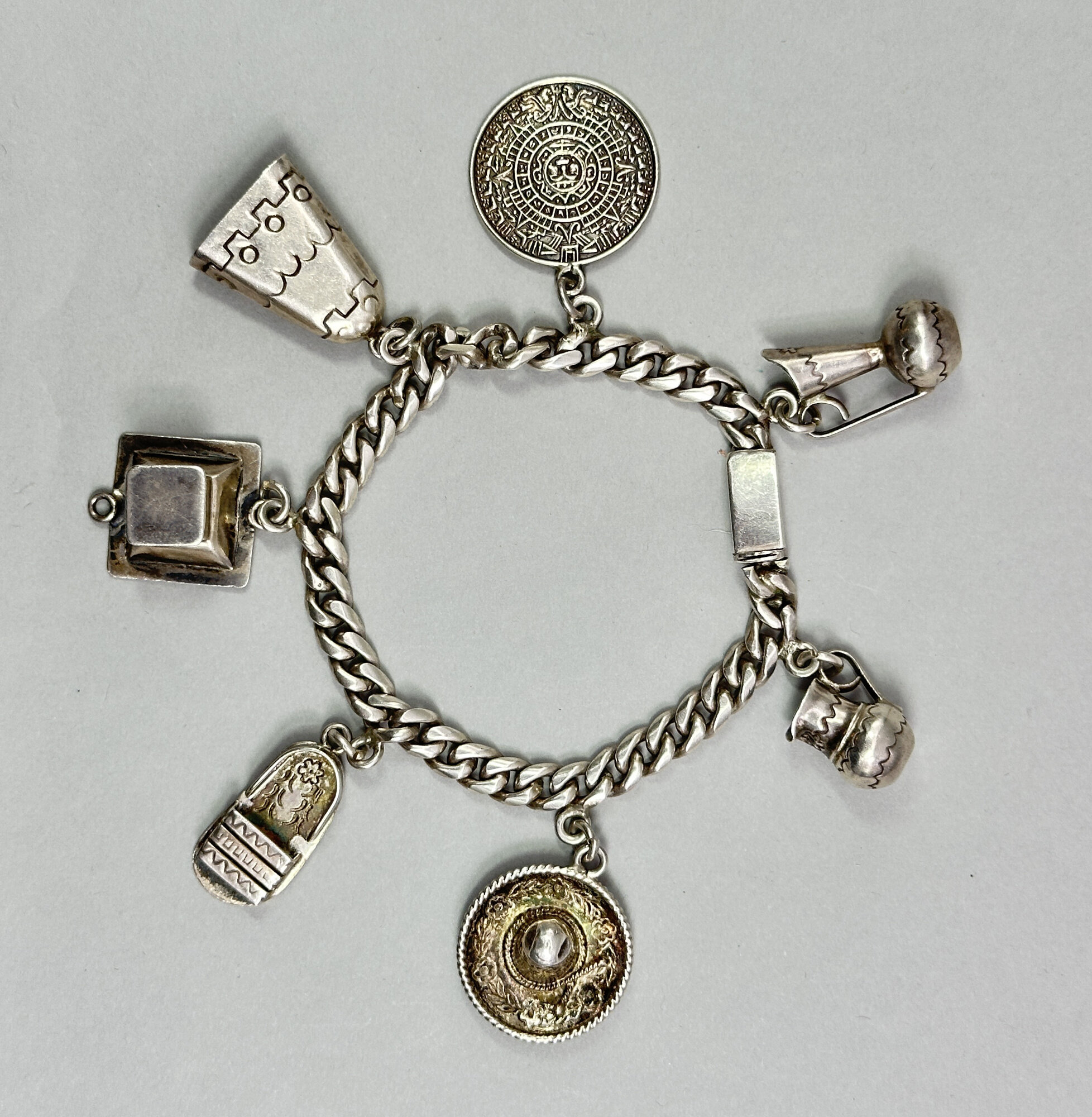
Taxco charm bracelet, makers mark Castelan, 1950s
Price: £85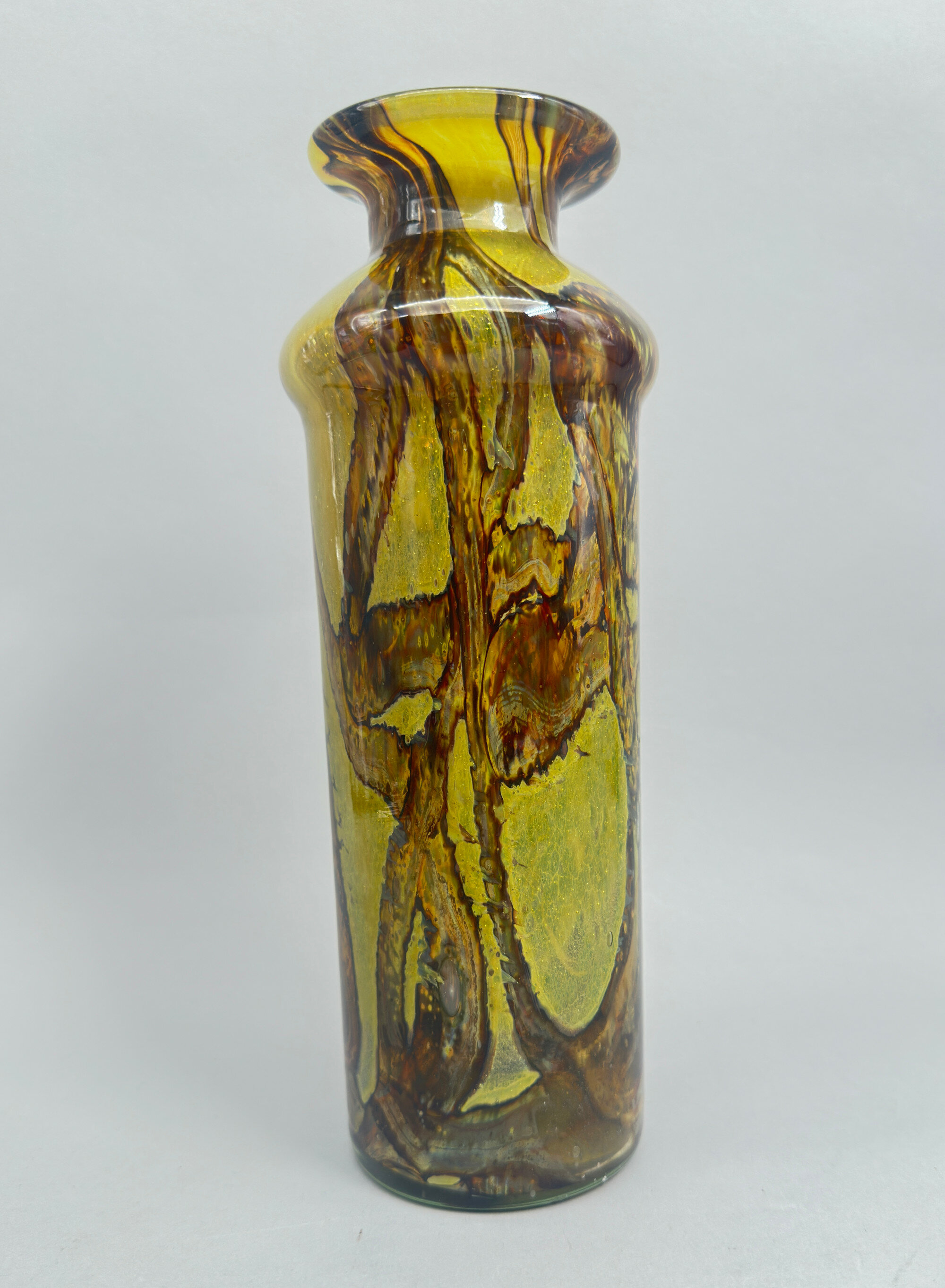
Mdina Earthtones Pattern Vase, late C20th
Price: £85Mdina Glass was founded in the Maltese town of Mdina in 1968 by Michael Harris and Eric Dobson. The town had no history of glass making but the venture proved to be a success. Its wares, free formed organic glassware, often in colours inspired from the sea, sand, earth and sky, proved very popular with tourists visiting Malta. Michael Harris left Mdina in 1972 and formed a new company, Isle of Wight Studio Glass, on the Isle of Wight, UK, leaving Eric Dobson in charge, but many of the designs he created continued to be made at Mdina Glass after his departure although new designs and patterns were added as well of which this vase is an example. Ownership of the company later changed but it is still producing a popular range of glasswares today.
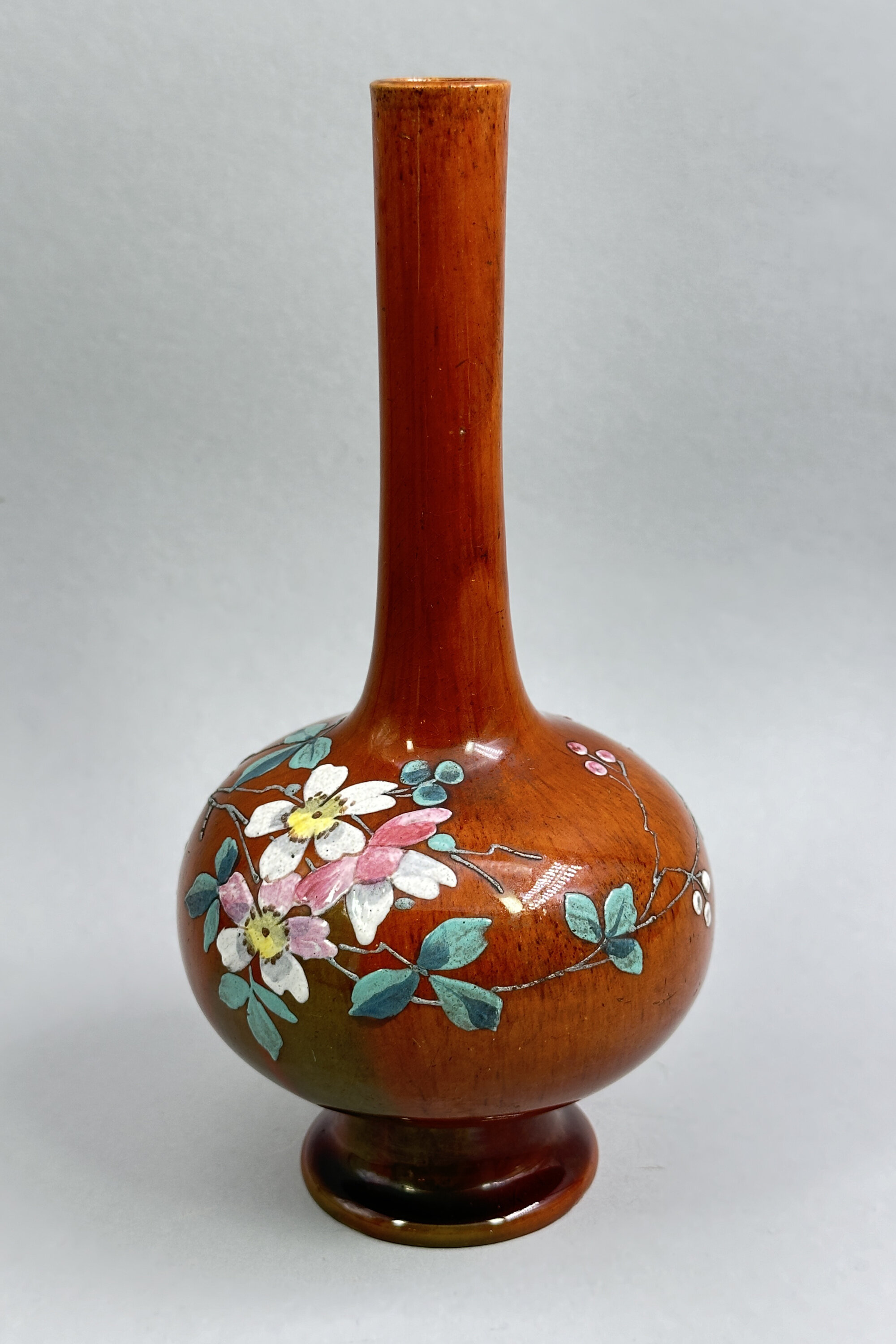
Terracotta Glazed Bottle Vase with floral enamel decoration, Watcombe Pottery, circa 1900
Price: £45Pieces combining glazed terracotta with polychrome enameling were one of the designs produced by the well known Watcombe pottery based in Devon. Production commenced in the mid 1860s when a fine red Devon clay was discovered in the grounds of Watcombe House near Torquay, prompting its then owner G. P. Allen to establish the Watcombe Terracotta Clay Company off Teignmouth Road, St. Marychurch in 1869. Classical styles of the period like terracotta busts, figures, urns and jugs were produced first, followed by terracotta glazed pieces some in the style of the famous designer Christopher Dresser. Not all of the pieces were marked and the appearance of ‘Watcombe Porcelain’ on some of their wares seems to post date the first years of production. Various mergers followed and the range of designs developed, adapting to changing tastes, but finally the business was forced to close its doors in 1962.
While the decoration is typical of Watcombe, the shape is typical of Dresser and also loosely follows a Chinese shape as did so many of his pieces. Allowing for the fact that the Devon potters introduced their own individual ‘twist’, one example of the Dresser prototype for this piece is included in the collection held by the Metropolitan Museum in New York. Watcombe, in common with other potteries at the time, aimed to produce pieces which, while they followed the ‘best’ designs were more accessible to a general audience. This vase is in no way inferior to the ‘real thing’ and maintains a charm of its own.

Celluloid Bangle with Tortoiseshell style decoration circa 1930
Price: £20PLEASE NOTE THAT THERE IS FREE UK SHIPPING ON THIS ITEM. For international buyers the shipping cost will be reduced by the UK shipping cost, so don't worry if you are outside the UK, you still receive this benefit!

Art Deco continental black spinel and marcasite ring, 1920s
Price: £35
Egyptian Revival scarab ring, 1930s
Price: £25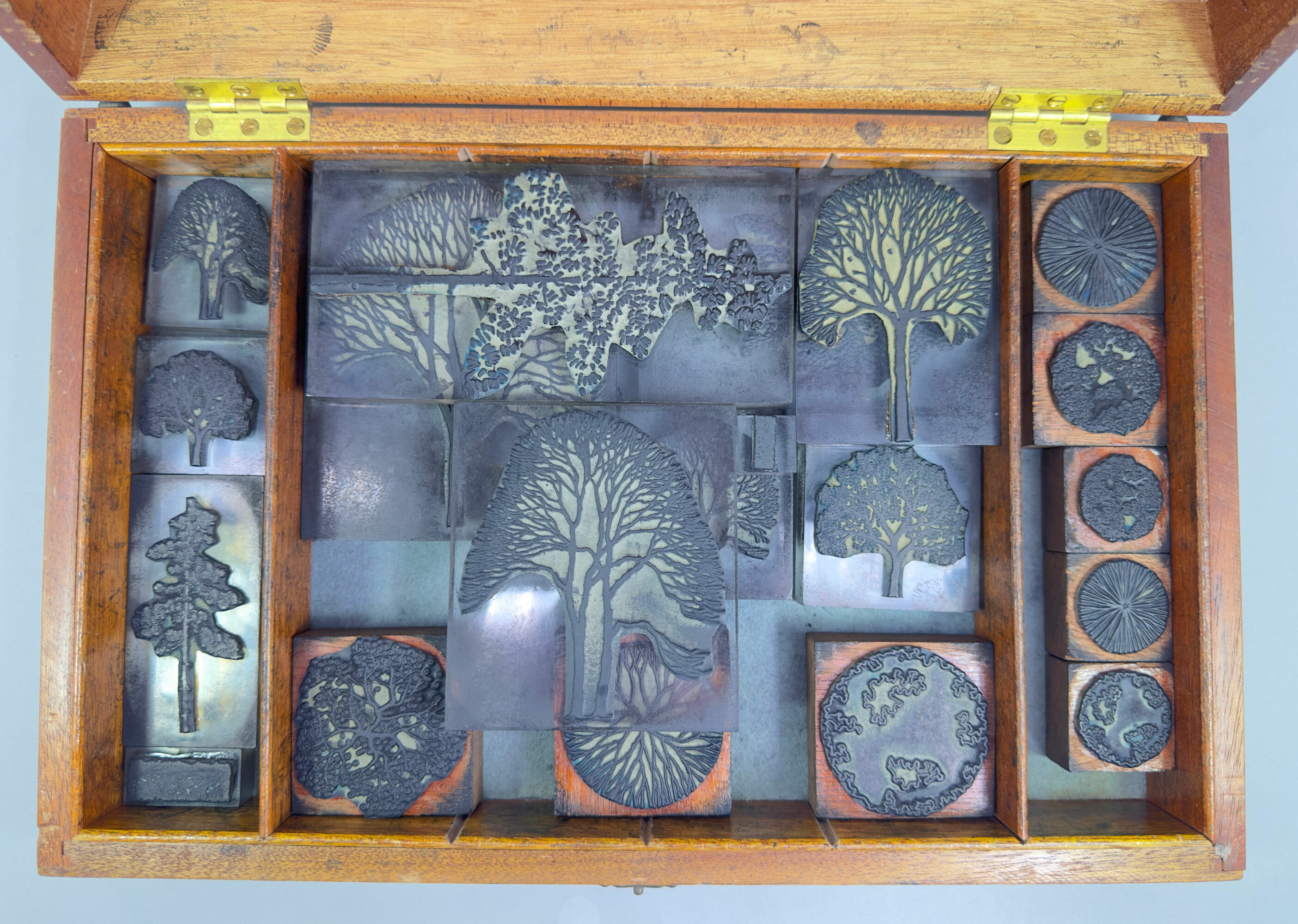
A group of twenty assorted artists Stamps in H&R Johnson sample Box, C20th
Price: £75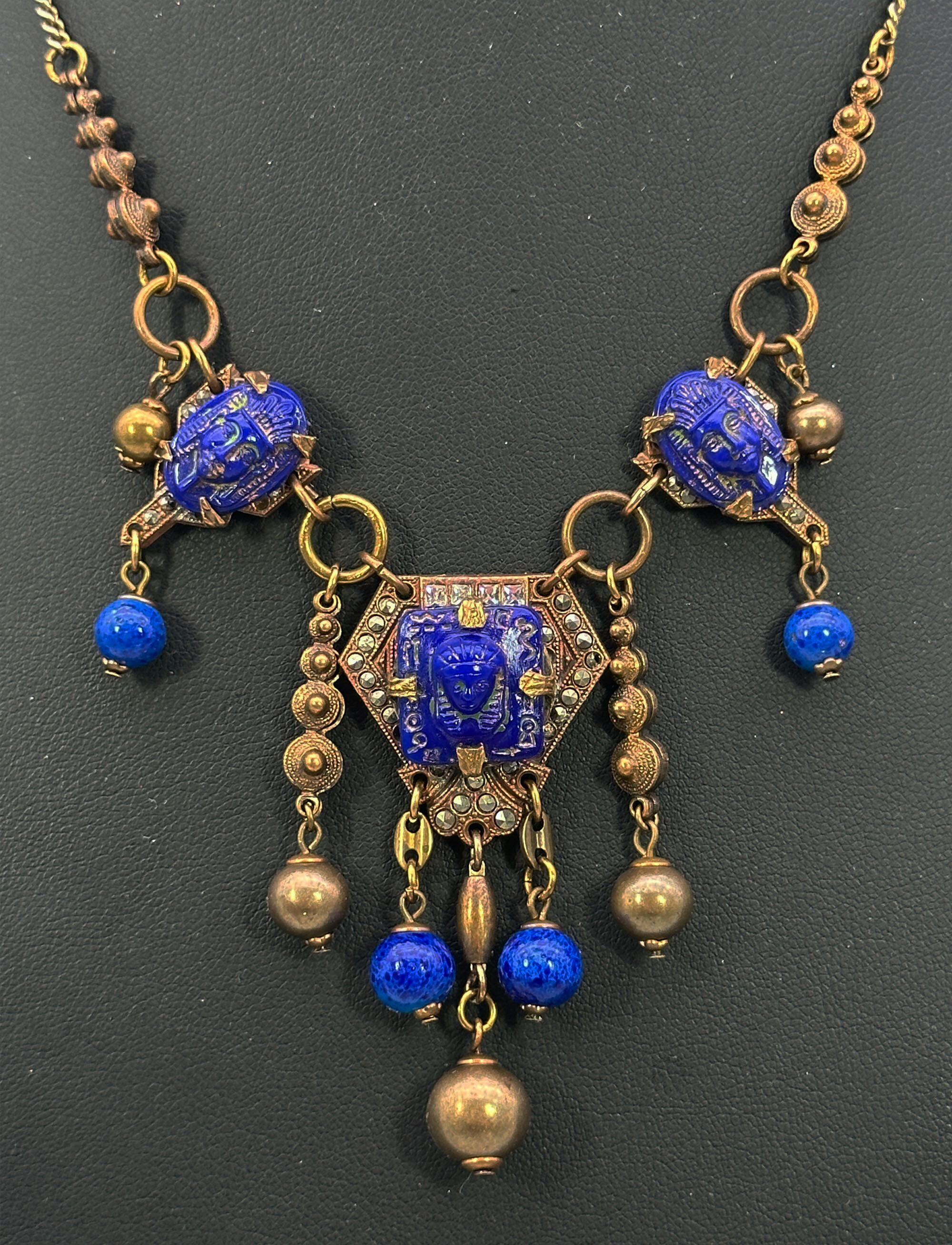
Neiger Brothers necklace with Egyptian Revival glass plaques c1930
Price: £225
Chinese Framed Ceramic Plaque depicting Peony, C20th
Price: £150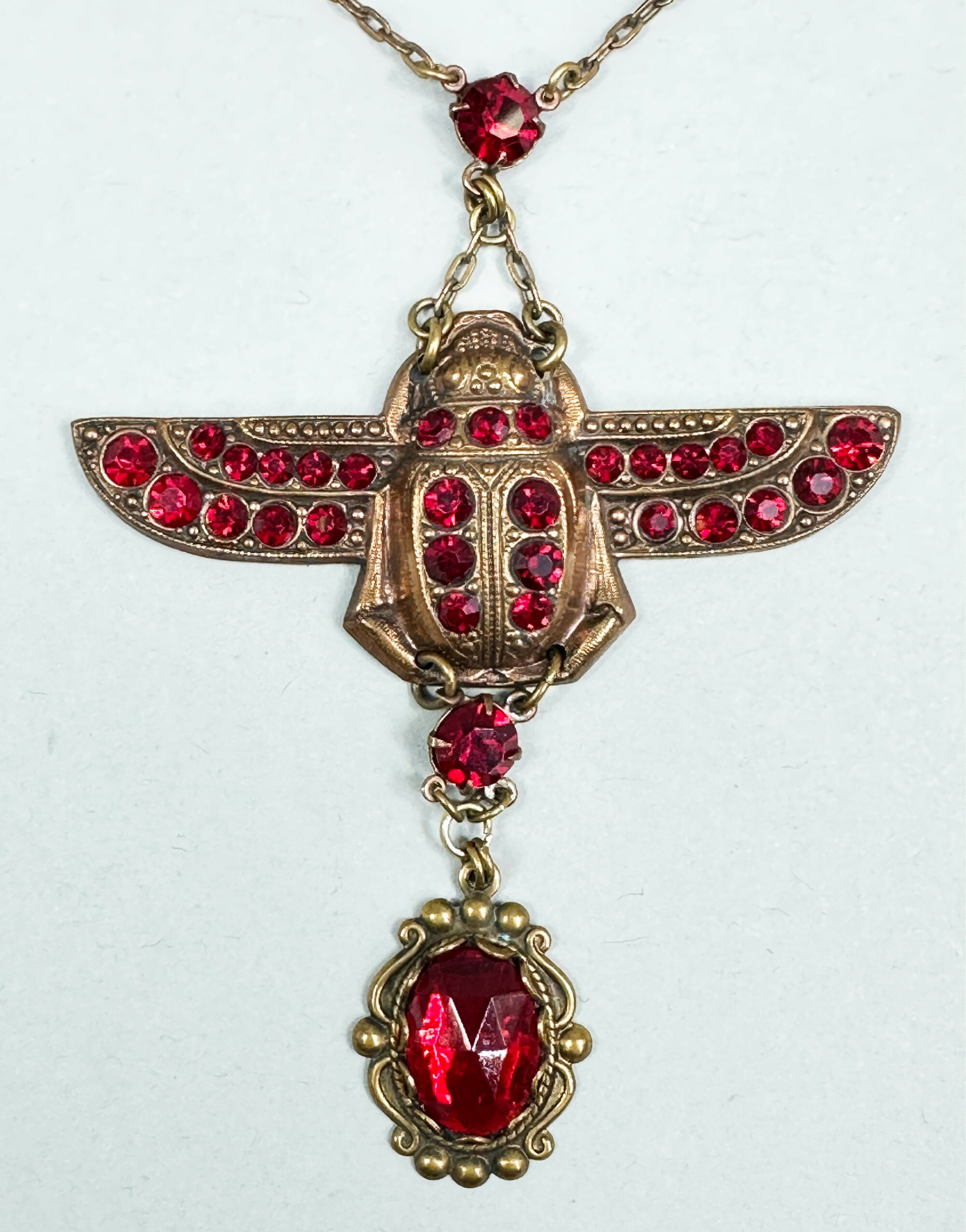
Early Egyptian Revival necklace c1900
Price: £35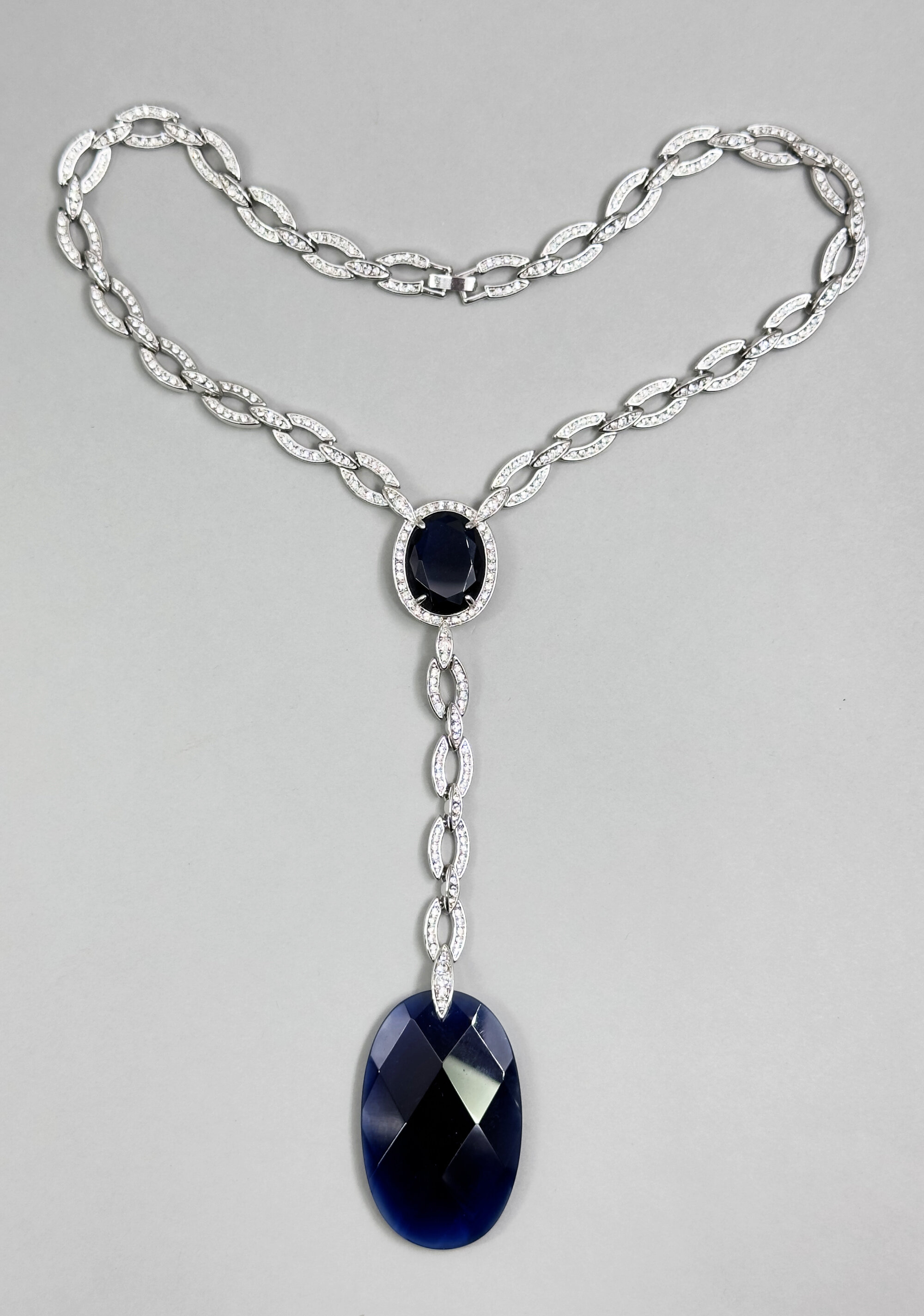
Art deco style necklace with large blue stone c1970
Price: £35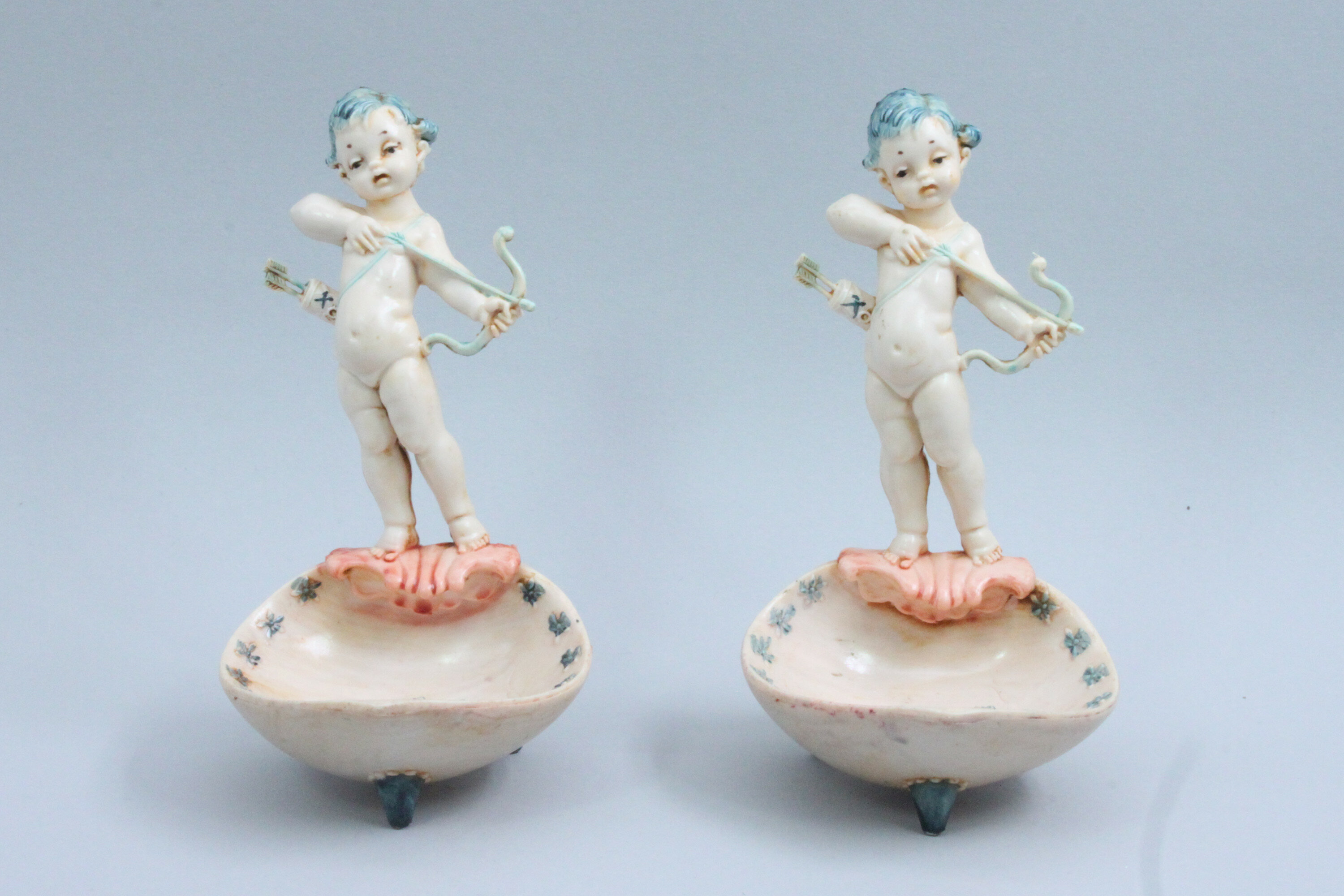
Pair of Bakelite Salts, Italian Fontanini, mid C20th
Price: £45The well known Italian firm Fontanini, now famous for producing nativity Sets, was founded by Emanuele Fontanini as a small local business in a single room in the tiny Tuscan town of Bagni di Lucca. Working at first in papier mâché, the business turned to the use of bakelite once it became available, marking their pieces with a spider emblem and the wording ‘depose Fontanini up until the 1970s after which these were replaced by the Fontanini name, the date of manufacture, and a small fountain, which allows fairly accurate dating here. Manufacturing is now caried out by the fourth generation of the family.
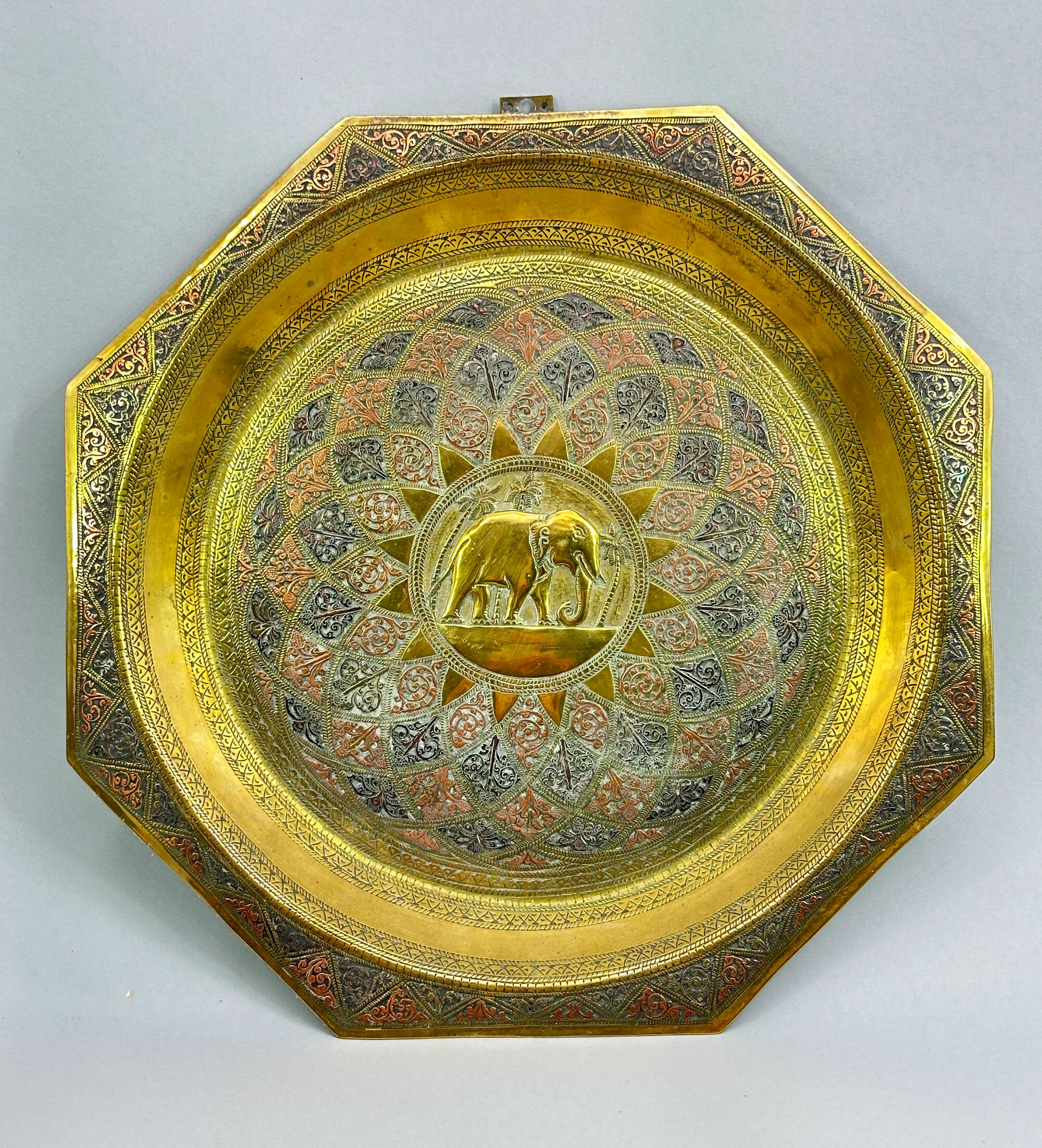
An Octagonal Brass Tray with a roundel of an elephant, probably Persian early C20th
Price: £45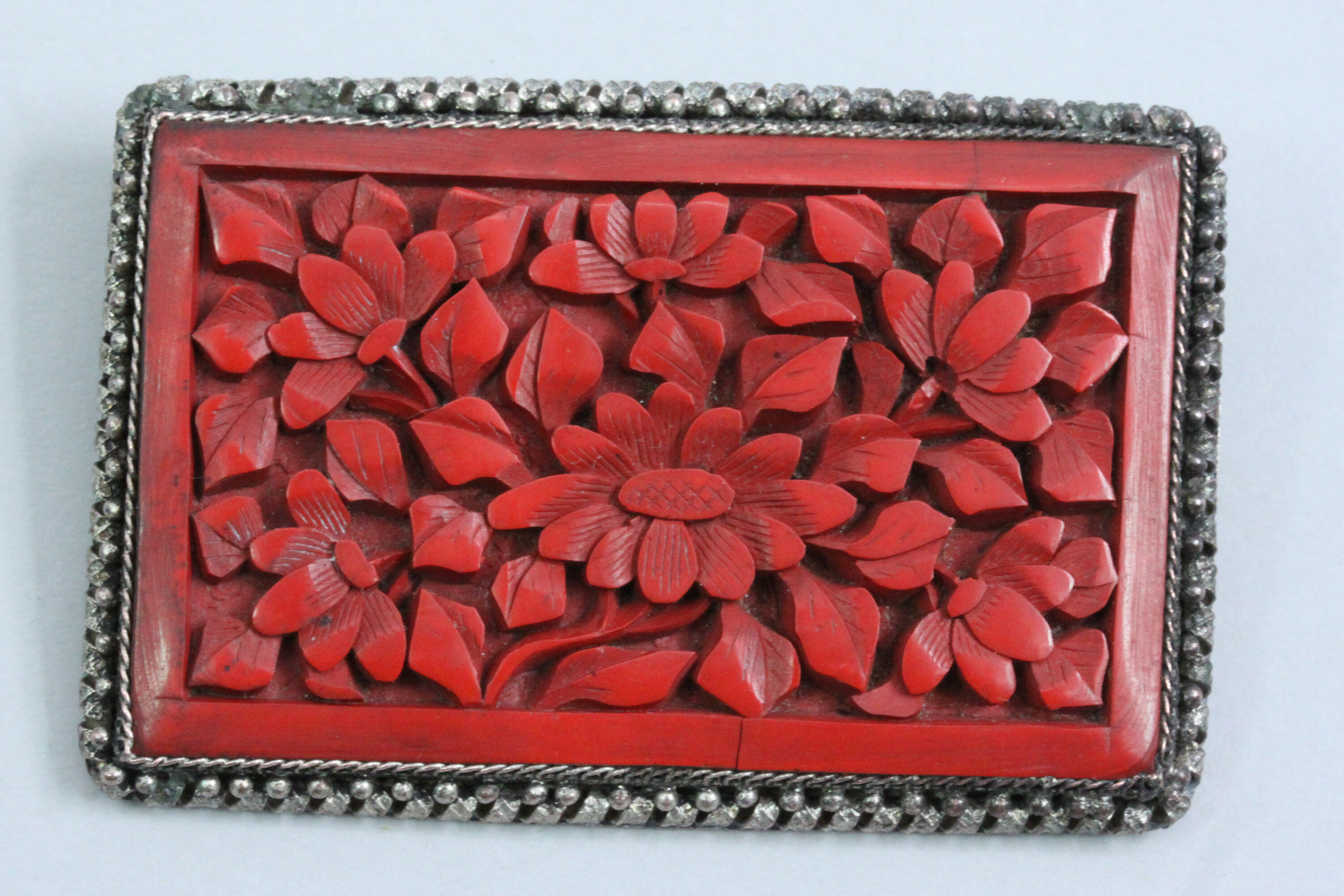
Large Cinnabar and filigree silver brooch, 1930s
Price: £35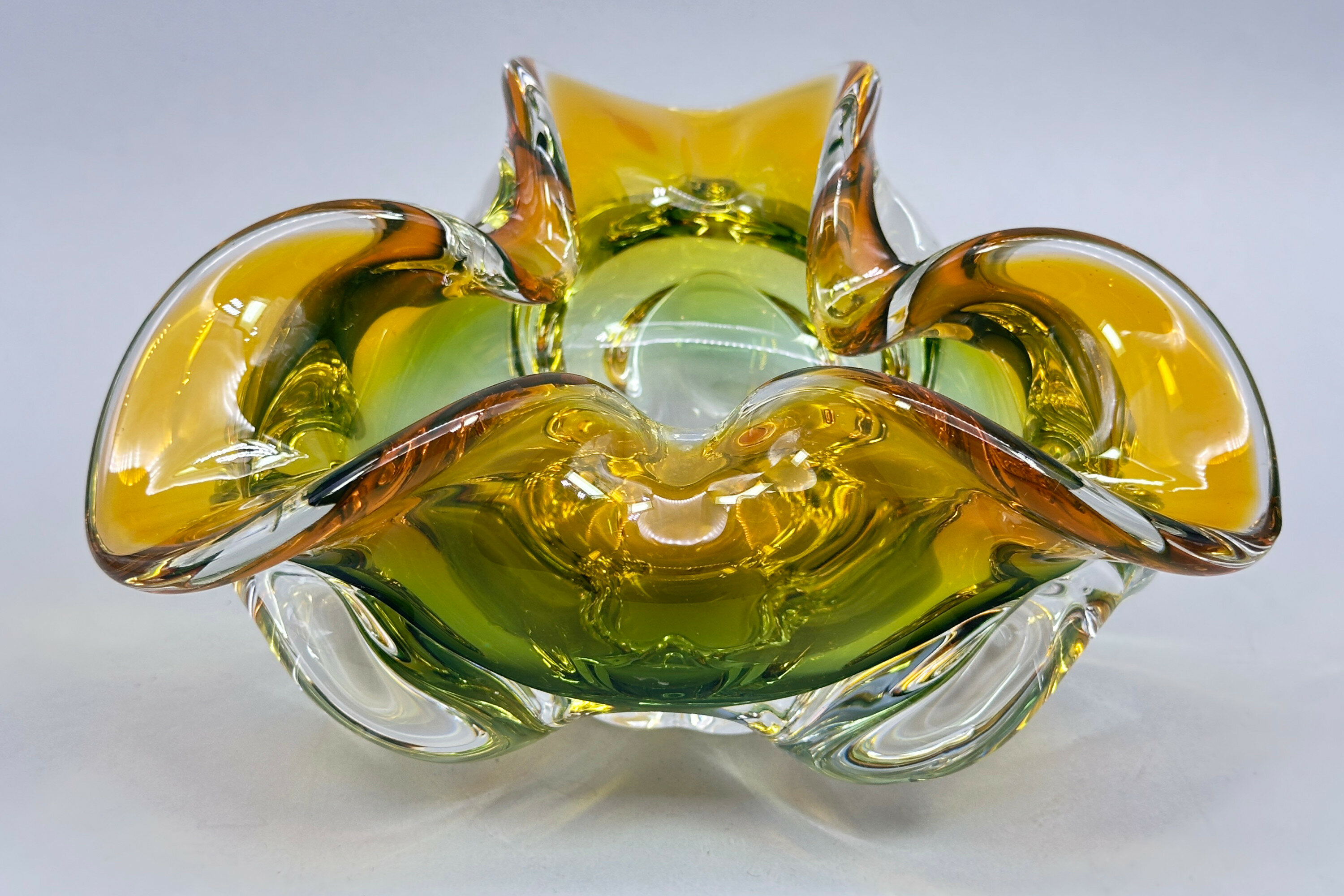
Chřibská Glass bowl designed by Josef Hospodka, Czech 1970s
Price: £75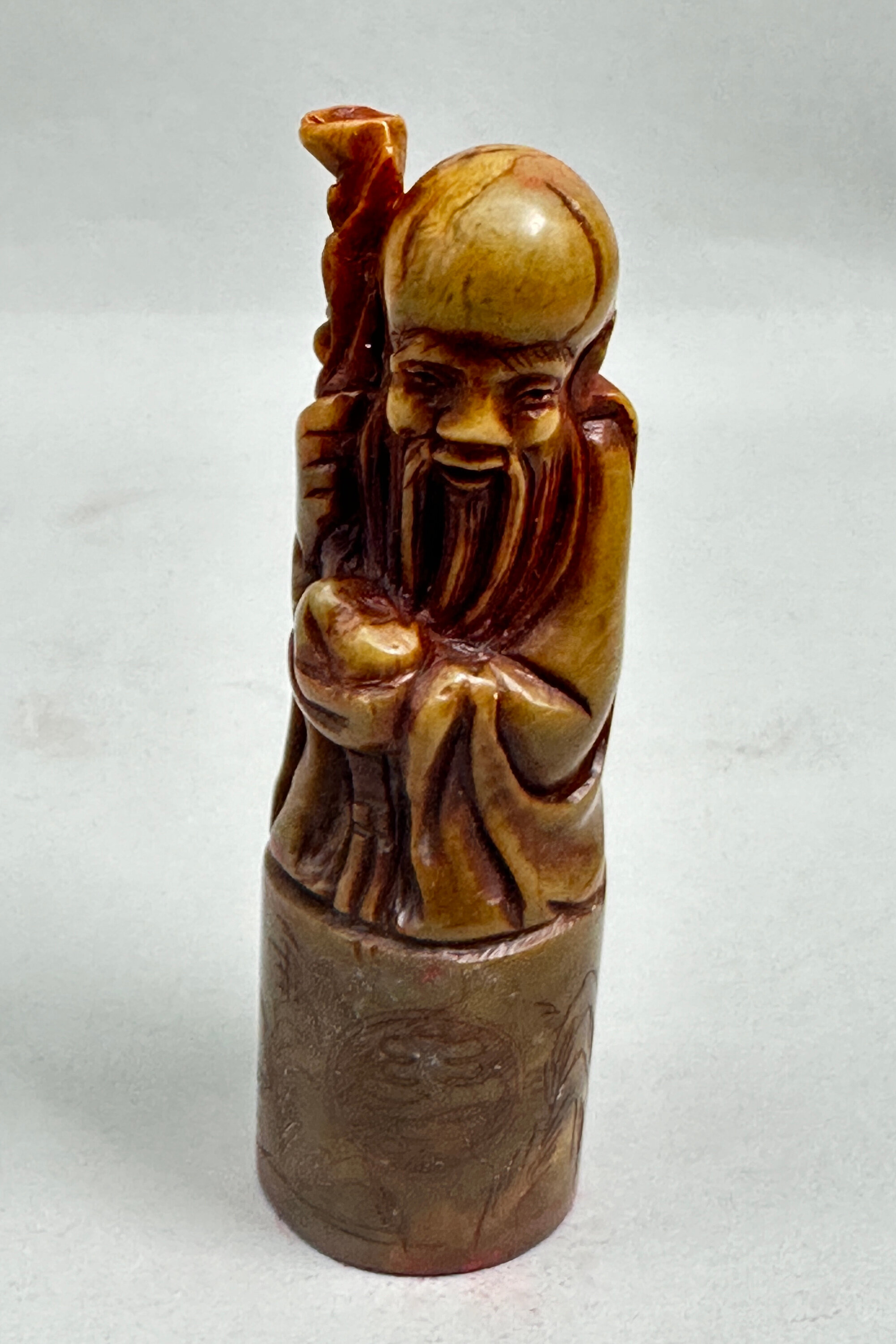
Chinese Soapstone Seal with Shou Lao, C20th
Price: £45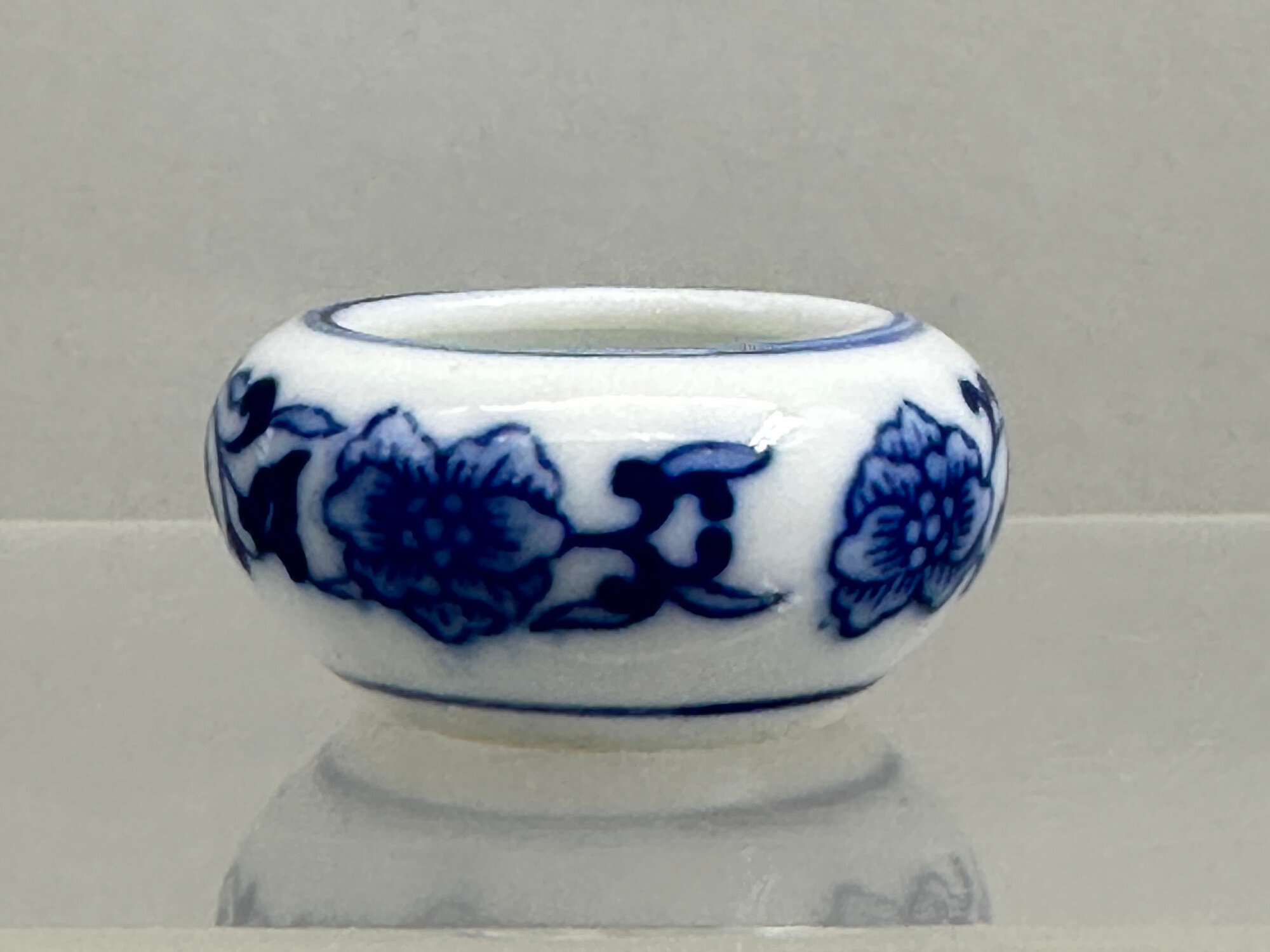
Small Chinese Blue and White Brushwasher, C20th
Price: £25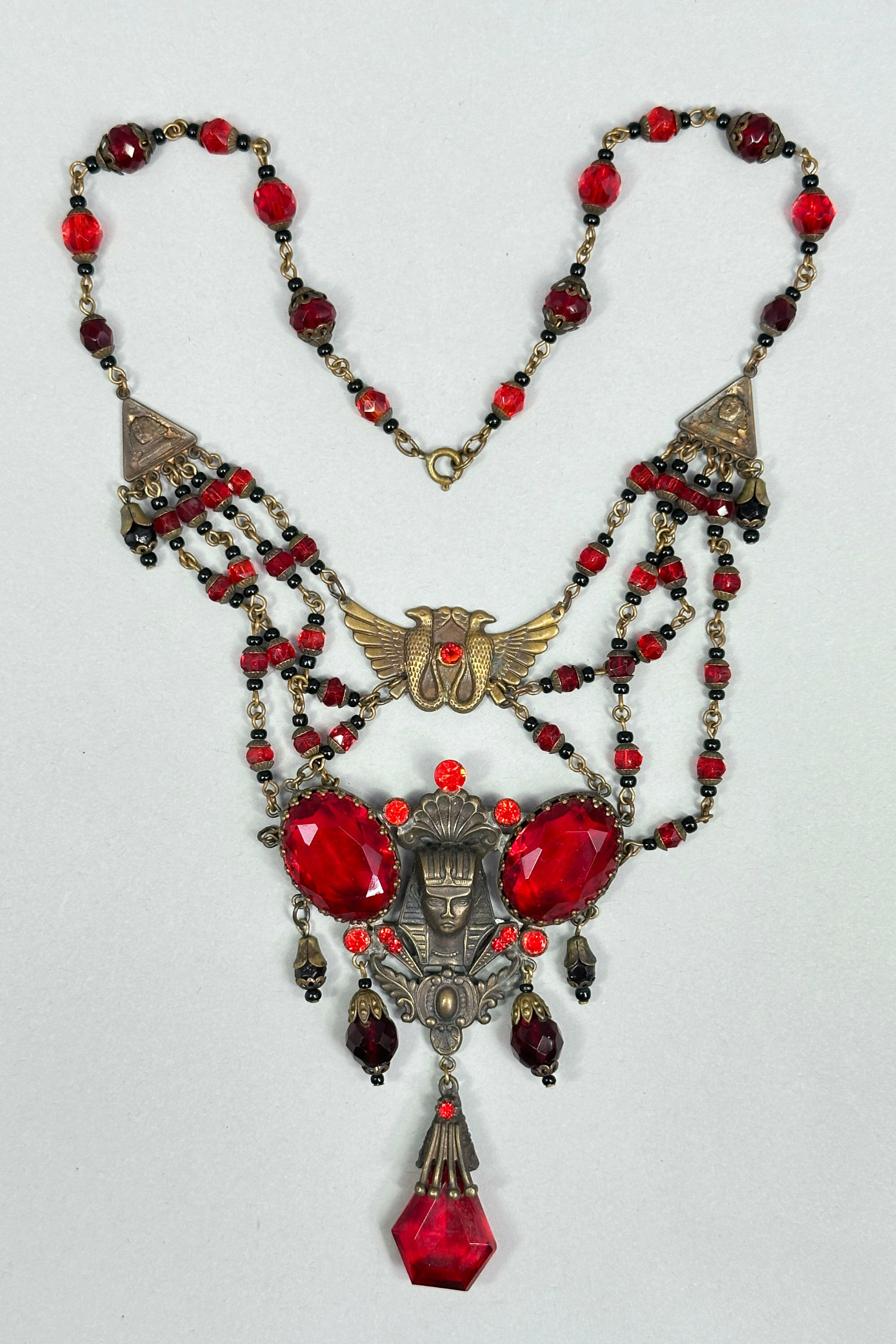
Early Egyptian Revival necklace with ruby glass stones c1900
Price: £175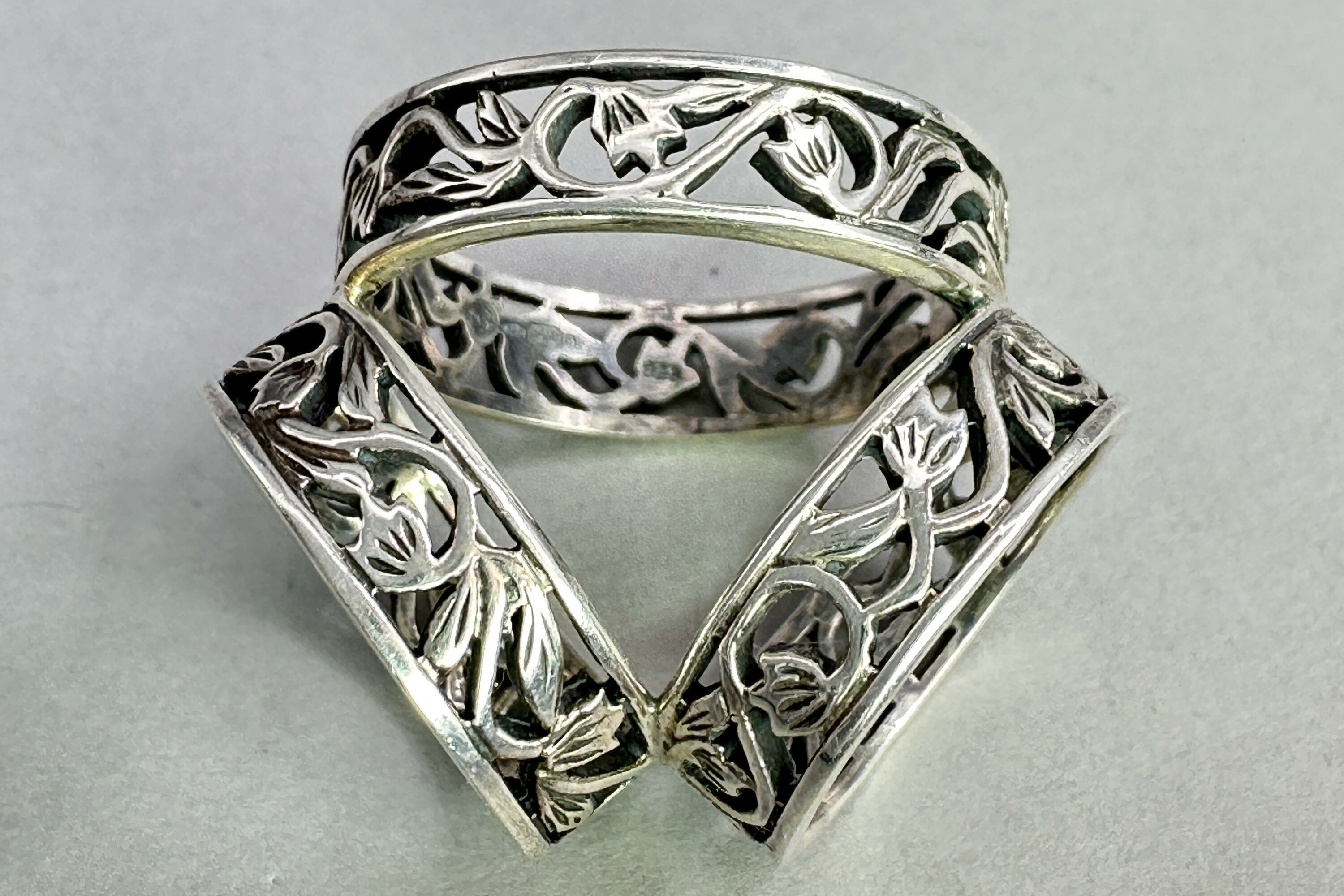
Rennie Mackintosh silver scarf ring with scarf included, c1990
Price: £45
Unique 40 strand micro coral bead necklace, India 1910
Price: £150
Pair of Edwardian Chinese silver brooches, c. 1910
Price: £25
Victorian silver bracelet set with garnets 1900
Price: £35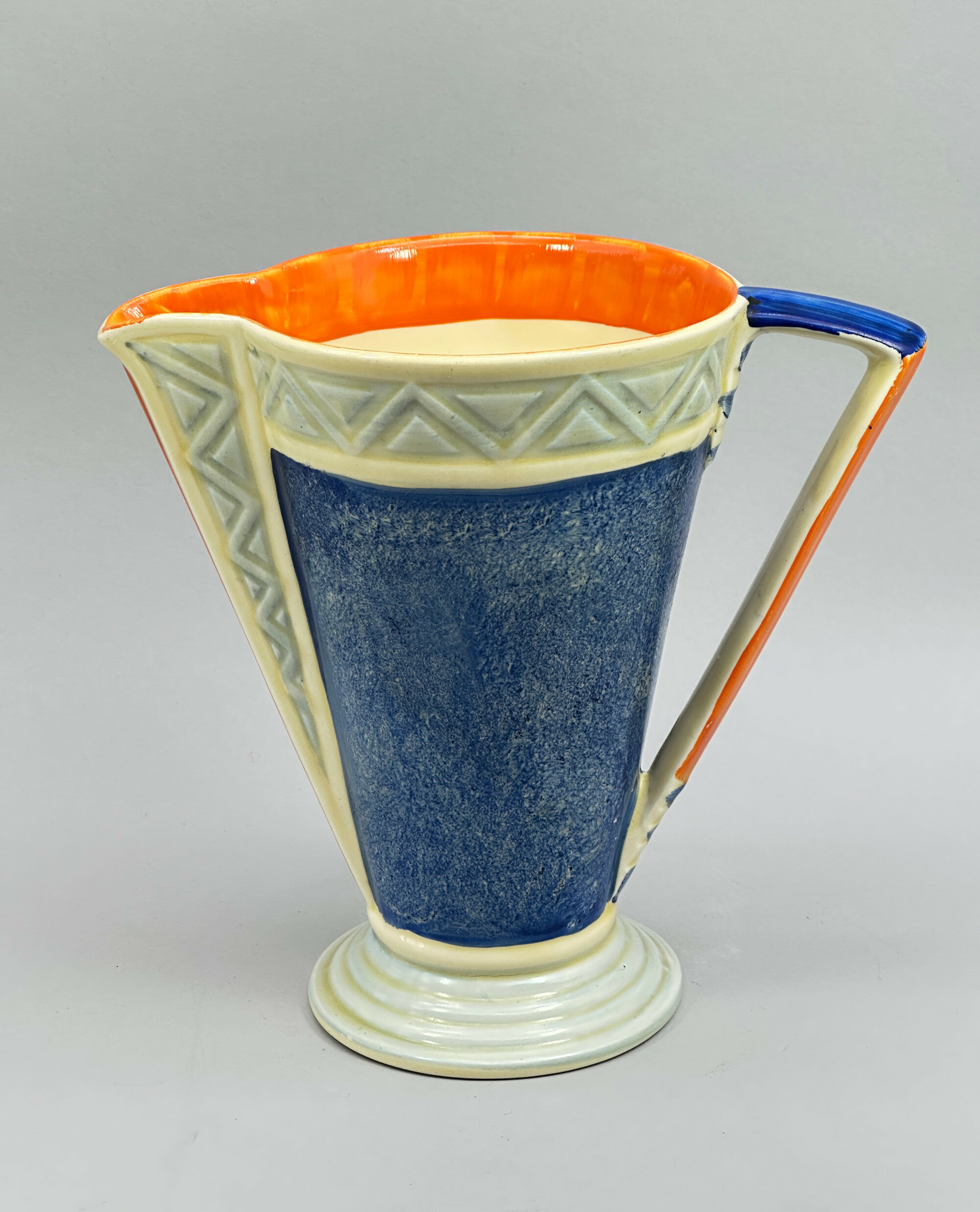
Myott Son & Co Art Deco style Jug, 1930s
Price: £75Myott Son & Co was one of famous the Staffordshire Potteries and traded for over 90 years. Founded in 1898, it began production in Stoke moving to Cobridge four years later. Its output was continuous but in 1949 the firm suffered a disastrous fire which reportedly destroyed the firm's records and pattern books and probably for this reason it relocated to Hanley. In 1969 it was bought by the American firm Interpace, but the Myott name was retained until 1976 when the company merged with Alfred Meakin Ltd, who were based in Tunstall, to form Myott-Meakin Ltd.
Myott now are best known for their Art Deco inspired designs from the 1930s. Following the success of their competitors, most notably the designs of Clarice Cliff, Myott established their own popular following and produced pieces which could rival the output of their celebrated competitors. This jug, with its clean lines and bold colours is an excellent example and like others of the same form bears the pattern umber ‘8498’. Some of their glazes were easily subject to wear and blue was less commonly used so both the condition and the colour range of this jug make it a highly desirable collector’s item.
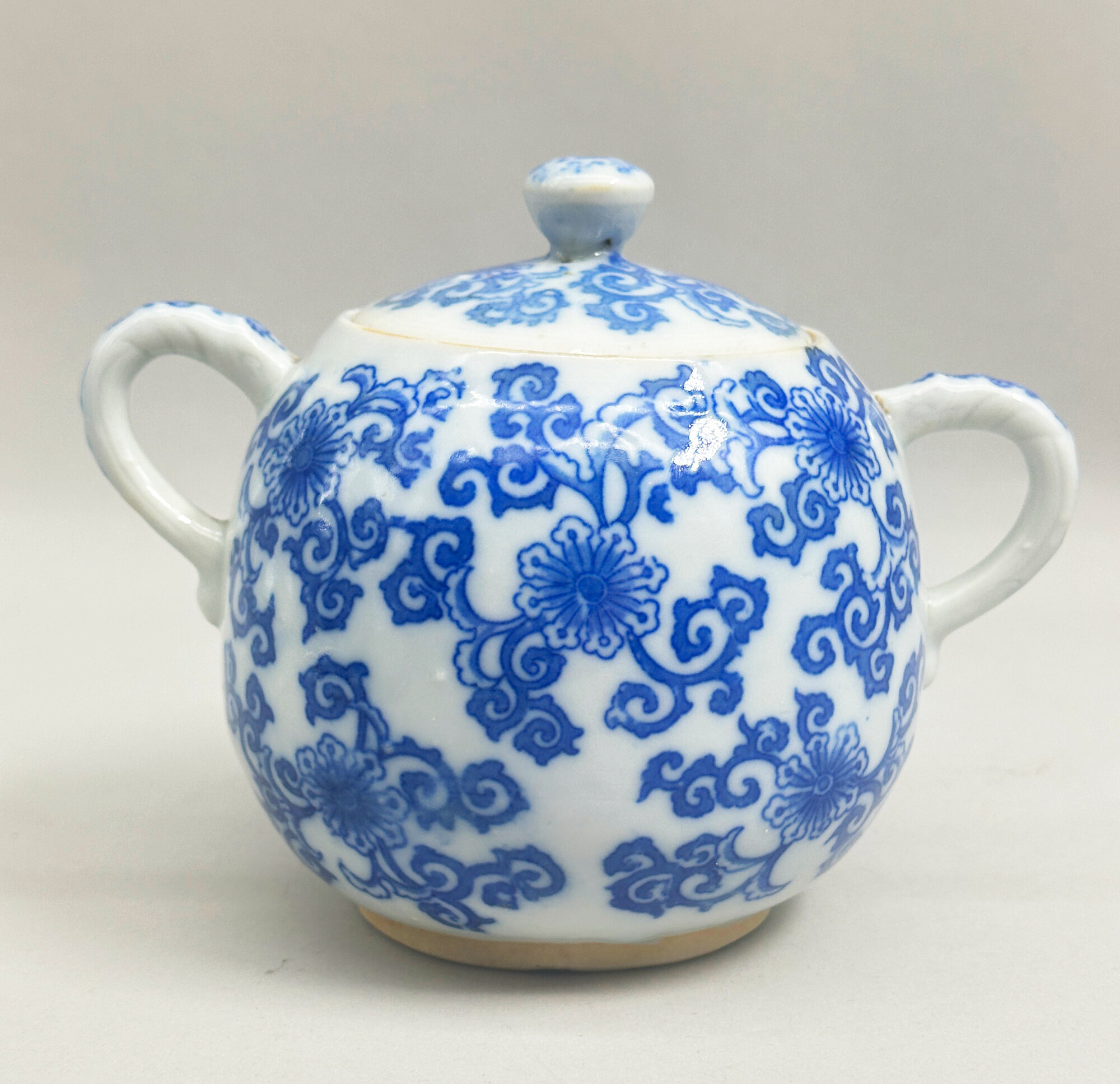
Japanese Blue and White Sugar Bowl and Cover, first half C20th
Price: £25
Stunning rope and tassel necklace, signed, c1990
Price: £45
Large Art Nouveau enamel and silver brooch c1910
Price: £150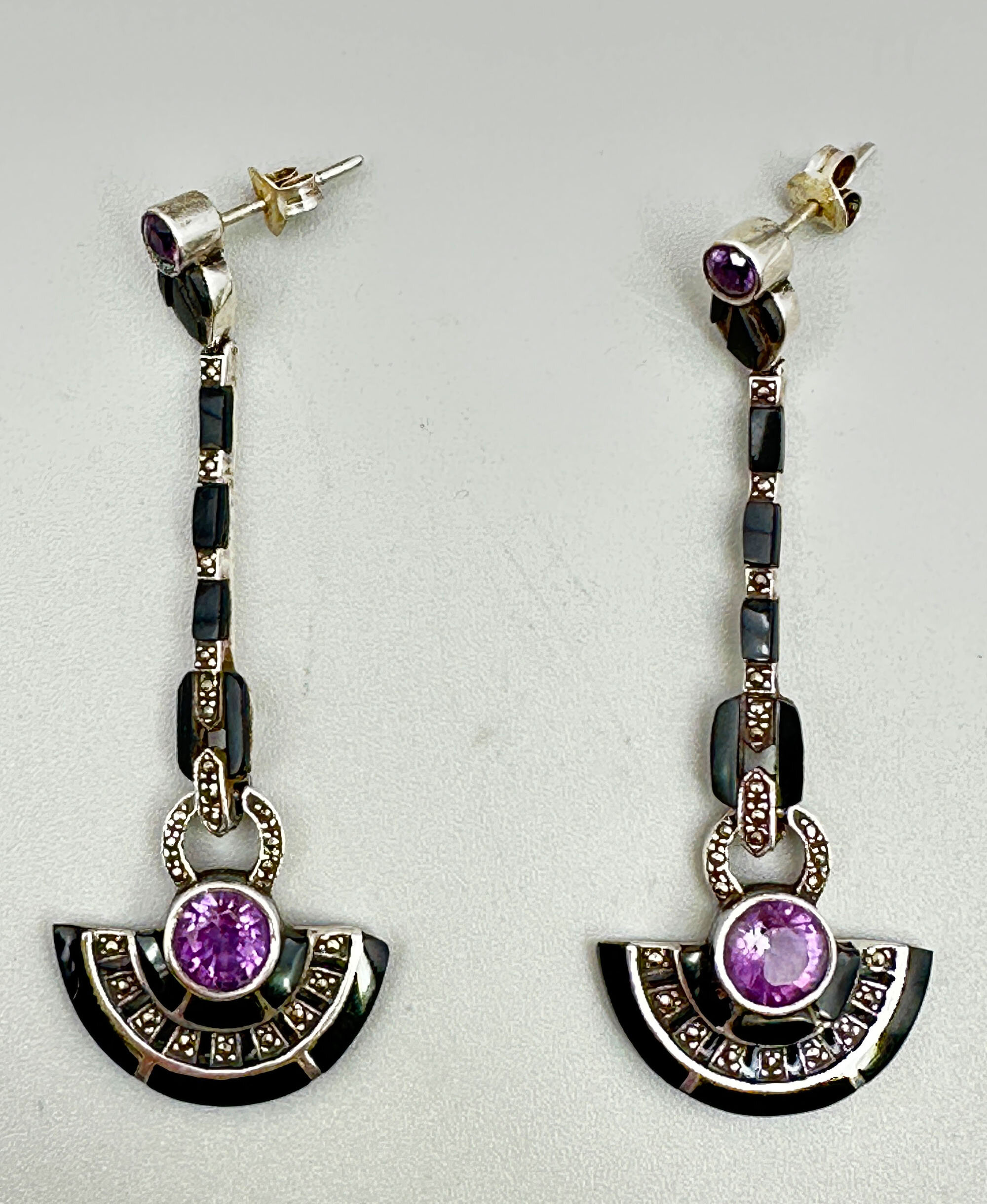
Art Deco style earrings with onyx and amethyst c1970
Price: £85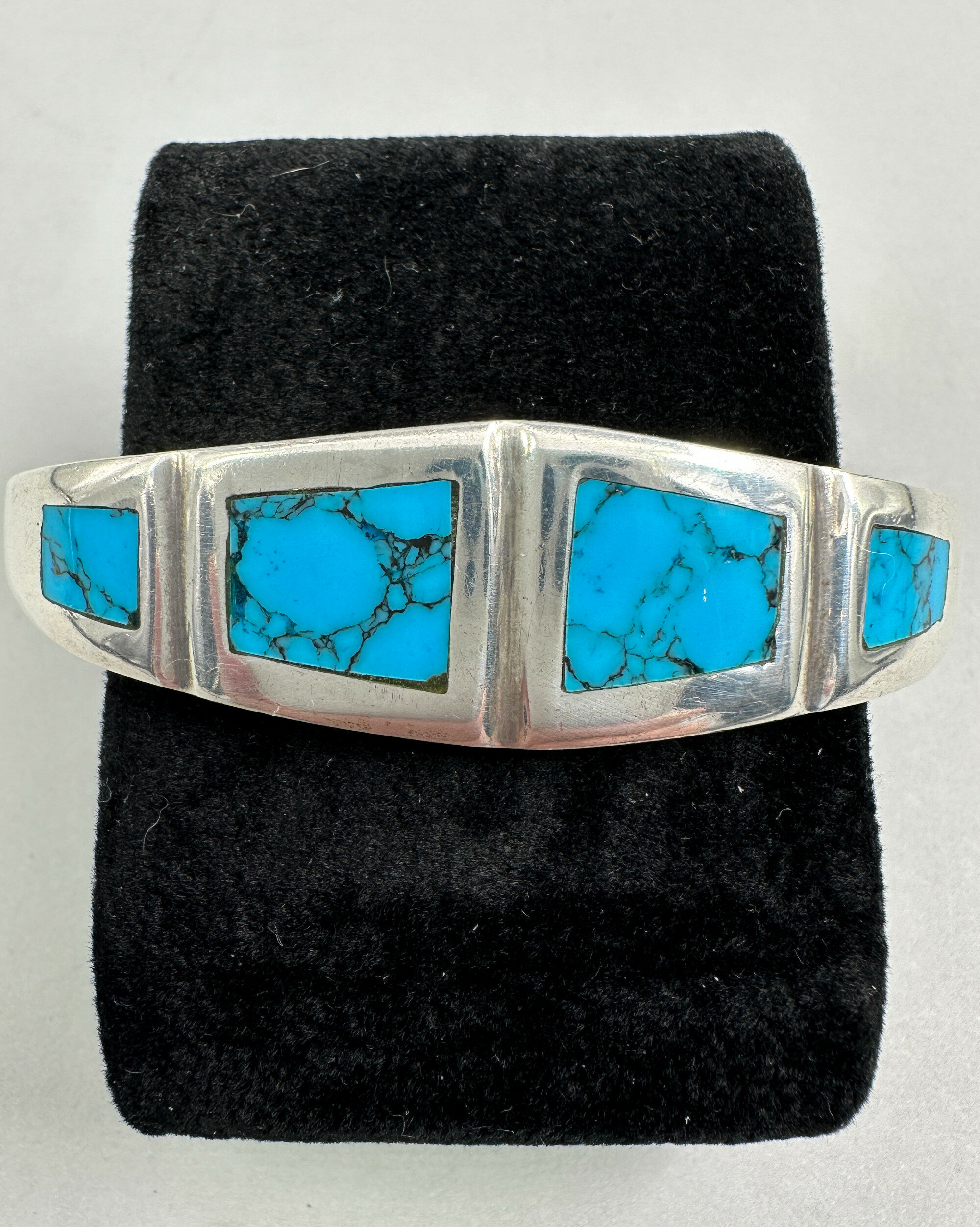
Mexican silver bracelet set with turquoise plaques, c1990
Price: £75
An Arts and Crafts small Brass Tray, English early twentieth century
Price: £40
An Arts and Crafts small Brass serving Tray, English early twentieth century
Price: £40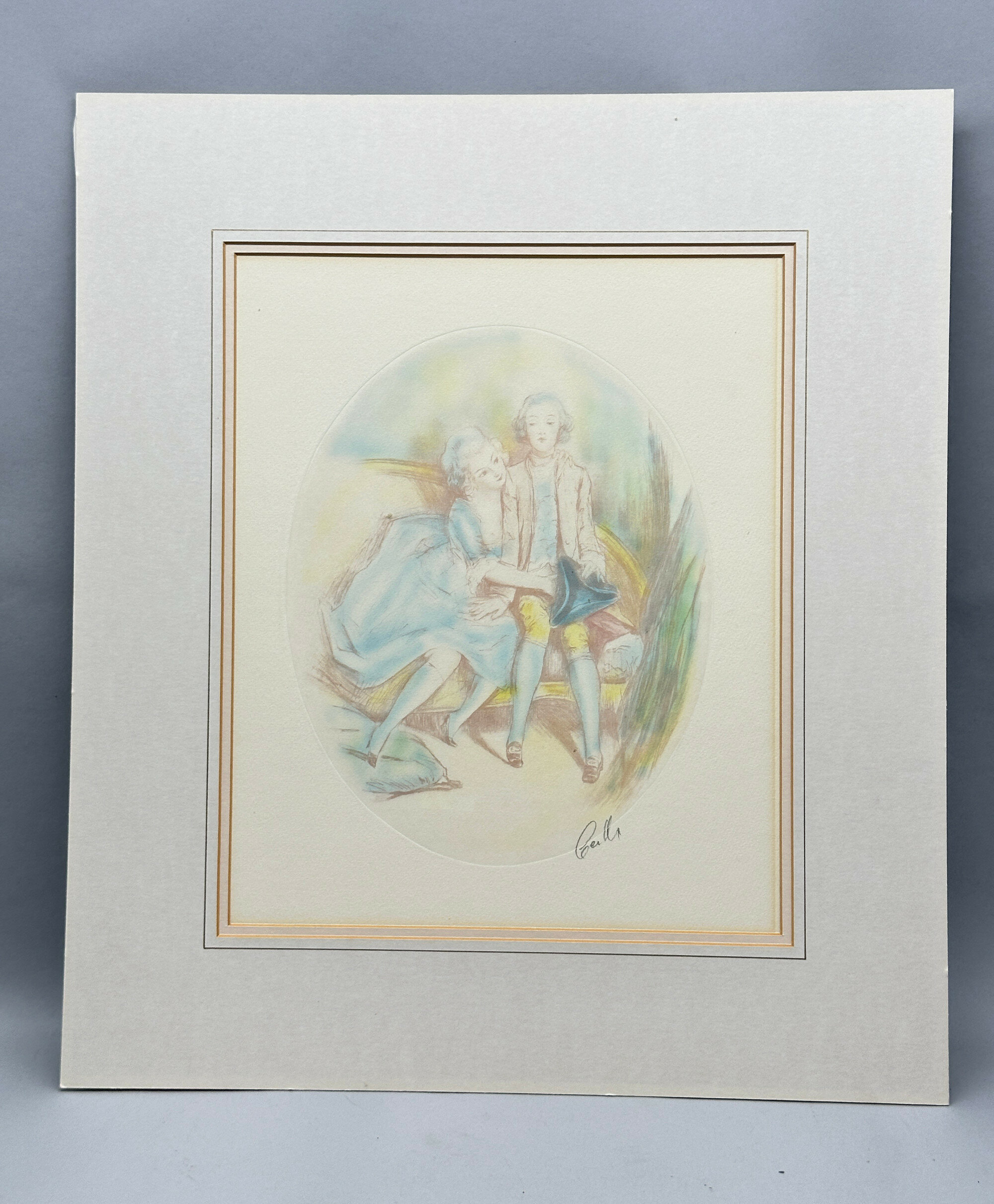
Mounted aquatint engraving of a Courting Couple, signed, probably French C20th
Price: £45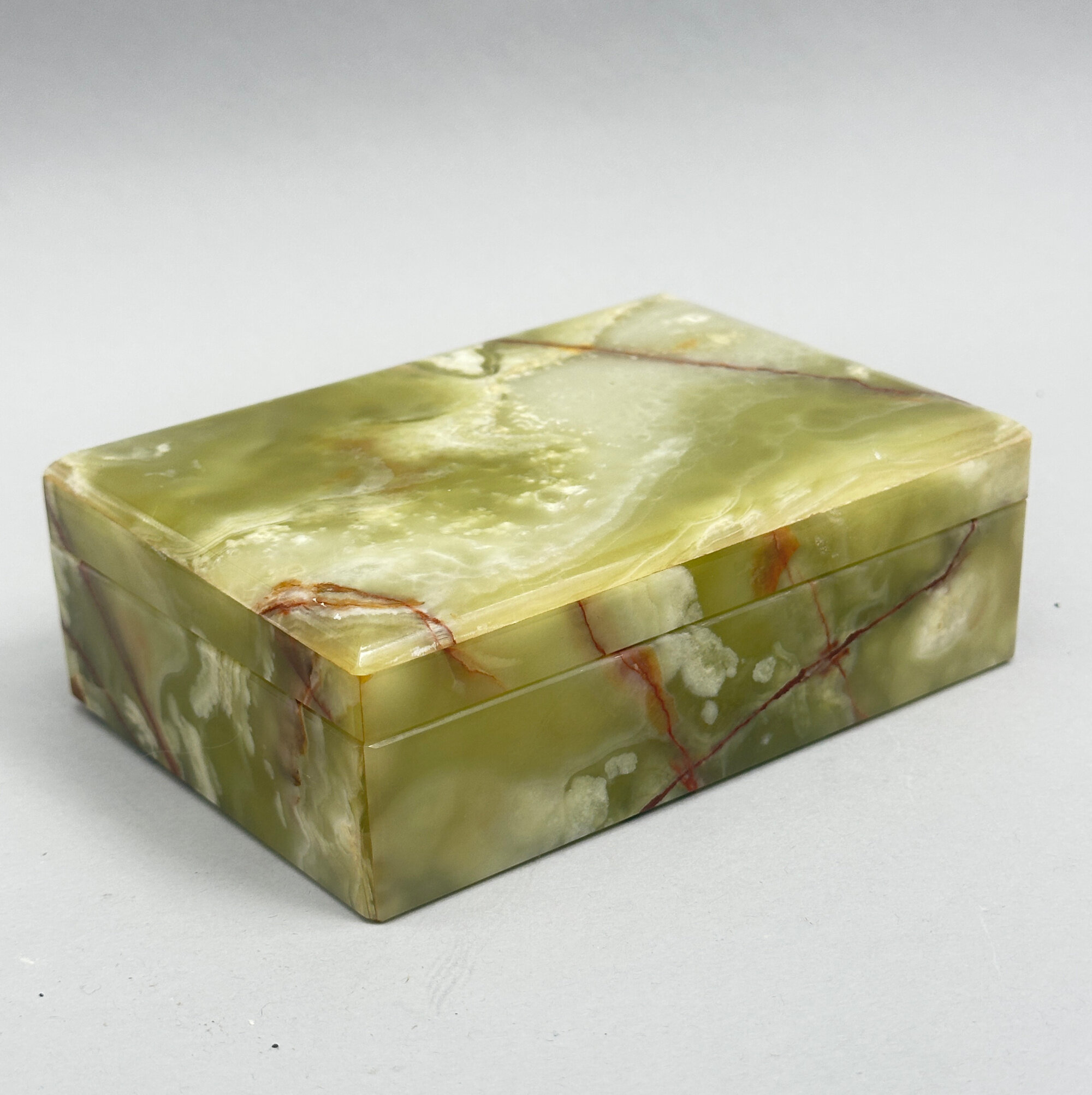
Rectangular Green Onyx Box and Cover, 1960s
Price: £35
Nesting Set of Four Small Brass Trays with an engraved designs of Bats, Chinese C20th
Price: £30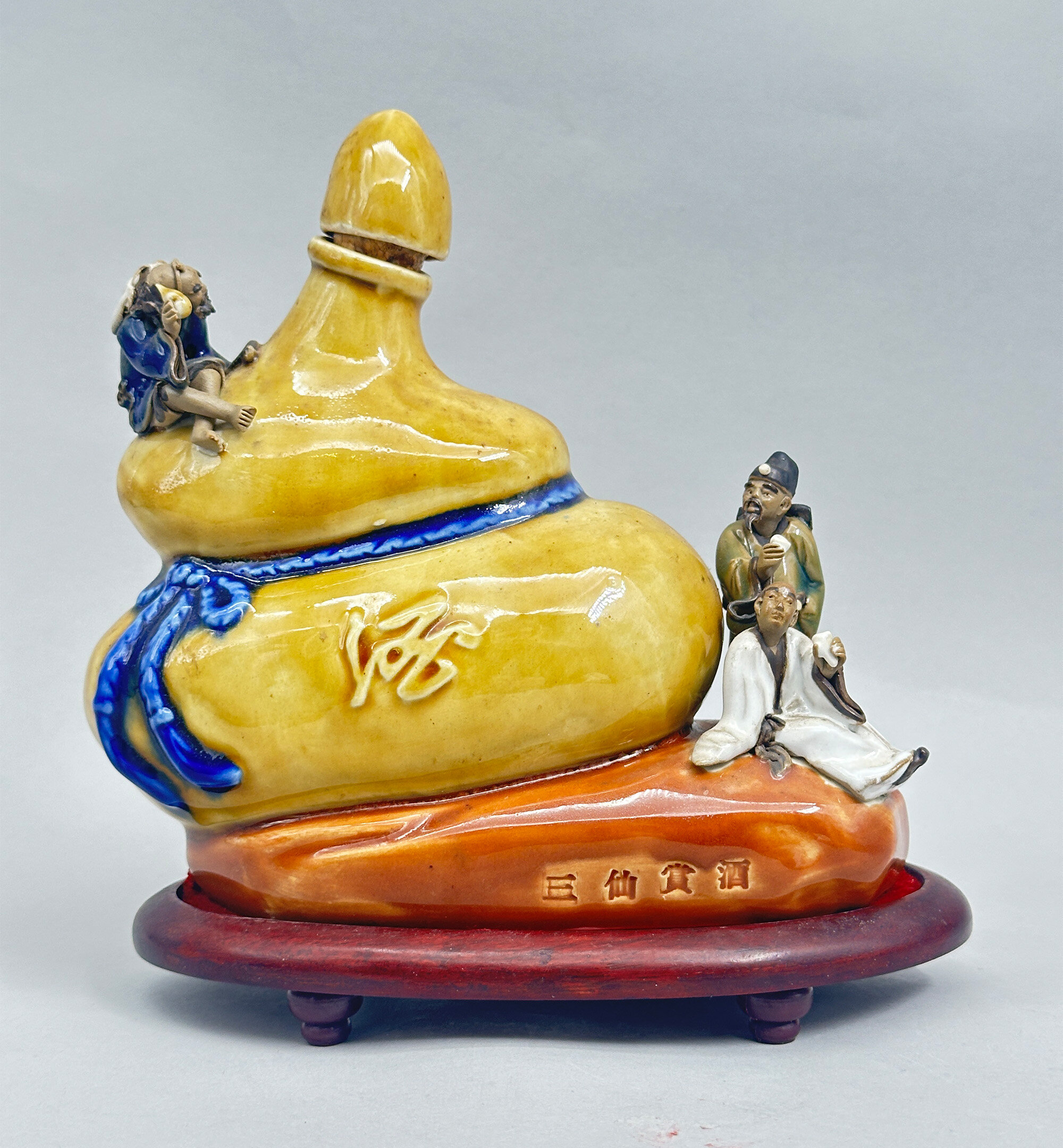
Chinese Qu Wine Decanter, Sam Seng Wine Co, late C20th
Price: £35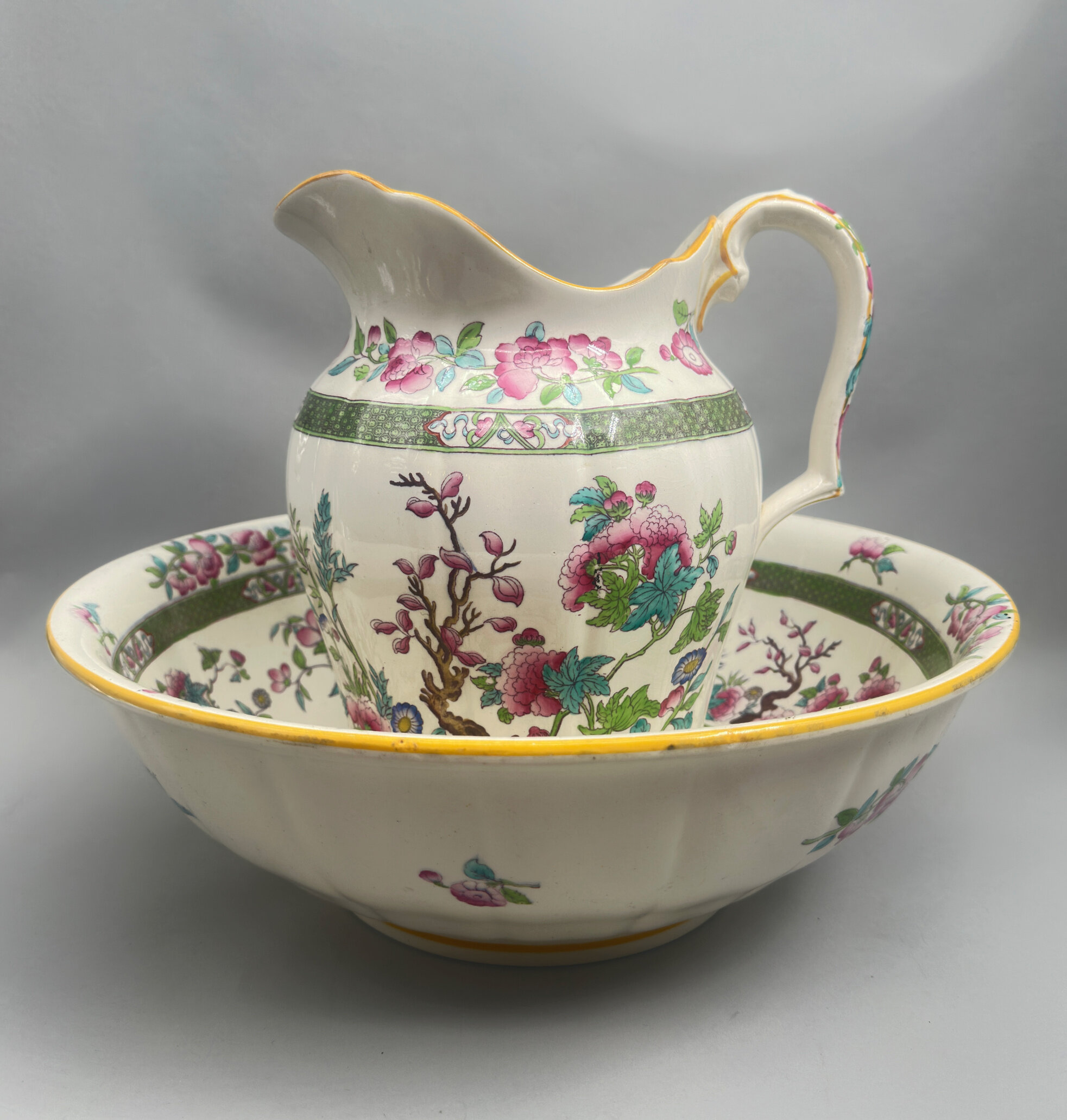
Minton Indian Tree Pattern Pitcher and Basin circa 1900
Price: £350………………………………………………………………………………………………….................................................................................
The celebrated firm of Mintons was founded by in 1793 by Thomas Minton (1765–1836) at Stoke-upon-Trent, Staffordshire, England as ‘Thomas Minton and Sons’, producing earthenware. The initial ranges were standard tablewares in blue transfer-printed or painted earthenware, including the ever-popular Willow pattern. By the mid nineteenth century and in partnership with Michael Hollins, Mintons began the production of decorative finishes for the interior and in particular floor tiles which enjoyed enormous demand and were the subject of numerous prestigious commissions including a contract for the flooring of the American Capitol. This was followed by the introduction of the plain white glazed ‘Parian’ wares and then the Italian inspired ‘majolica’ pieces with their richly coloured lead glazes. Mintons continued to follow popular trends, working with Christopher Dresser, recruiting Louis Solon from Sevres who had developed pâte-sur-pâte wares and finally contributing to Art Nouveau ceramics with a speciality in secessionist wares.
But the manufacture of tableware continued alongside all these other developments and Mintons adopted and adapted the popular ‘Indian Tree’ pattern which was first produced by Coalport in 1801. This design fused elements from Indian textiles and Chinese ceramics into an amalgam with immediate appeal. The pattern includes the crooked branch of a tree and a partial landscape including exotic flowers and leaves with a palette of colours emphasising green, blue, pink, and orange, resembling quite closely the Chinese export wares decorated in ‘Famille Rose’ enamels which had been exported to Europe in great quantities in the eighteenth century. Many of Coalport’s rivals, including Spode, Wedgwood and Royal Worcester produced their own versions of the design, but Mintons’ interpretation was held to be one of the most successful.
It was used by Mintons to decorate a variety of shapes, mainly dinner and tea wares, but the toilet pitcher and matching basin are seldom found in this pattern. Both the forms are extremely elegant, the pitcher with light fluting, a scalloped rim and a complementary handle, while the basin, also lightly fluted, employs simple lines with a turnover rim which follow the shape of a Chinese original. All the standard elements of the pattern can be seen, in particular the twisted tree, and the diaper work borders again reflect Chinese originals.
Both pieces are marked with the pattern number ‘T 216’ and a Minton stamp, the form of which allows fairly accurate dating. The globe topped by a crown with the banner ‘Mintons’ was used from 1873-1912 but ‘England’ was only added after 1891, giving a circa date in the late nineteenth or early twentieth century, probably around 1900. The original toilet set, which would have included the pitcher and basin along with, probably, a chamber pot, a soap dish, candlesticks and other accessories, was clearly a ‘deluxe’ item at the time and its quality is still apparent today when it can be enjoyed simply for its decorative appeal and as a reminder of a past era of grandeur.

Ceramic Model of a Fish, Jema Holland, signed, 1950s/1960s
Price: £30The Jema factory in Holland was started by two brothers, Jelis Mager ( born 1912 in Rotterdam, Netherlands) and his brother Johan Willem Mager (born 1919 also in Rotterdam) both living in Maastricht who took over an existing ceramics factory, founded originally by J.Meussen, in 1942 and traded together in a partnership which was dissolved in 1955 when the firm JEMA KERAMISCH ATELIER N.V. (jema ceramic studio; the first JE standing for Jelis and MA standing for Mager) was created under a new agreement between them. Ceramic products of many types were produced with figurines a speciality and the business continued until 1984 when it became insolvent and closed its doors.
Most of the pieces seem to have been marked, usually with an impressed script as here indicating the factory itself and the model number of the piece. For modest decorative items the quality of the manufacture is of a high standard as can be seen in both the modelling and the glazing of this piece. Their animal figurines were immediately approachable and provided modest but amusing items of decoration.
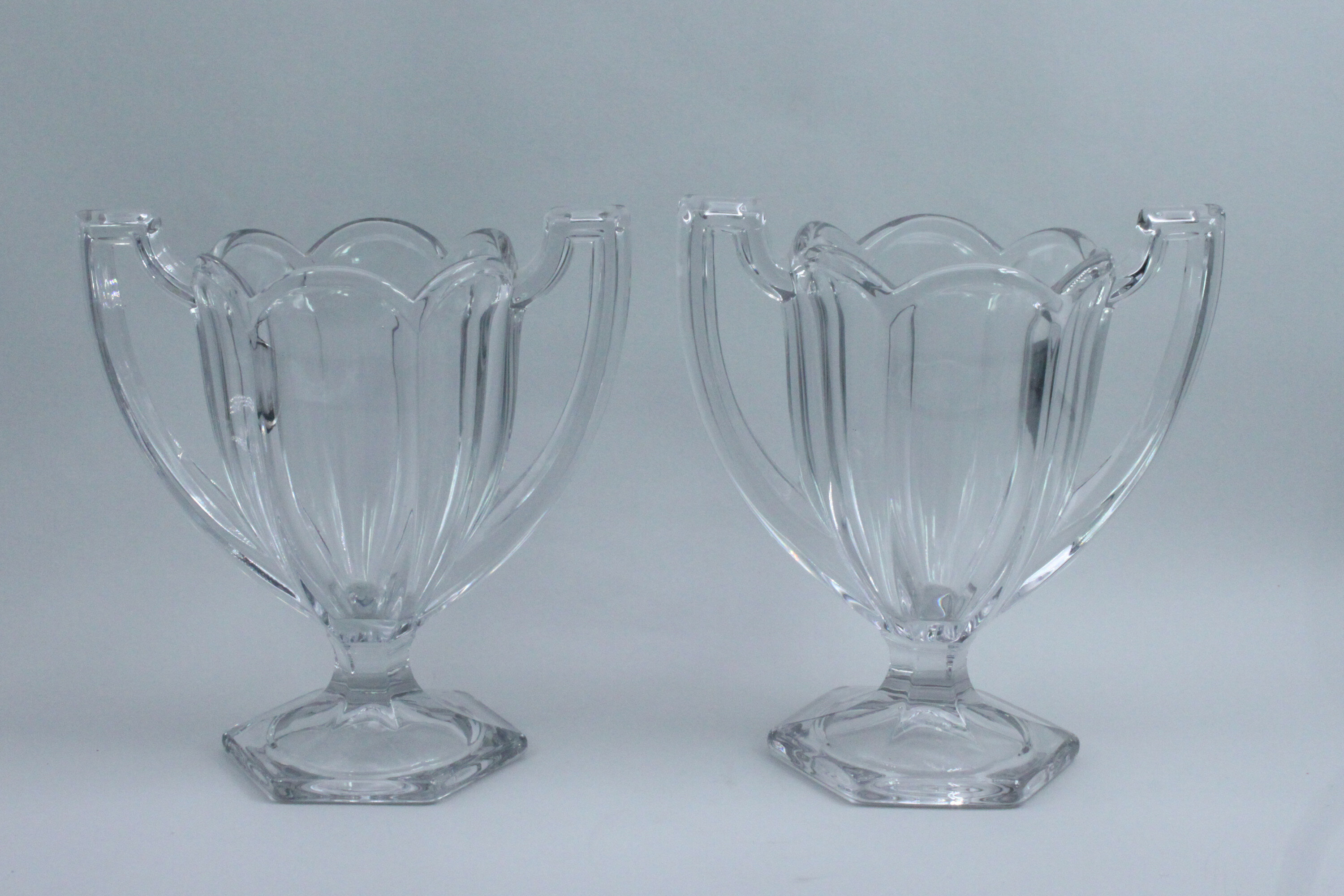
A Pair of Art Deco Pressed Glass Trophy Form Vases, Davidson, 1930s
Price: £45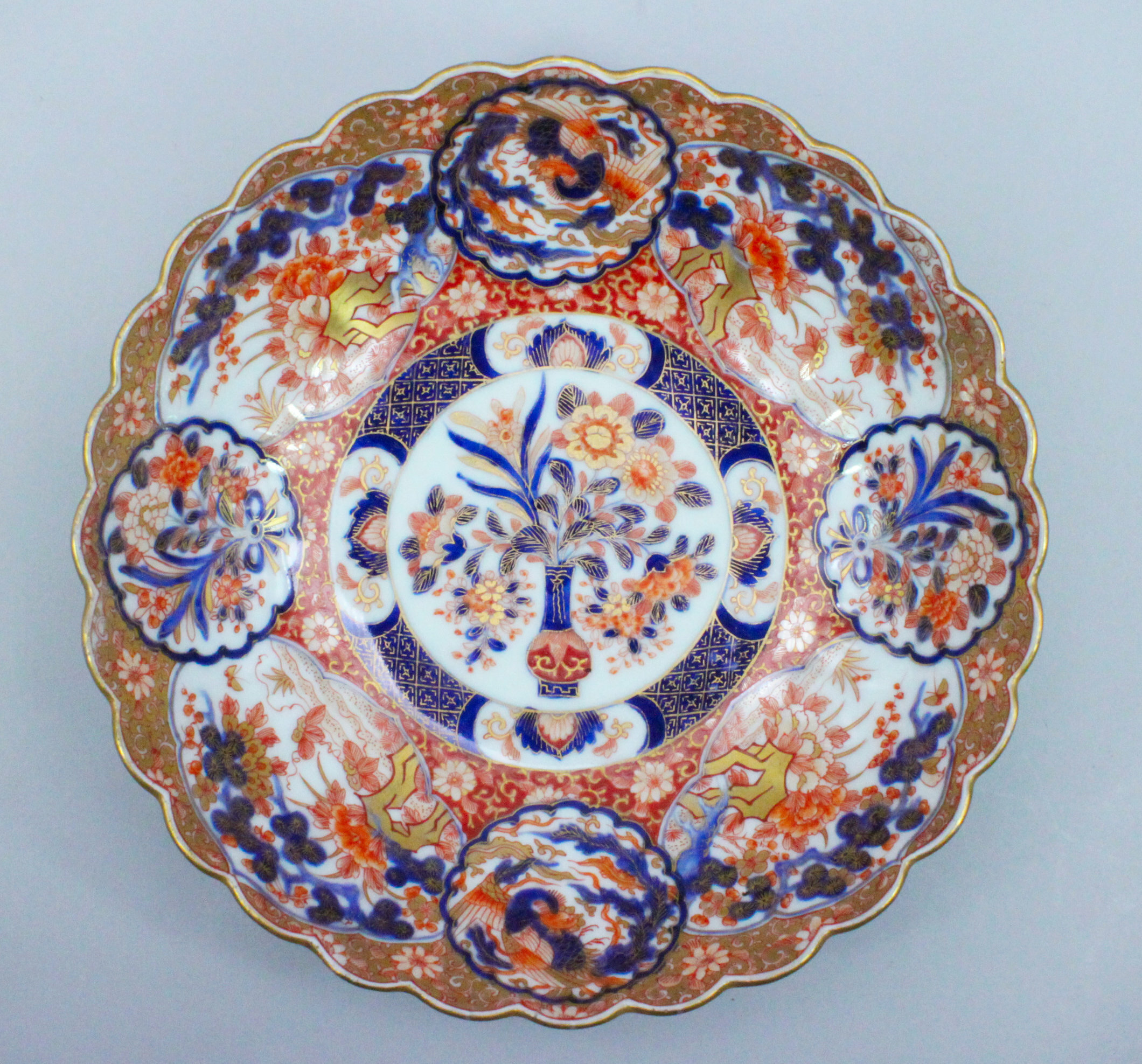
Japanese Fukagawa Imari Bowl, signed, circa 1880
Price: £380The Fukagawa kilns produced the best quality Imari items made in Japan in the late nineteenth century for export to the West. Their history starts with Ezaiemon Fukagawa who in 1856 became head of his family's porcelain business and in 1875 founded Koransha (The Company of the Scented Orchid) in Arita, Japan, to produce tableware for export. In 1894 the modern Fukagawa company was founded by Chuji Fukagawa, with the Fukagawa trade mark of Mount Fuji and a stream, as its trade mark. Dating here is within the Meiji period (1868 - 1912) probably around 1880. This conforms with the script mark used as opposed to the later symbol design.
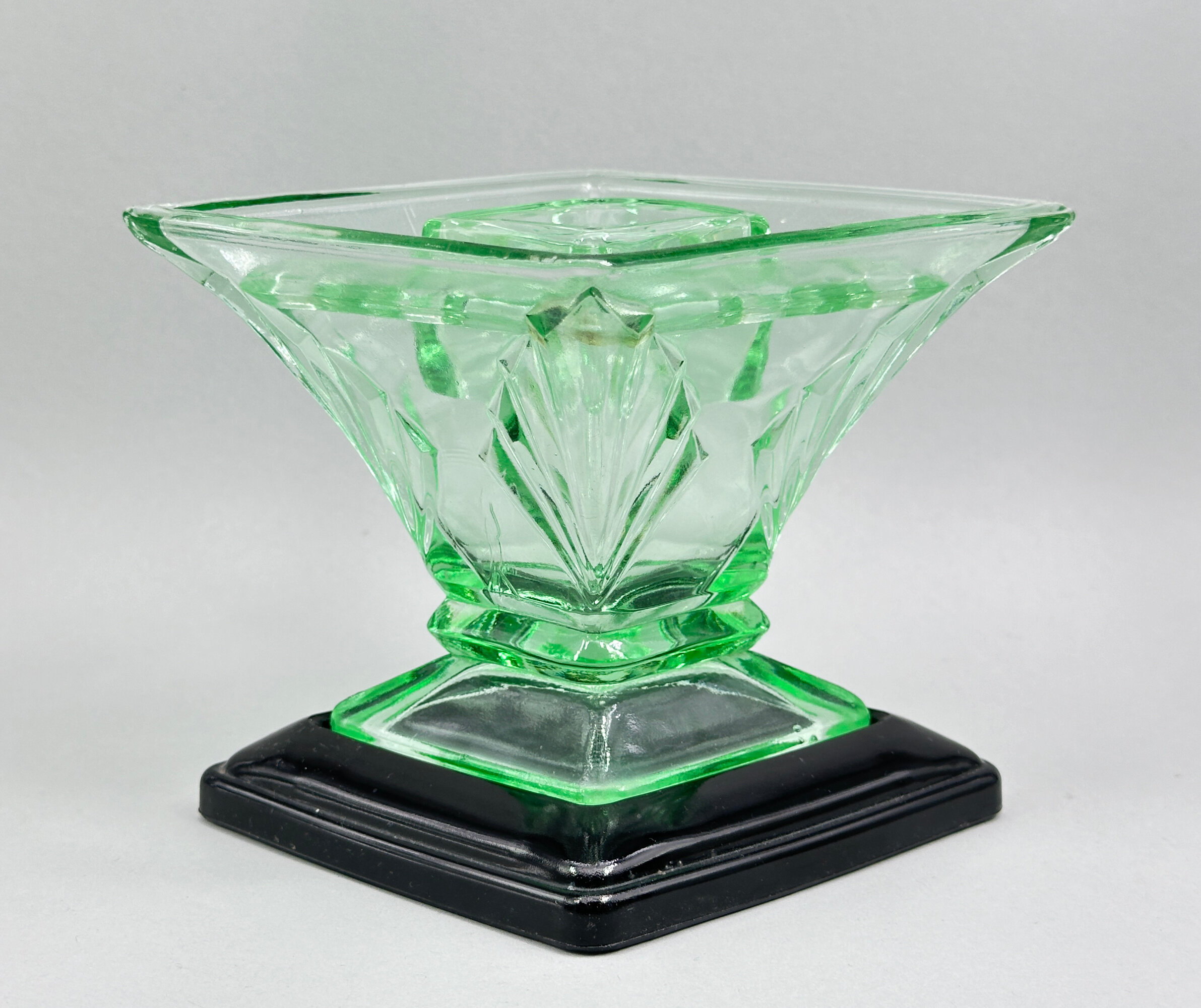
Art Deco Flower Vase, Frog and Stand, Bagley Glass, Spinette Range, 1930s
Price: £45Bagley Glass was established in Knottingly, England (south east of Leeds) in 1871. Bottle makers at first they branched out in 1912 and opened a department 'The Crystal Glass company' which made crystal and pressed glass. But it was for the latter that Bagley were to become famous and they became the biggest manufacturer of pressed glass in England in the years before and after the war. Many of their designs were influenced by the Art Nouveau styles and this flower vase, unusually presented complete with its frog and stand, is a classic example of their range.
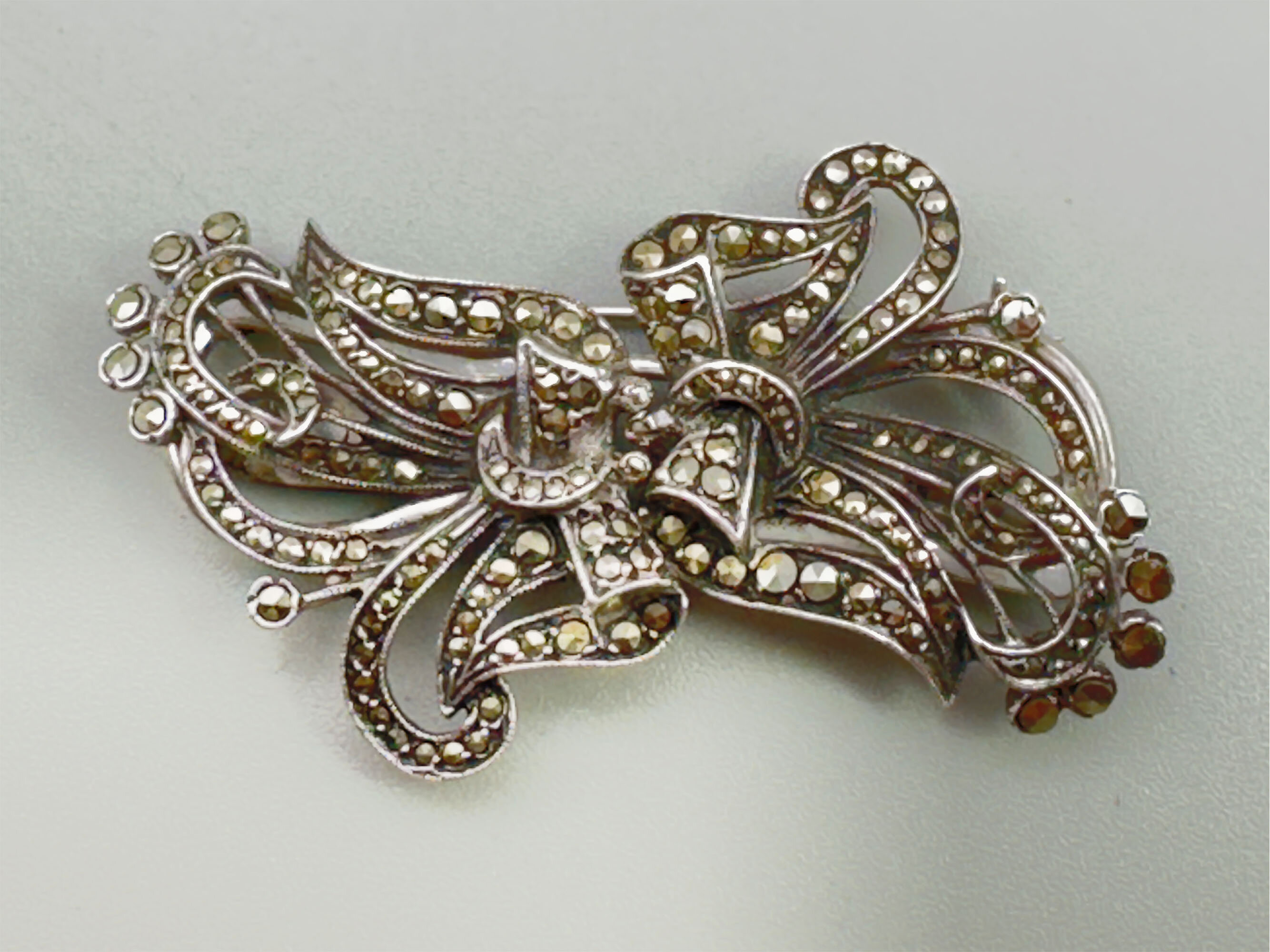
Art Deco convertible brooch dress clips c1930
Price: £95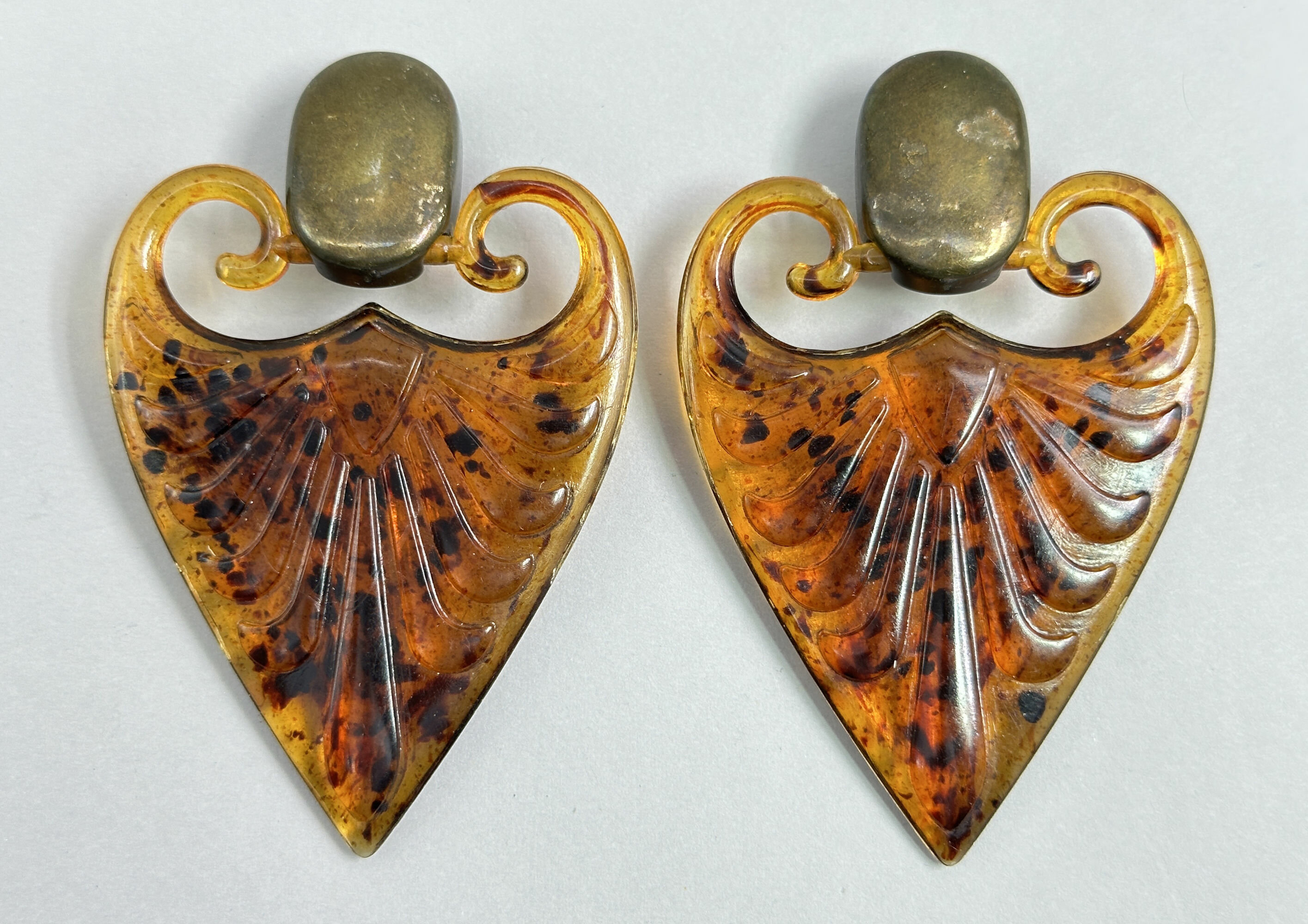
Pair of Italian faux tortoiseshell earrings, 1980s
Price: £20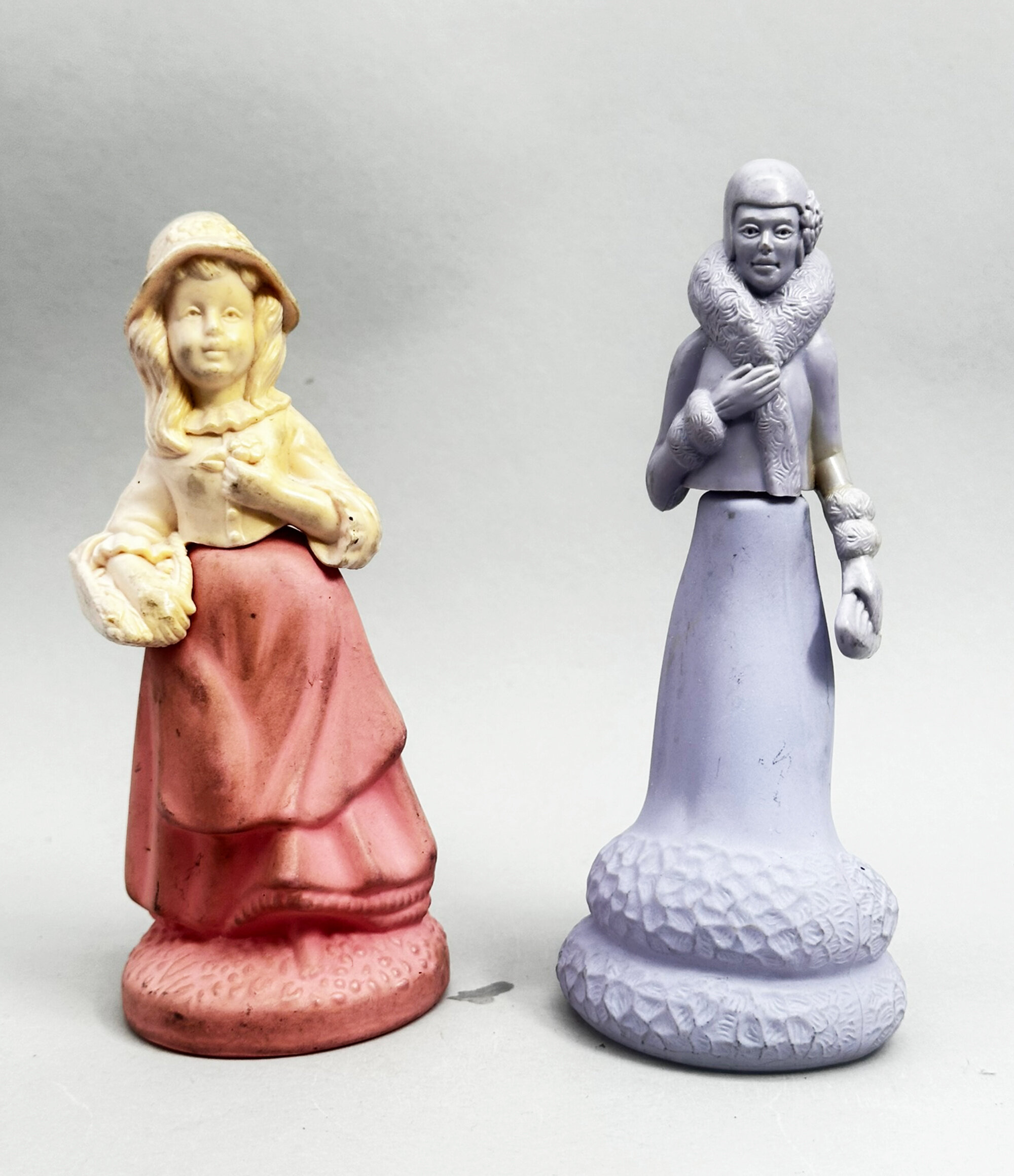
Two Avon Perfume Bottles, Lady and a Girl, 1970s
Price: £20
Charming small amber pendant brooch set as an owl c2000
Price: £15
Japanese silver souvenir brooch c1950
Price: £18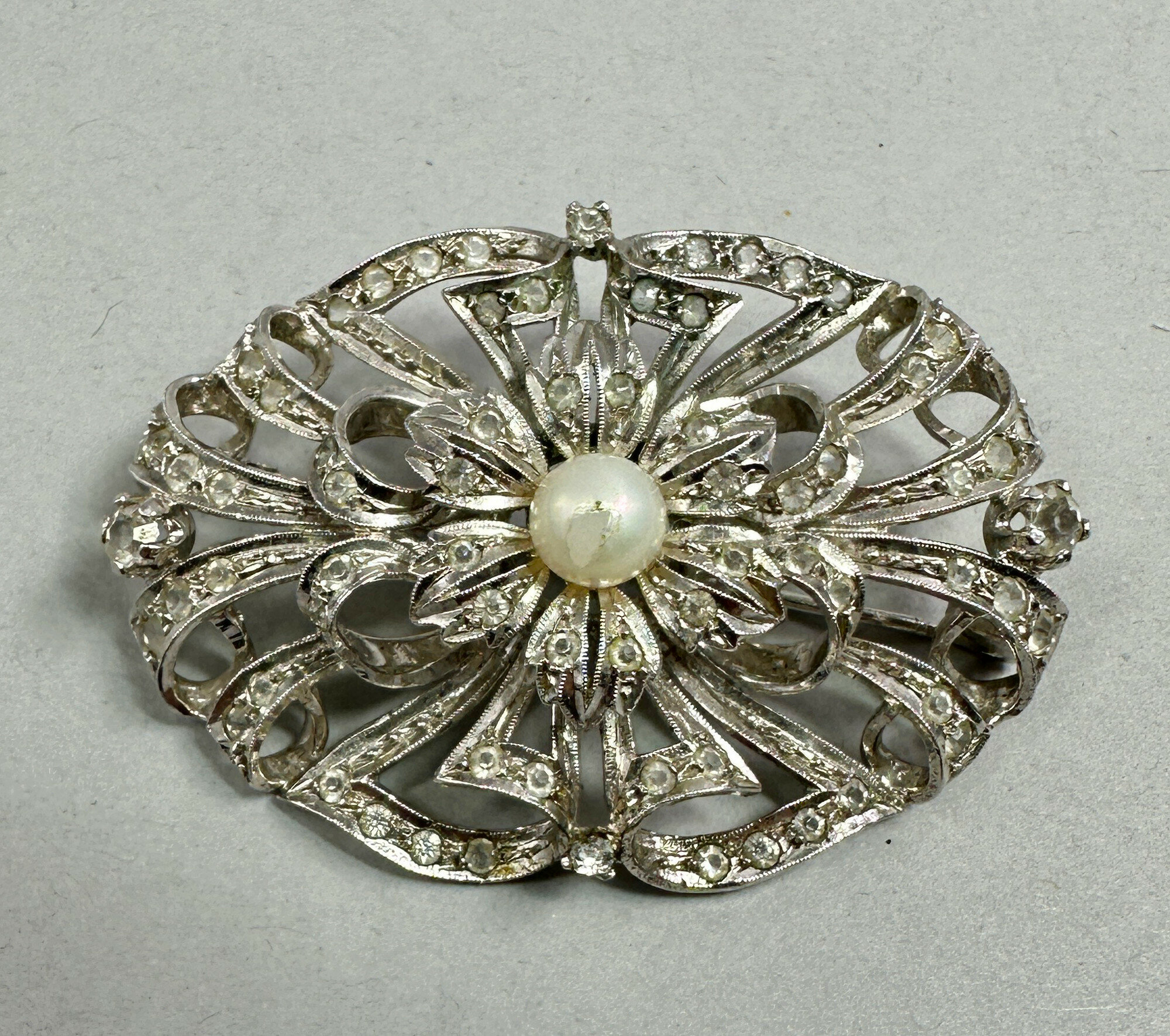
Incredible quality silver and paste Brooch c1950
Price: £35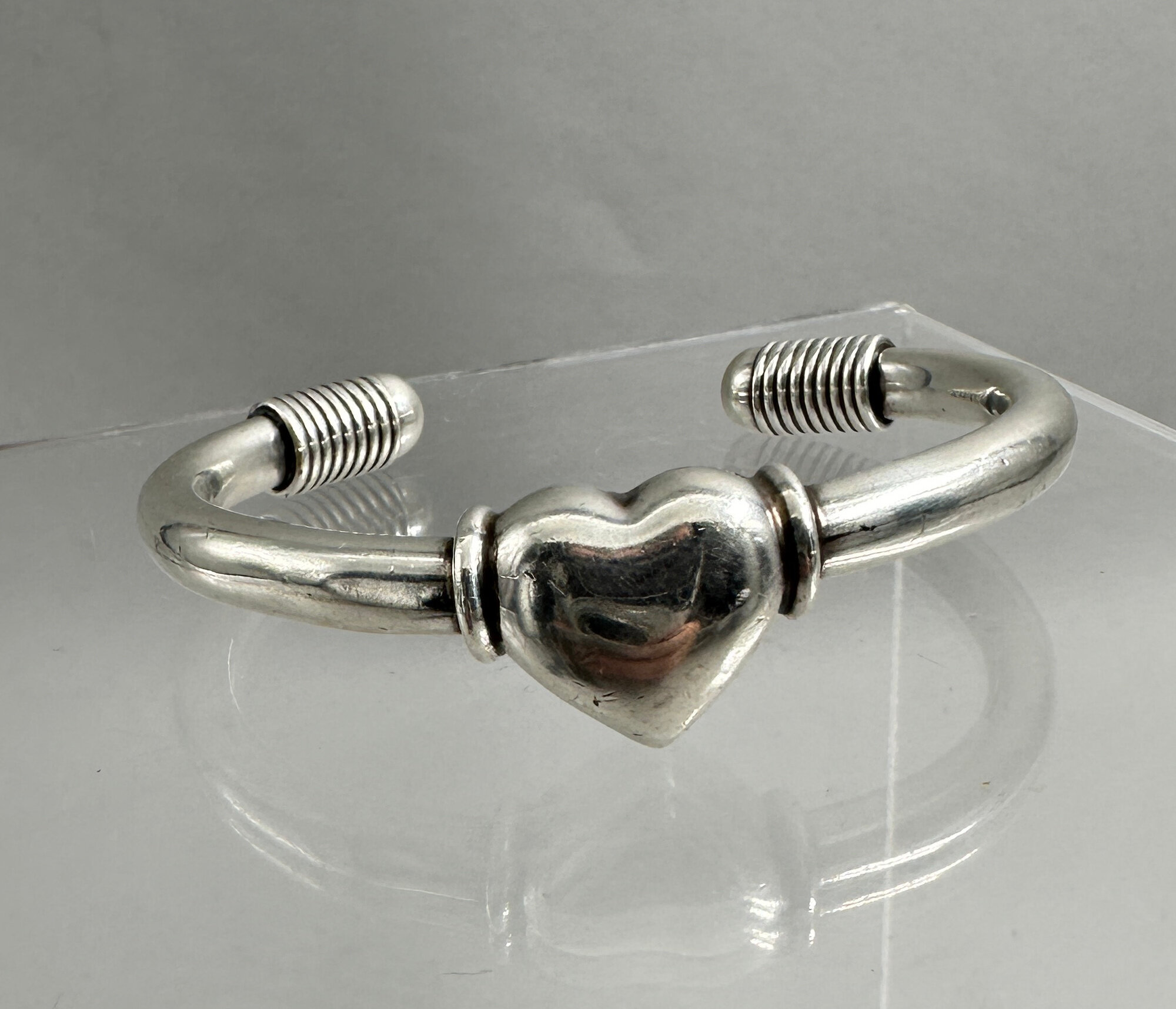
Sweet Taxco heart bracelet c1980
Price: £75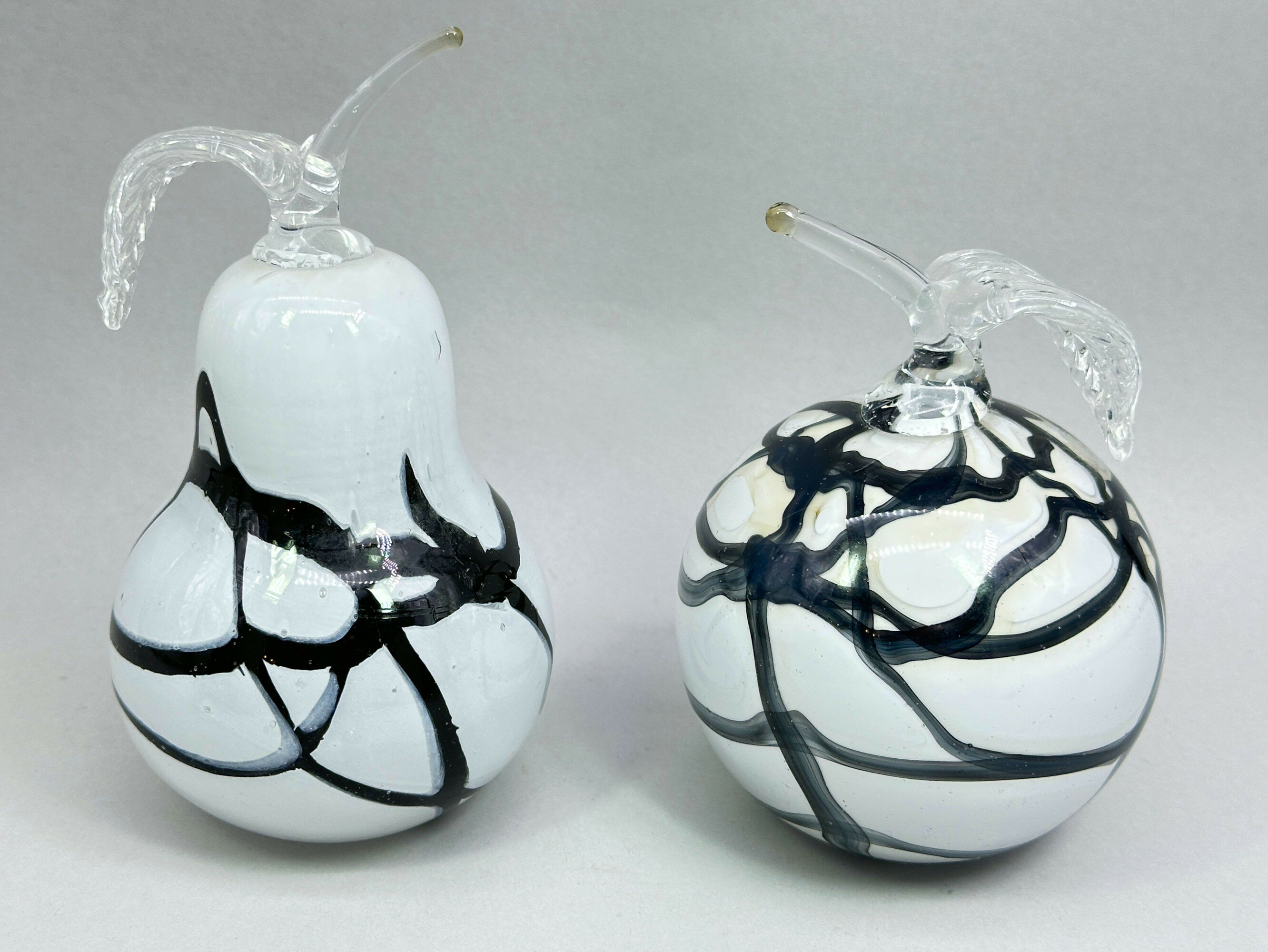
Two Amelia Art Glass Vases, Apple and Pear
Price: £30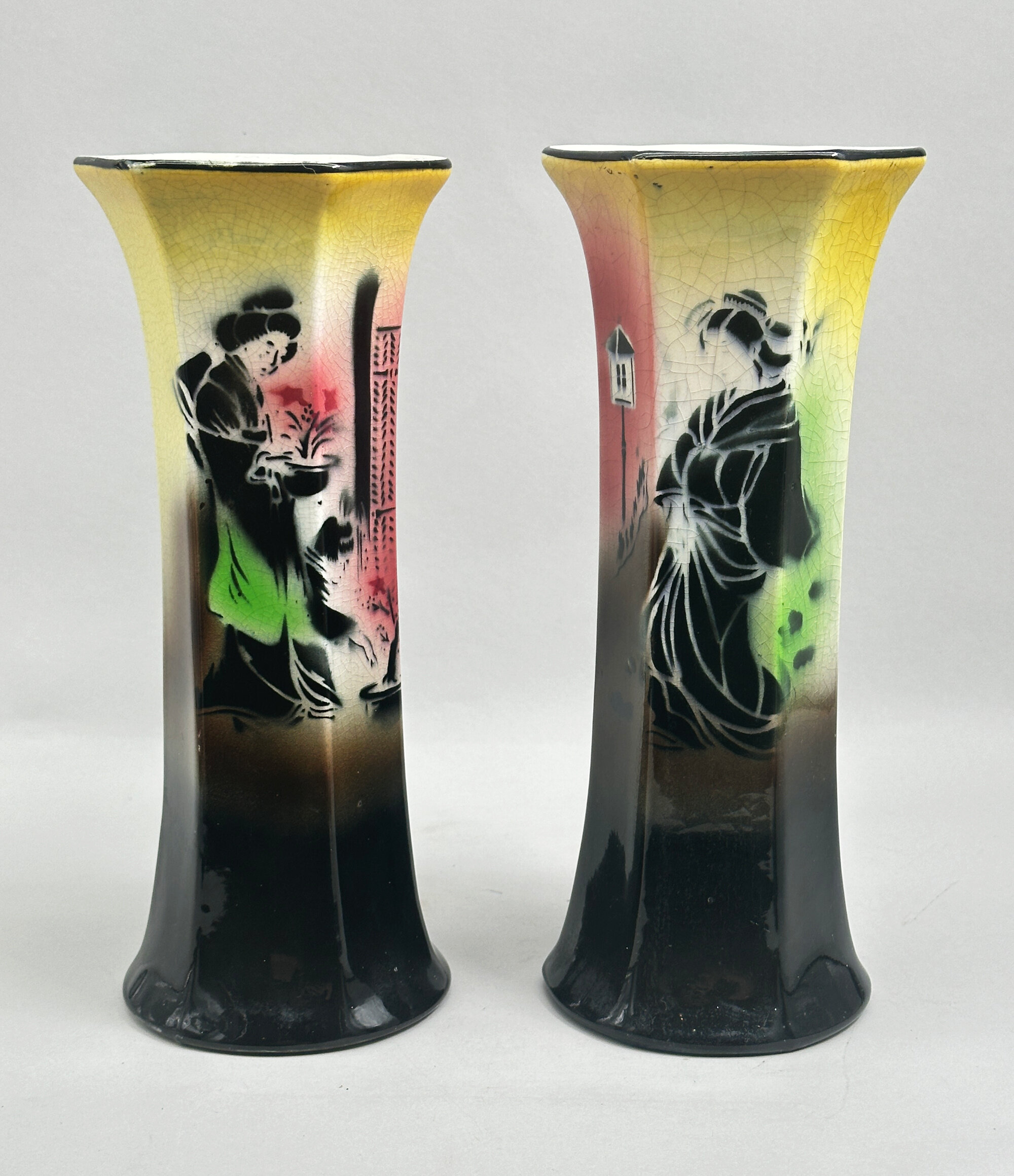
An unusual pair of Art Deco style Japonaiserie ceramic vases, probably French 1920s/1930s
Price: £75
Chinese Bone Netsuke carving of a man holding a musical instrument, early C20th
Price: £25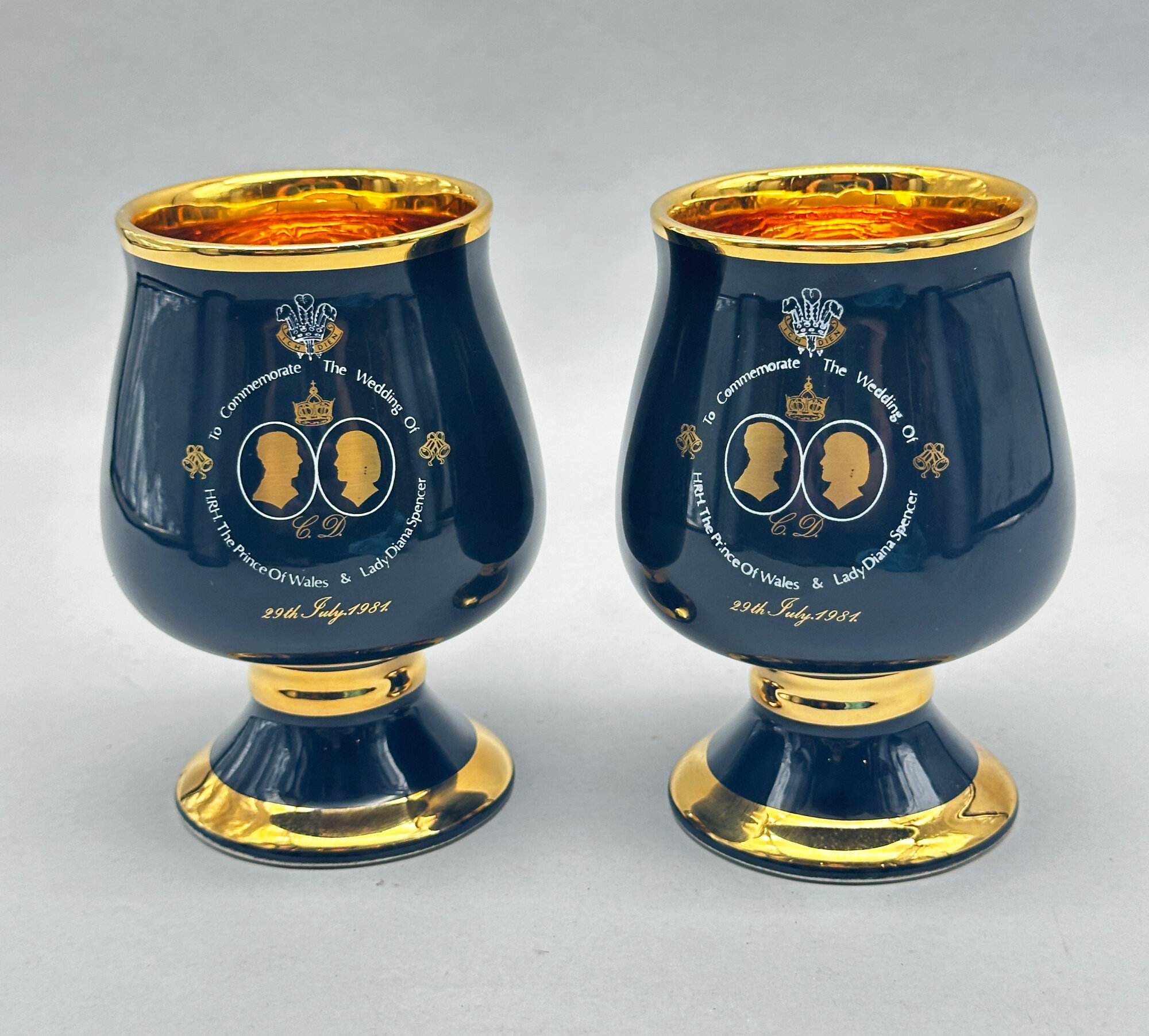
Pair of Ceramic Goblets : the Wedding of Prince Charles and Lady Diana Spencer in 1981
Price: £20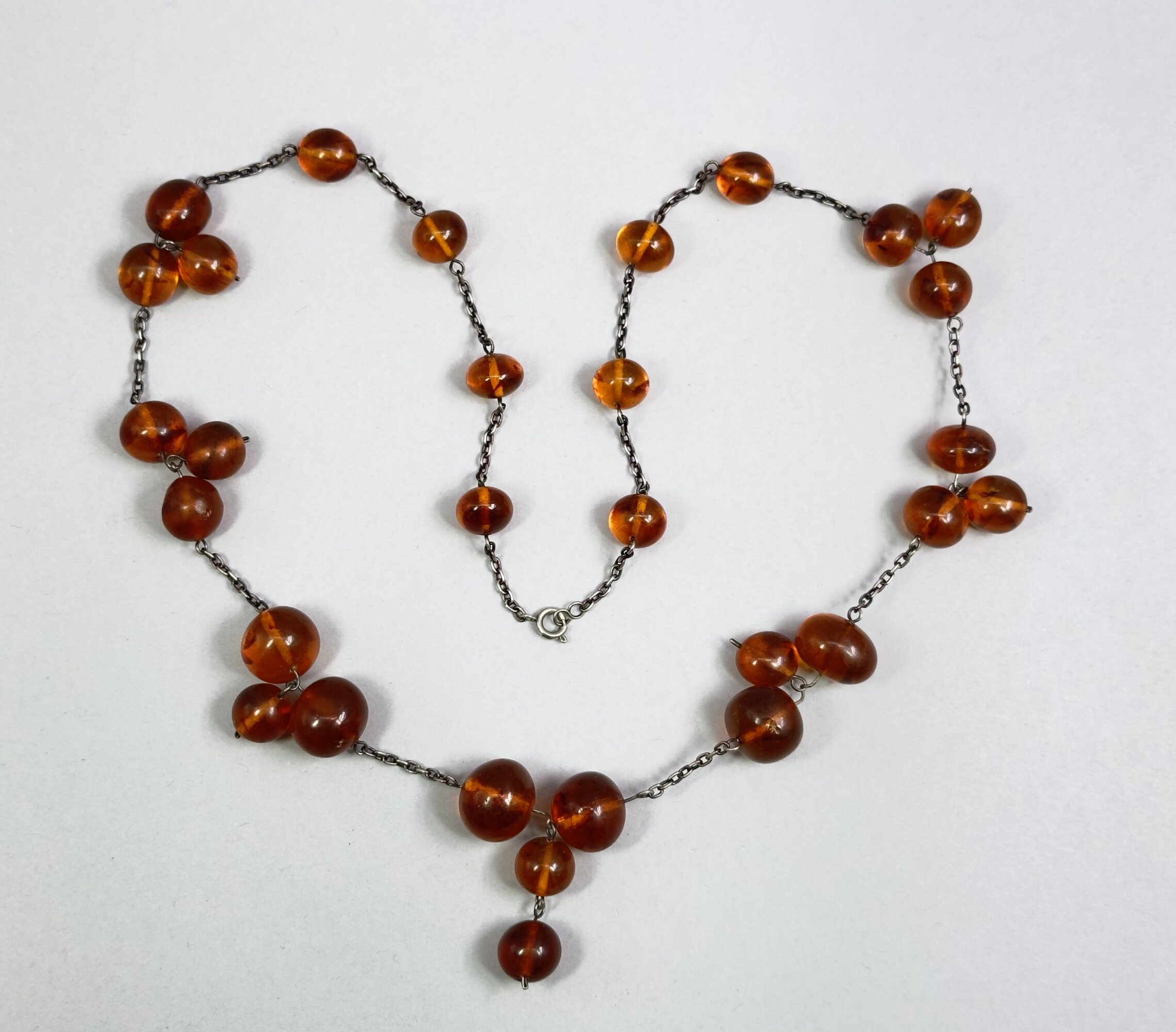
Amber statement necklace with round drops c1960
Price: £50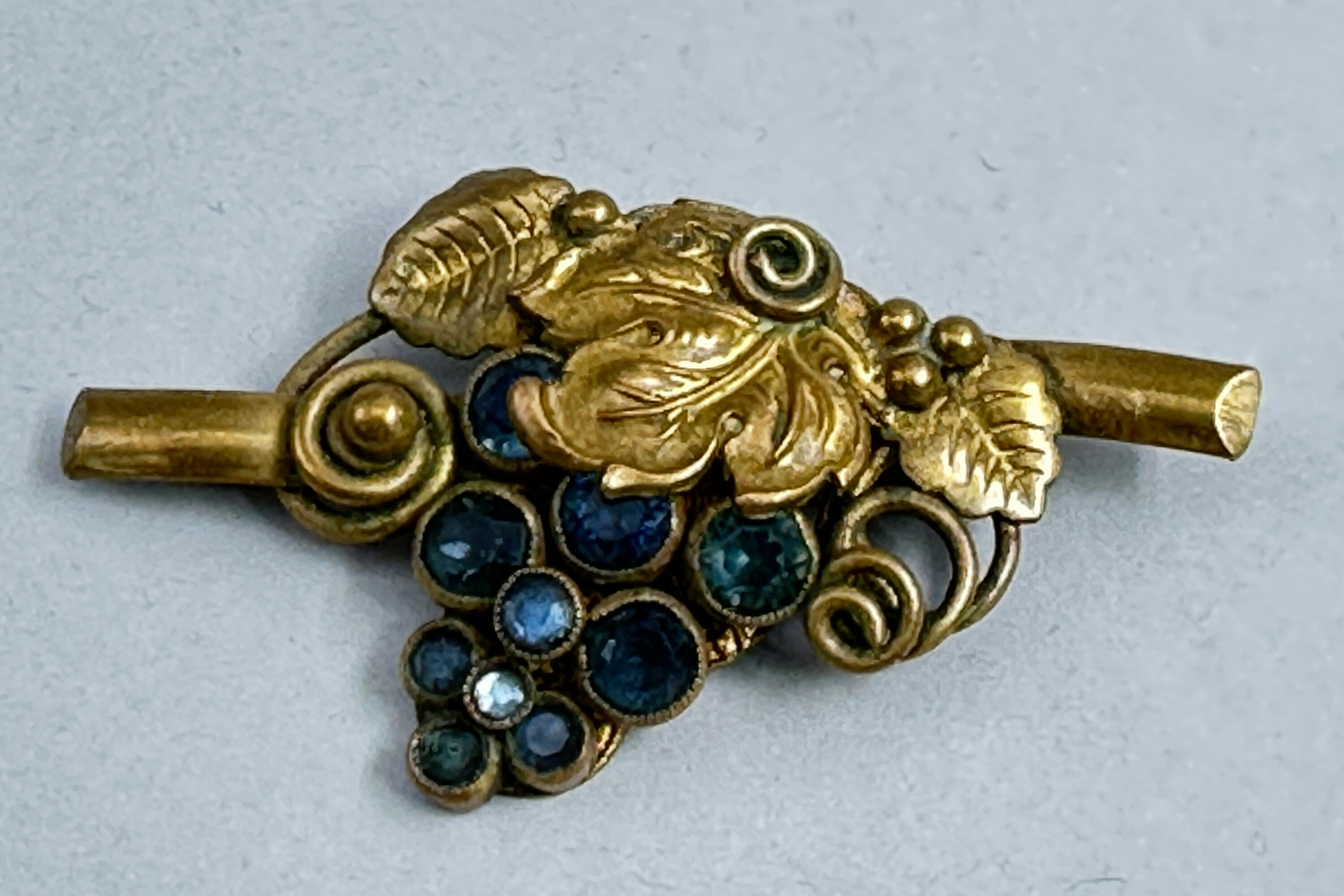
Rare early Czech glass brooch c1920
Price: £45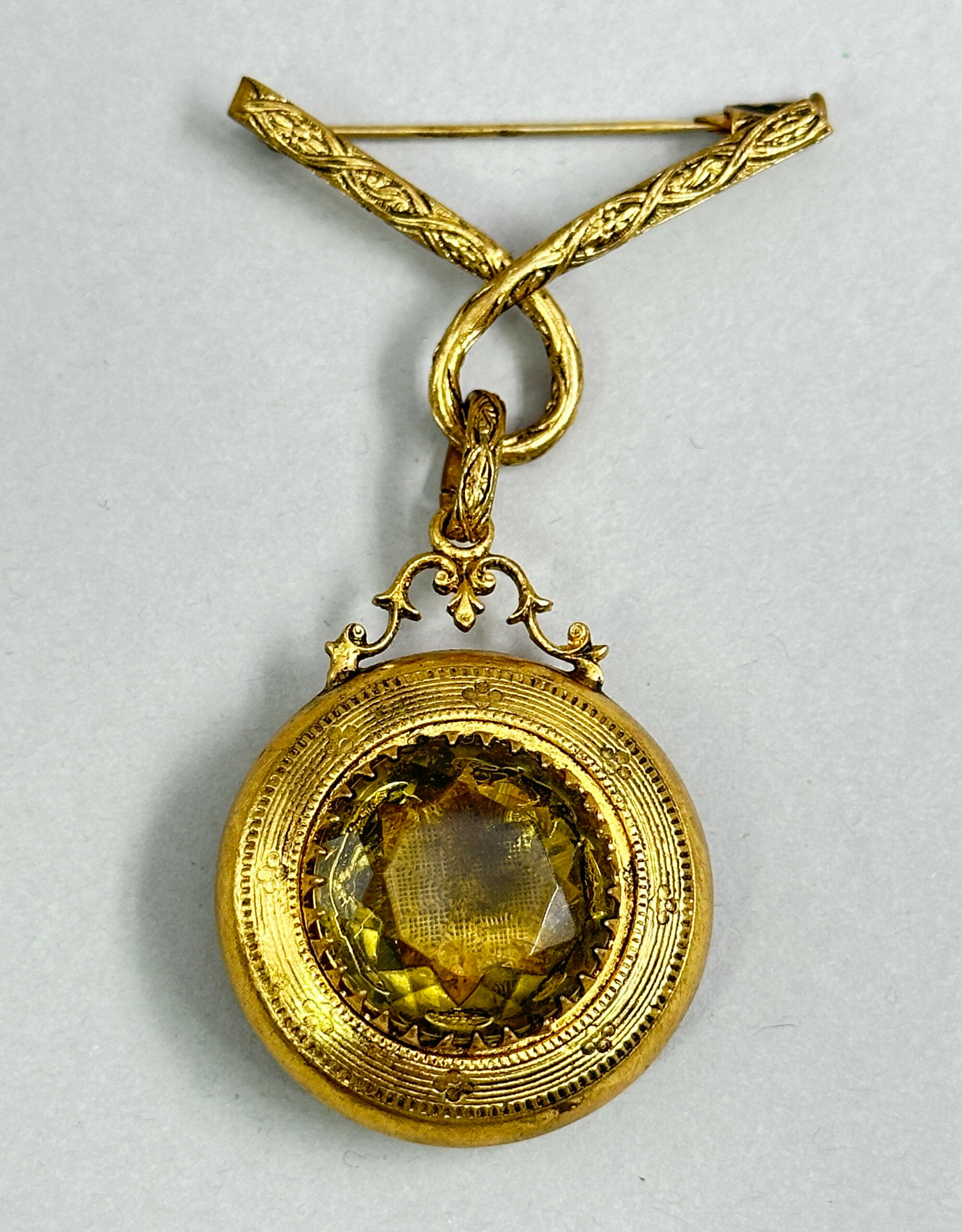
Statement fob brooch with large faux citrine drop c1950
Price: £15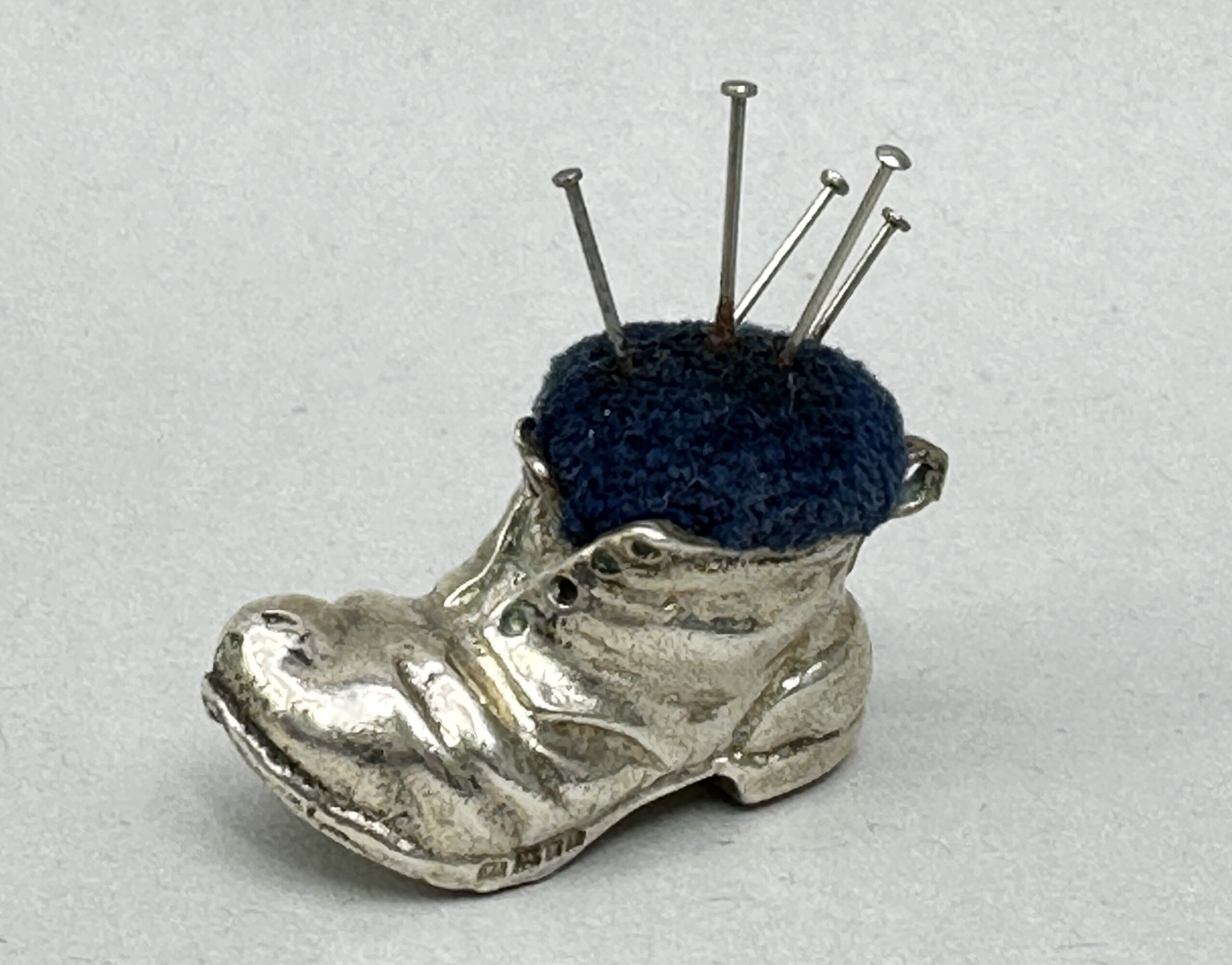
English Silver pin cushion in the form of a boot, London 1991
Price: £75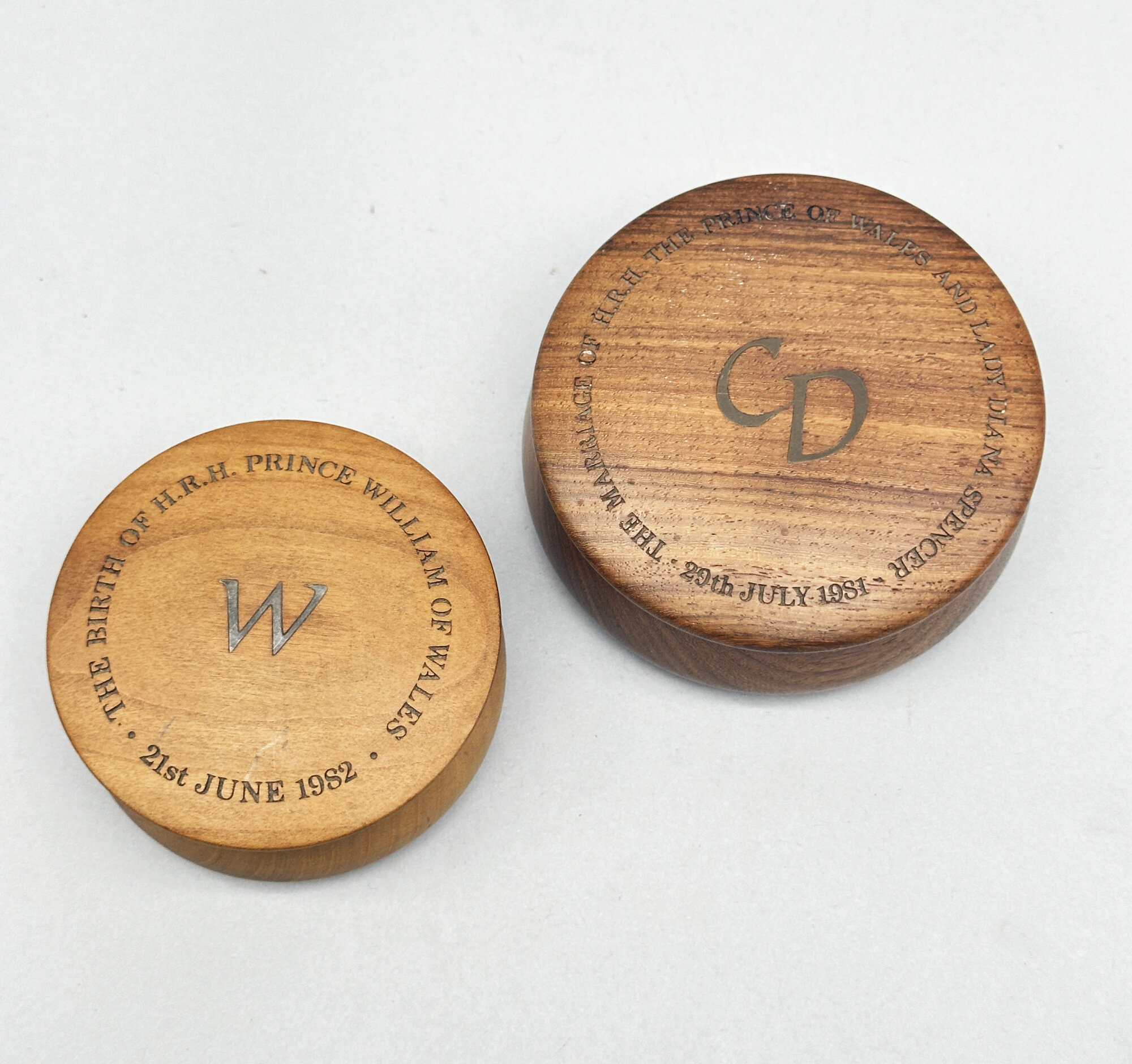
Two Wood Boxes : Marriage of Charles and Diana, Birth of Prince William, late C20th
Price: £15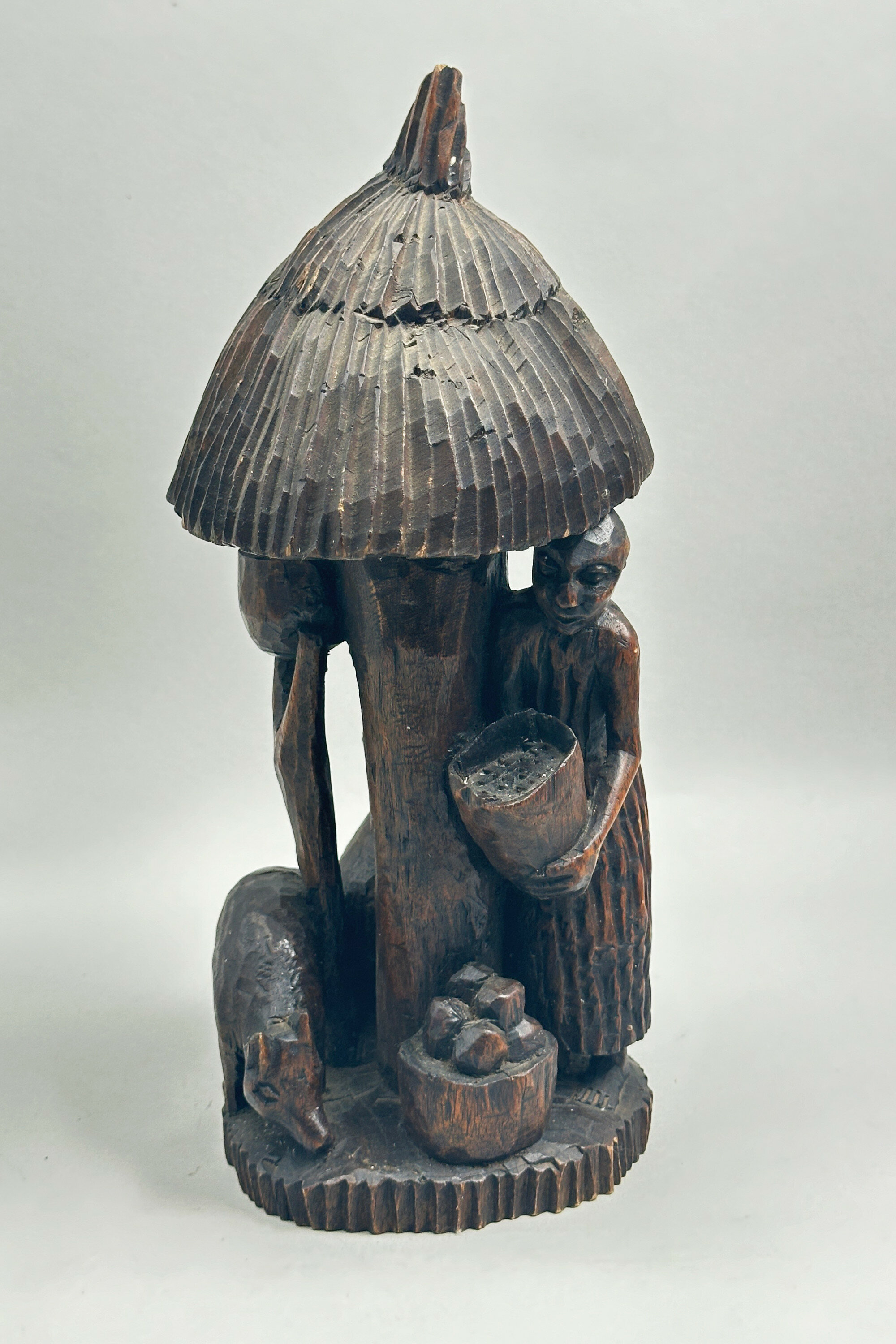
African wood figural group, Guinea c1970
Price: £35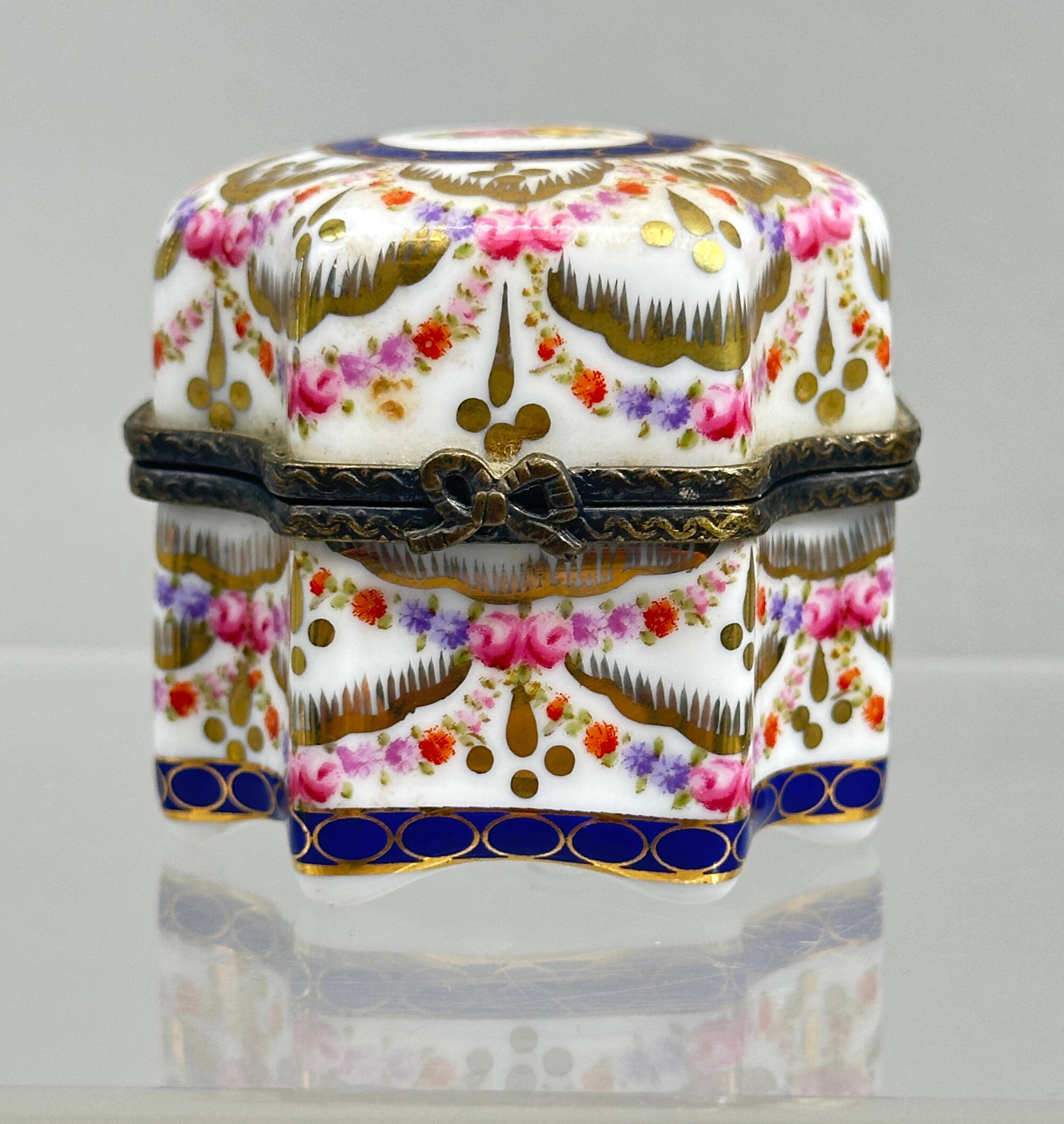
Reproduction Limoges Porcelain Box with Scent Bottles, Modern
Price: £25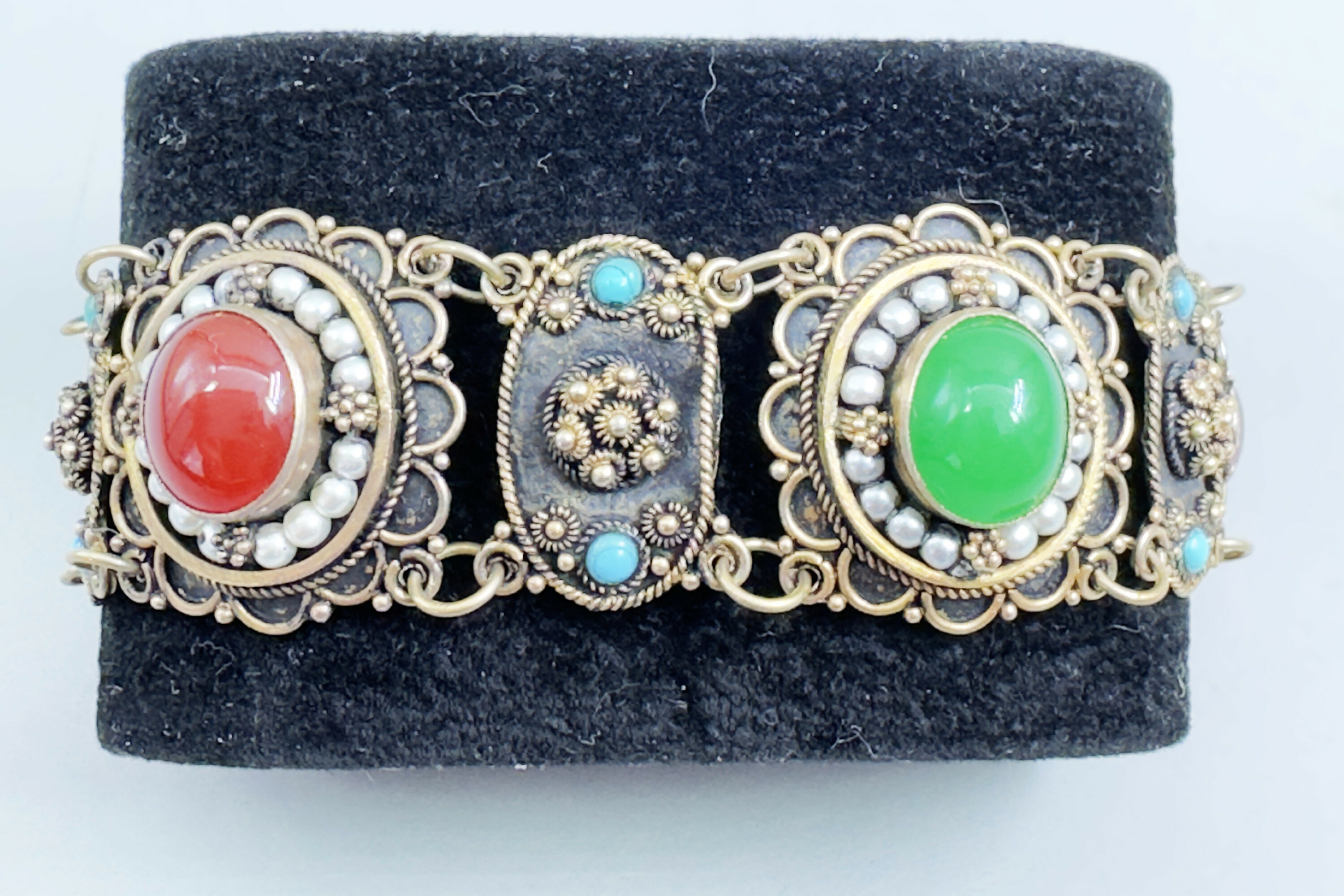
Victorian silver gilt filigree bracelet, Morocco
Price: £95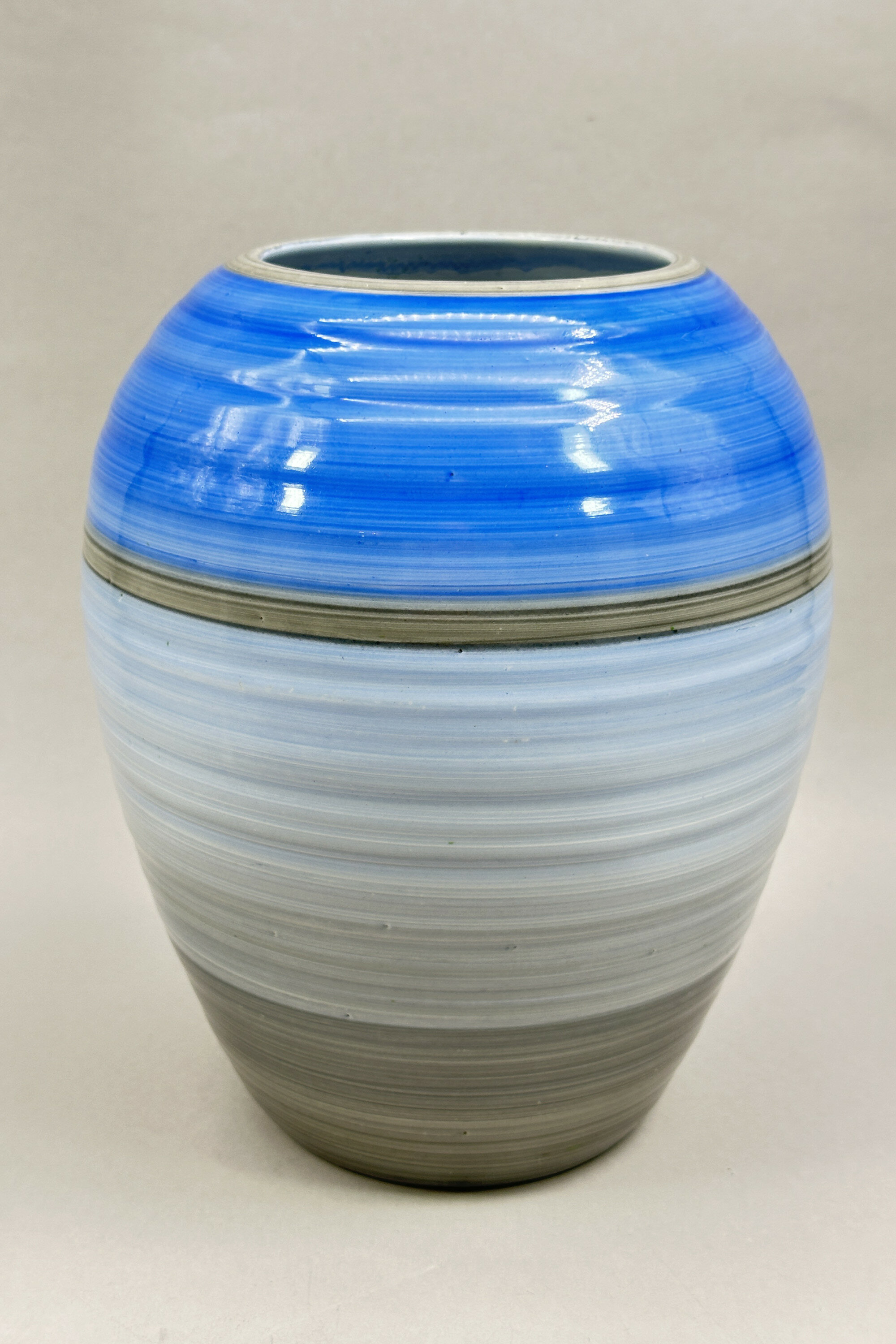
Large Shelley Harmony Ware Vase glazed in blue and grey, 1930s
Price: £75Shelley Potteries, situated in Staffordshire, was originally known as Wileman & Co. which had also traded under the name ‘The Foley Potteries’. The first Shelley to join the company was Joseph Ball Shelley in 1862, and it remained a Shelley family business until 1966, when it was taken over by Allied English Potteries. Joseph’s son Percy employed first the designer Frederick Rhead then Walter Slater who had worked with Doulton. It was Walter Slater’s son, Eric, who initiated the ‘Harmony’ range in 1932, at first with a series of banded designs as here and then with drip ware patterns which became enormously popular. Harmony ware was produced in a wide variety of colours and shapes, the plain ovoid form being typical and reflecting the Art Deco styles of the period, but this example is exceptionally large with a more unusual range of colourings.
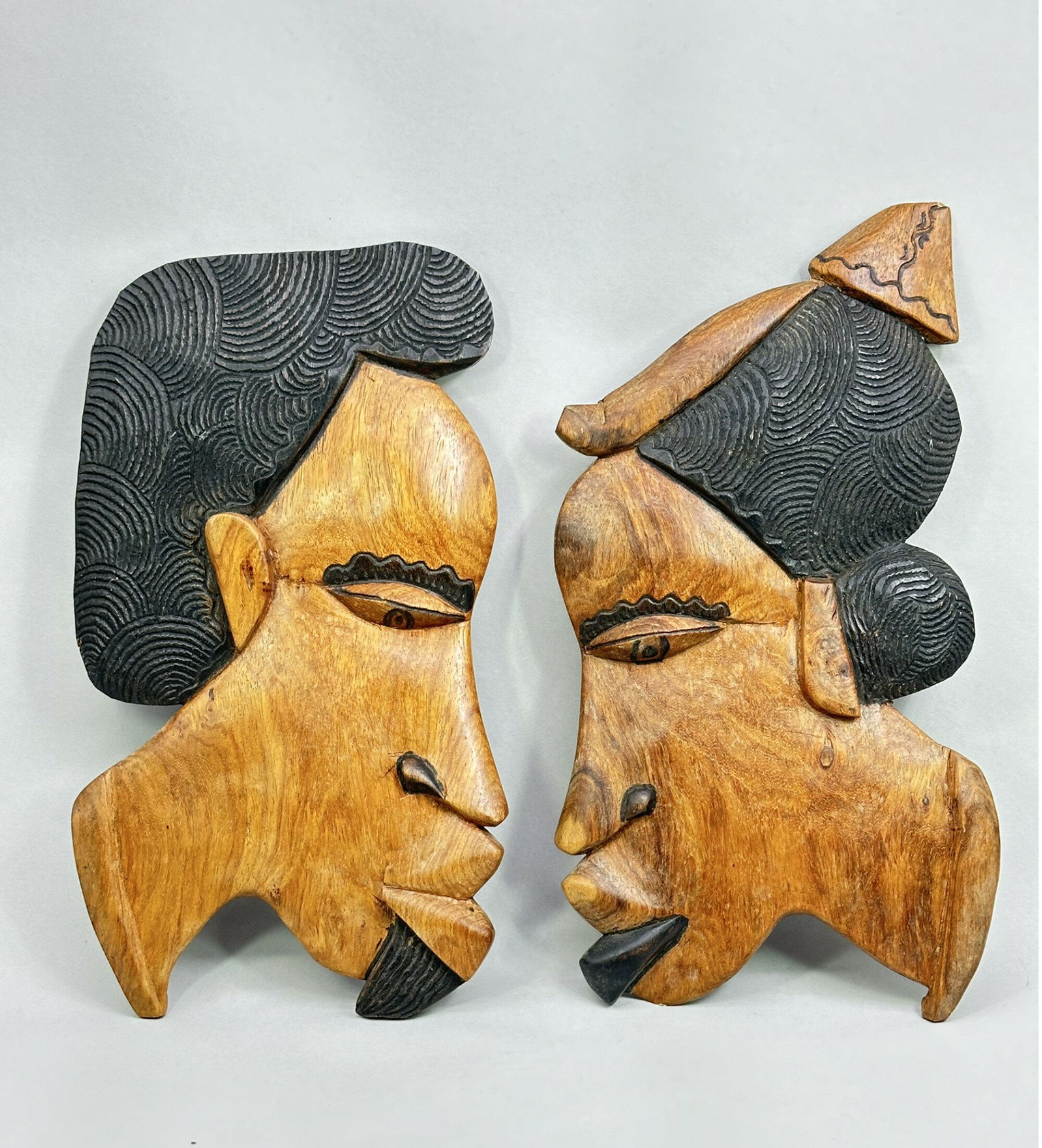
A Pair of African Carved Wood Figure Head Plaques, C20th
Price: £45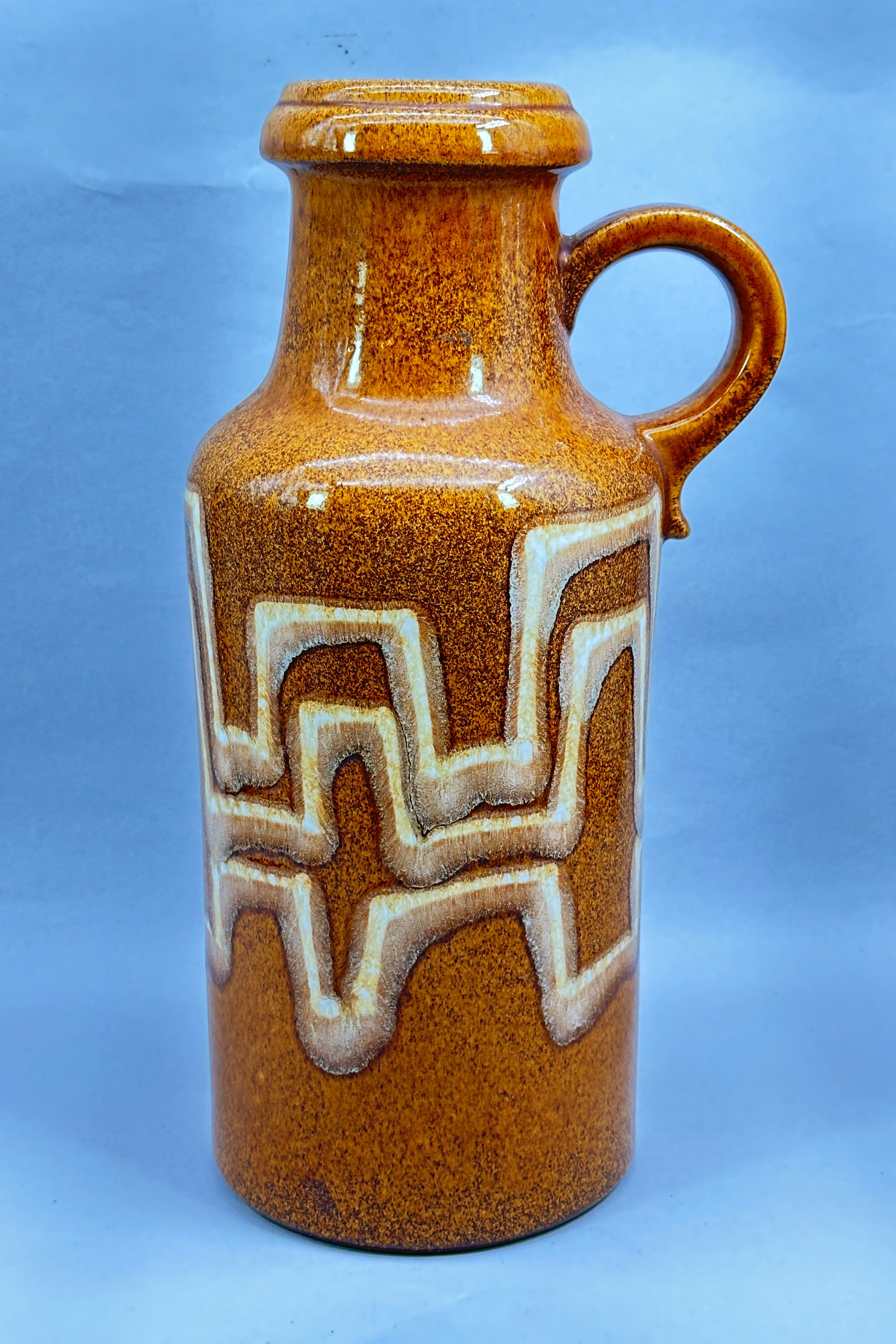
Scheurich West German Vase in Brutalist Style, late C20th
Price: £55Although not marked with their name (few pieces were until the later years of production) this vase has all the hallmarks of the Scheurich factory founded in 1954 by Alois Scheurich who had been a partner before then in the firm ‘Scheurich and Greulich’ (S&G) since 1927. While founded later than many of its competitors, Scheurich grew to become the principal exporter of West German ceramics through until the 1980s and beyond, making vases in a wide variety of shapes and designs. This piece is rather more austere than many of their productions and the clean lines of the form combined with the rather stark decoration perhaps make it particularly suitable for a contemporary interior.
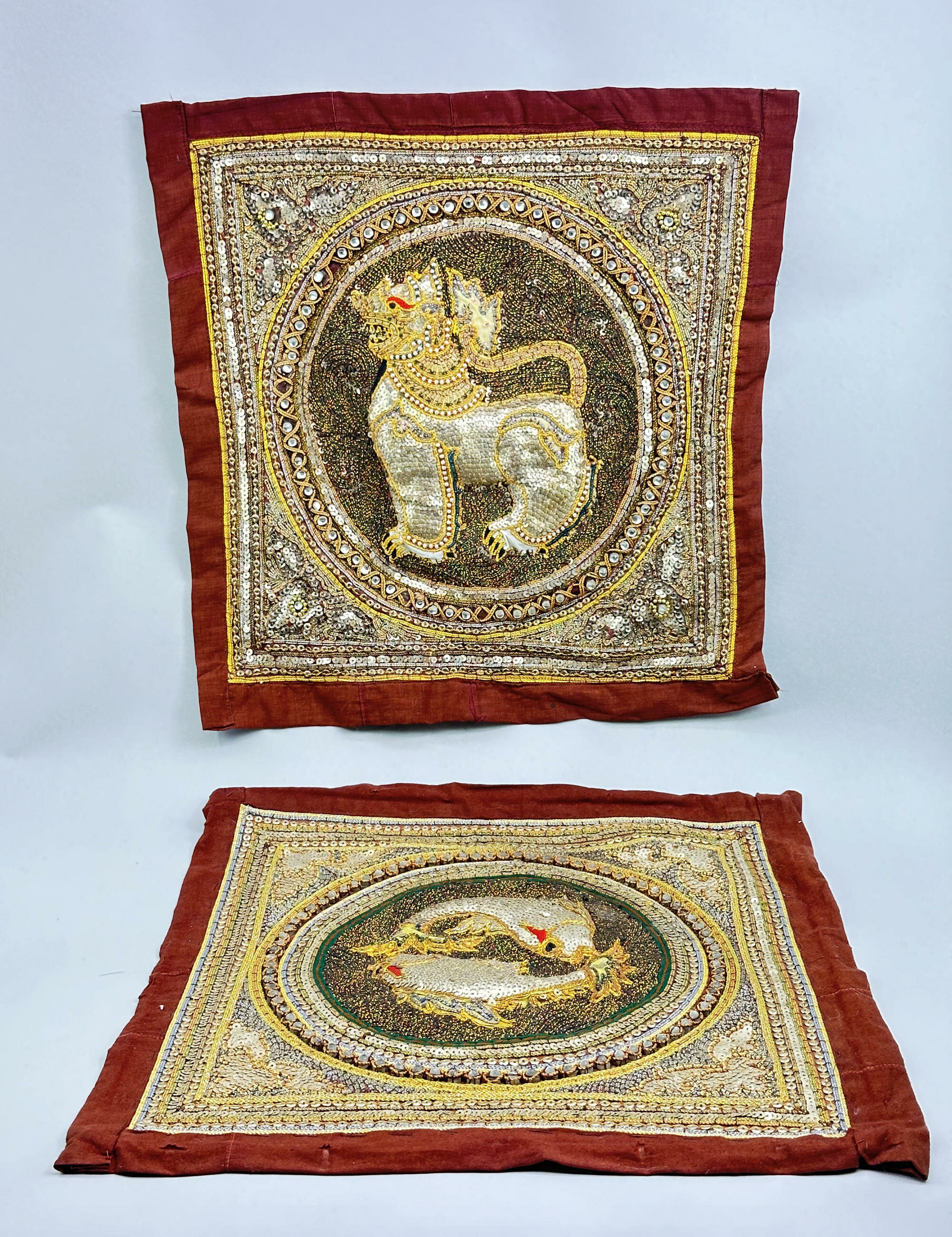
Two Burmese Textiles, mid C20th
Price: £55The distinctive style of embroidery and applied work here is typical of Burmese work known as ‘Kalaga’ which means ‘curtain’ in Burmese and is used to refer to heavily embroidered appliqué tapestry sewn with a technique called ‘shwe gyi do’. First produced around 150 years ago, Kalagas are generally linen, silk, cotton or velvet background fabrics embellished with sequins, embroidery, beads, coloured stones, tiny pearls, coral, braids and metal threads, the choice of materials depending in part on the client’s budget. Cotton padding was used to produce the ‘3D’ effect seen here and on many other examples of the work. The elaborate decoration meant that some of the larger pieces could take many months to produce. These two panels are an excellent example of the genre with the lavish use of gold thread. They have survived in excellent condition and can decorate an interior today in the same way that they graced the interiors of the makers’ contemporaries. Dating is difficult and a mid C20th attribution is probably sensible but an earlier period of manufacture is quite possible.
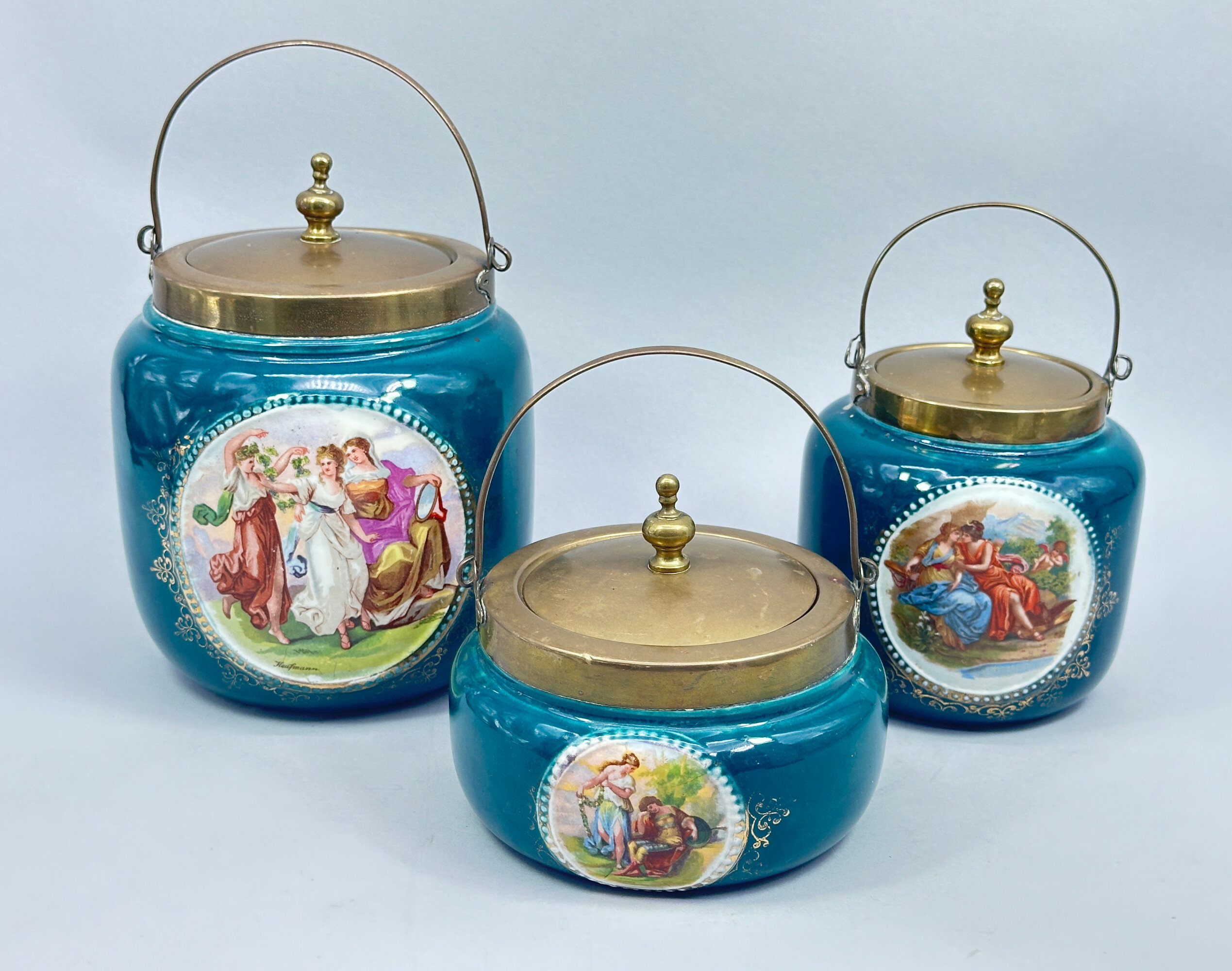
Set of Three Empire Porcelain Company Biscuit Jars circa 1900
Price: £120The Empire Porcelain Company was established in 1896 at the Empire Works in Stoke Road, Hanley, Stoke on Trent. A wide range of pottery and porcelain was subsequently produced until the factory’s closure in 1967. The various marks include the initials EPC, EP or the word Empire. The form of the mark seen here occurs on the earliest pieces made between 1896 and 1912. Blue ground pieces with mythological scenes were produced in a variety of forms during this period, some decorative, such as ornamental vases, and some more practical, as here : modest but graceful accessories for the Edwardian drawing room.
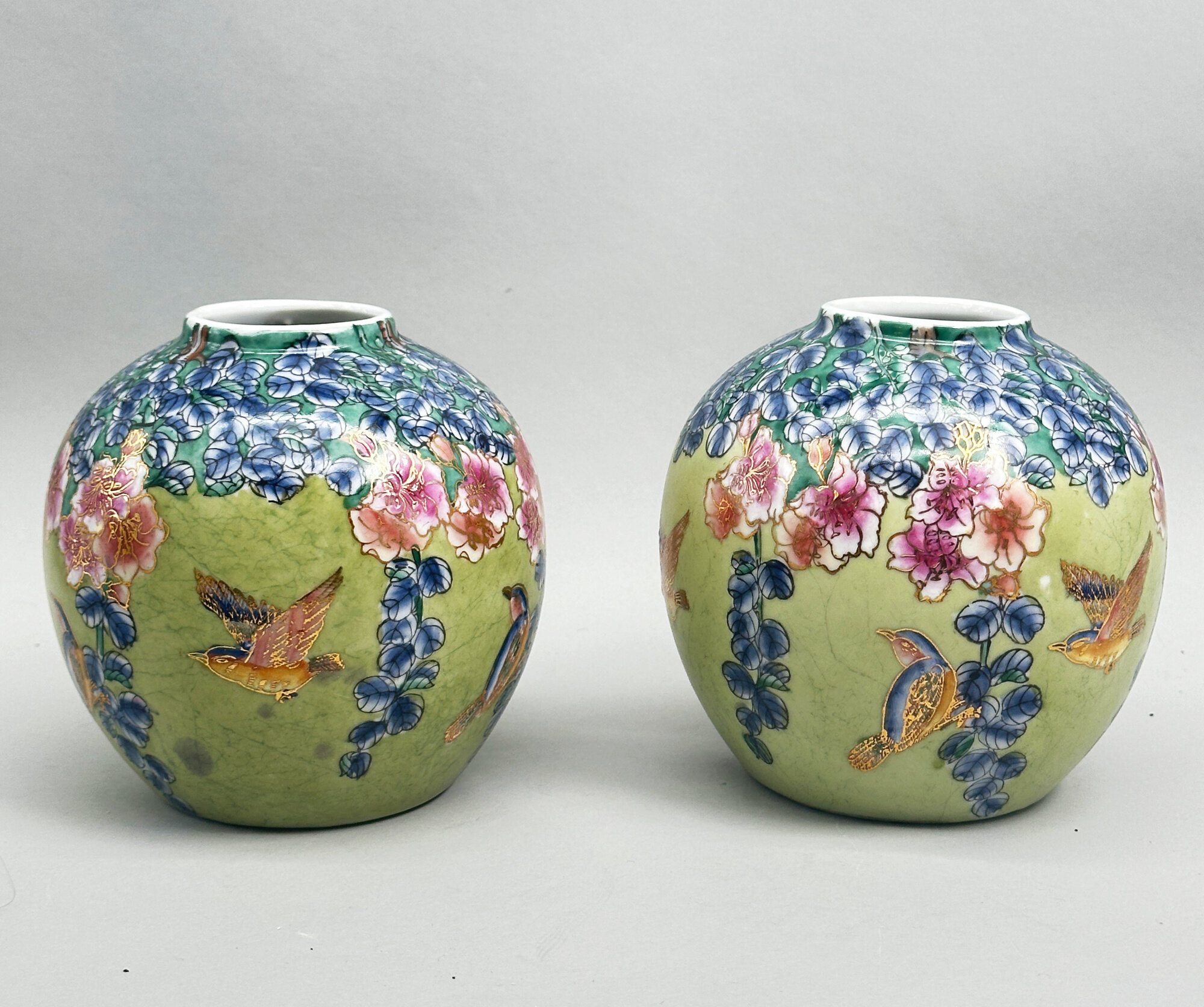
Pair of Chinese Ginger Jars decorated Birds and Flowers, late C20th
Price: £45